Dutch 177: Summer Sessions Travel-Study Course to the Low Countries: The Netherlands and Belgium
Don't wanna be here? Send us removal request.
Text
Travel Blog Post #19: 26/07/18
Hallo!
I cannot believe how fast time flies! It feels like just yesterday that I stepped out of Amsterdam Airport Schiphol and began my four-week adventure in the Low Countries. When I first learned about this study abroad program over winter break earlier this year, it seemed as no more than another one of hundreds of summer opportunities I could partake in while away from Berkeley. Learning that this study abroad course could also satisfy the Arts and Literature Breadth required for graduation from the College of Letters and Science only peaked my interest more. However, what truly pushed me into enrolling in the program was an insatiable desire to travel, explore the world, and hopefully learn something along the way! Prior to participating in this course, I knew relatively little about the Low Countries besides their representations in pop culture. For example, a mentioning of the Netherlands immediately brought to mind quaint images of agricultural life, peaceful windmills, and a plethora of bicycles! Of course, one also thinks of incredibly liberal values and tolerance when discussing the Netherlands. Furthermore, my thoughts on Belgium could be summarized in the following four words: chocolates, waffles, fries, and beer! Although I was able on several occasions to satisfy my interests in the aforementioned clichés, such instances were more the exceptions rather than the rules when it came to the Low Countries.
To begin with, since the study abroad program began in the Netherlands, my first exposure to the realities of the Low Countries began there. Beyond bikes and canals, I increasingly began to realize the true complexity of this rather small Western European nation. In addition to exploring the American perception of the Netherlands that I was already quite familiar with, I also discovered the Dutch perception of the United States through several conversations with locals. For instance, I learned about how opinionated yet conventional Dutch people can be in everyday life. Moreover, I also discovered the limits of the Netherlands’ famous reputation for tolerance following news of debates among Dutch lawmakers to make the covering of the entire face against the law. Such legislation is clearly aimed towards the Netherlands’ Muslim population, especially within the context of the string of terror attacks that have taken place across Western Europe in recent years. Even though I found the tremendous amount of Dutch art, culture, and history that I encountered to be incredibly interesting, discussing contemporary issues (like the one mentioned above) within a global context has left the largest impact on me after exploring both the Netherlands and Belgium.
Second, I was extremely elated to see that popular clichés surrounding Belgian chocolates, waffles, fries, and beer remained entirely accurate! At this point, I have largely lost count of the amount of gluttonous foods I have consumed over the course of the two weeks the program spent in Belgium. However, aside from the joys of Belgian cuisine, I was particularly fascinated by how noticeably different the Dutch and Flemish were from one another, despite their common language. For example, in comparison to the more structured and organized Dutch, the Flemish behaved in a more relaxed manner that I would expect to see among the populace of most Southern European countries. In addition, the devoutly Catholic Flemish pursue religion differently from the Protestant and perhaps more secular Dutch, according to my own observations.
Nevertheless, visiting both nations has been a tremendous pleasure for me and I look forward to the day I return, hopefully with a visit to the third Benelux country: Luxembourg!
Until then, tot ziens!
youtube
1 note
·
View note
Text
Travel Blog Post #18: 25/07/18
Goedenavond!
This morning, the entire study abroad group awoke to a wonderful surprise. Because it had rained in Antwerp overnight, the city had significantly cooled down by the time we left the hostel and began walking to Antwerp’s central train station. It was definitely a much-needed gift and we immensely appreciated such weather as a blessing!
After an approximately forty-five-minute train ride, the study abroad group and I arrived in the beautiful Flemish town of Ghent, one of the best-preserved medieval towns in all of Europe! From Ghent-Dampoort Station, we walked to the city center together and were soon met by Walter Prevenier, Emeritus Professor in History at Ghent University and former visiting professor at UC Berkeley.
At Ghent’s medieval belfry tower, Professor Prevenier introduced us to the significance and power of Ghent during the Middle Ages and provided an incredibly informative amount of context regarding our surroundings in the city. Soon, we embarked on a splendid tour of the city and spent a great deal of time admiring the town’s spectacular medieval architecture. In many ways, the beauty of Ghent seemed to rival that of Brugge!
Following the city tour, we were given approximately ninety minutes to enjoy lunch. I myself chose to have a mouthwatering bowl of pesto pasta and side salad at a restaurant near Ghent’s ornate city hall. Because the chocolates I bought in Brussels yesterday melted in my backpack as a result of Belgium’s endless heat wave, I also made sure to stop by a local chocolatier for a tasty dessert afterwards.
After lunch, the study abroad group and I paid a visit to the Gothic St. Bavo’s Cathedral near the city center and viewed one of the most noteworthy paintings from the European Middle Ages: Jan van Eyck’s The Mystic Lamb. This Flemish masterpiece was far larger and more impressive than I had anticipated, and I was obliged to spend nearly ten full minutes around the collection of paintings in order to more fully appreciate them. Aside from The Mystic Lamb, the cathedral also included something I had not previously observed in Flemish Catholic churches: stacked family crests and even a few portraitures of the city’s wealthiest and most powerful families. Such an observation connects closely with the fact of city’s notable patricians’ “mansions or stenen” (“Ghent and the Gate to Hell,” 2007) being located around the church.
Following our visit to the cathedral, the study abroad group and I visited the Gravensteen, the twelfth-century castle within which resided the Counts of Ghent during the Middle Ages. Although the museum did not include very many curated exhibits, the act of simply walking about the historic castle walls and interior rooms felt incredibly educational in itself.
After an absolutely exhausting day of walking along Ghent’s unforgiving cobblestone streets in the swelteringly hot Belgian sun, the vast majority of the study abroad group (including me to a certain extent) felt that a lengthy evening spent with host families seemed more like a chore than a relaxing activity. However, my mood immediately changed after I was introduced to Yvette and Guido, two wonderfully cheerful Flemish octogenarians who welcomed us both warmly and wholeheartedly. Within minutes of our introductions to one another, Yvette was explaining to my two friends and I the details of the artworks present in her art gallery as well as the pioneering work she completed in the budding Belgian fashion industry nearly five decades ago. For his part, Guido was always around to insert jokes and light-heartedness into any conversation! Yvette and Guido truly embodied the Burgundian lifestyle so many Belgians hold dear.
I hope their path crosses with mine in the near future.
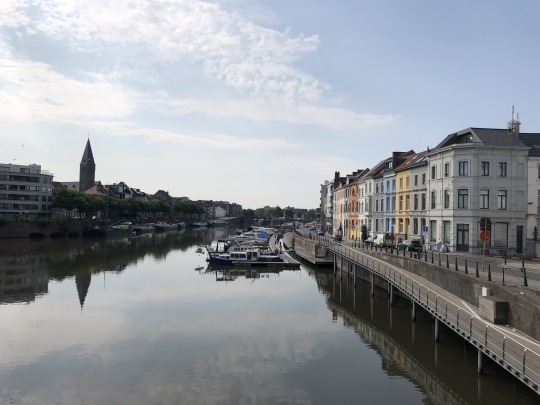
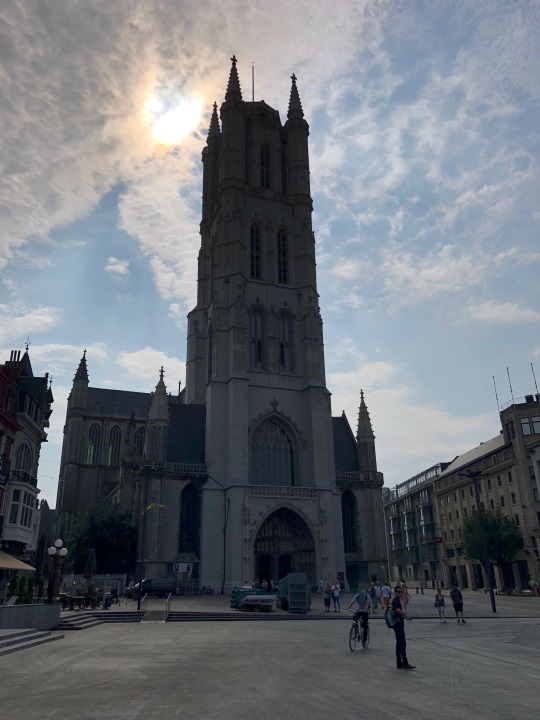
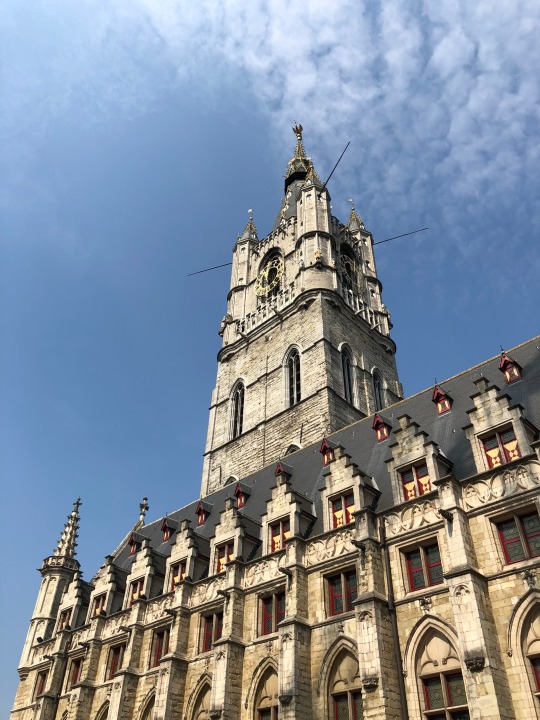
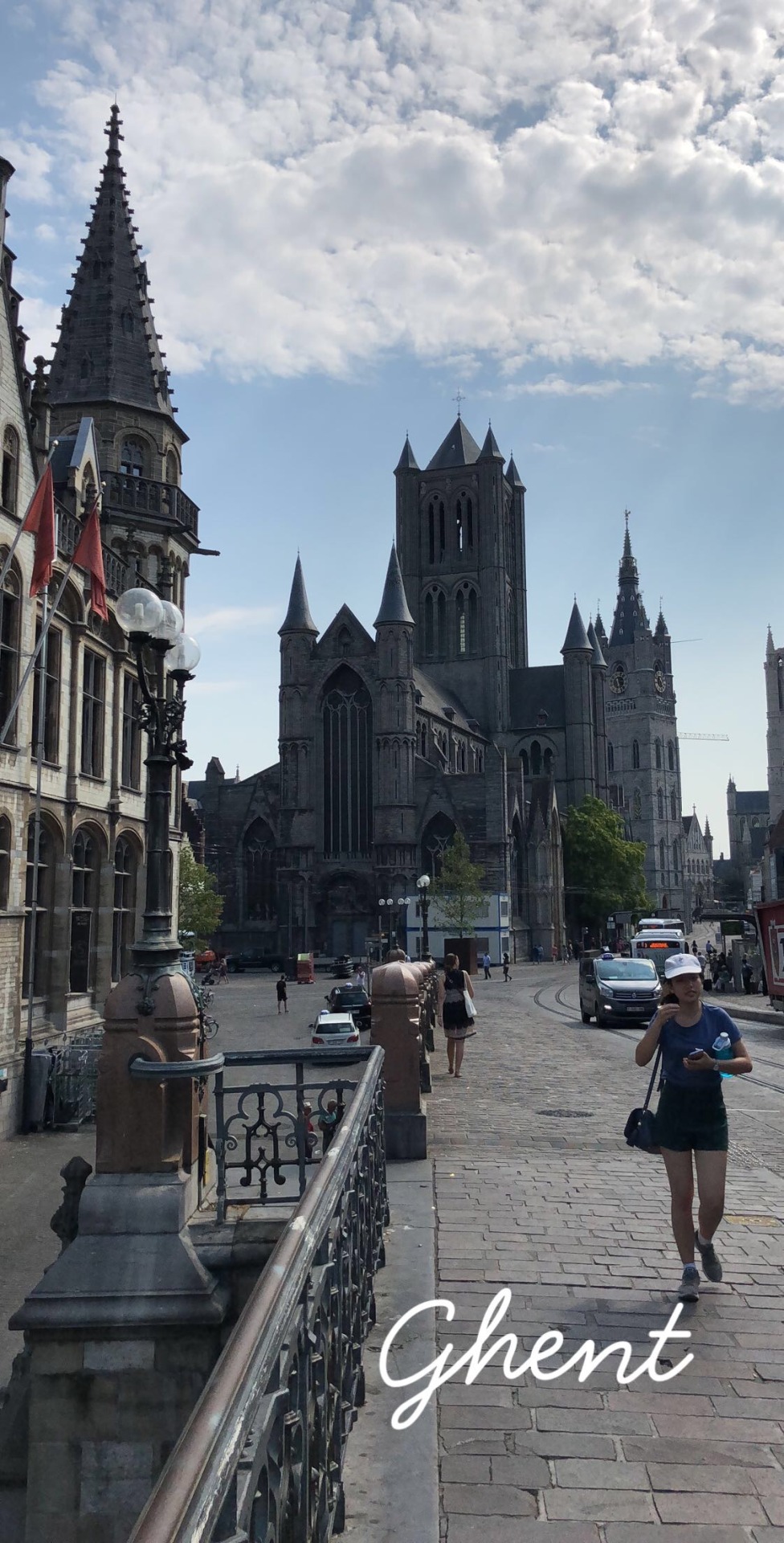
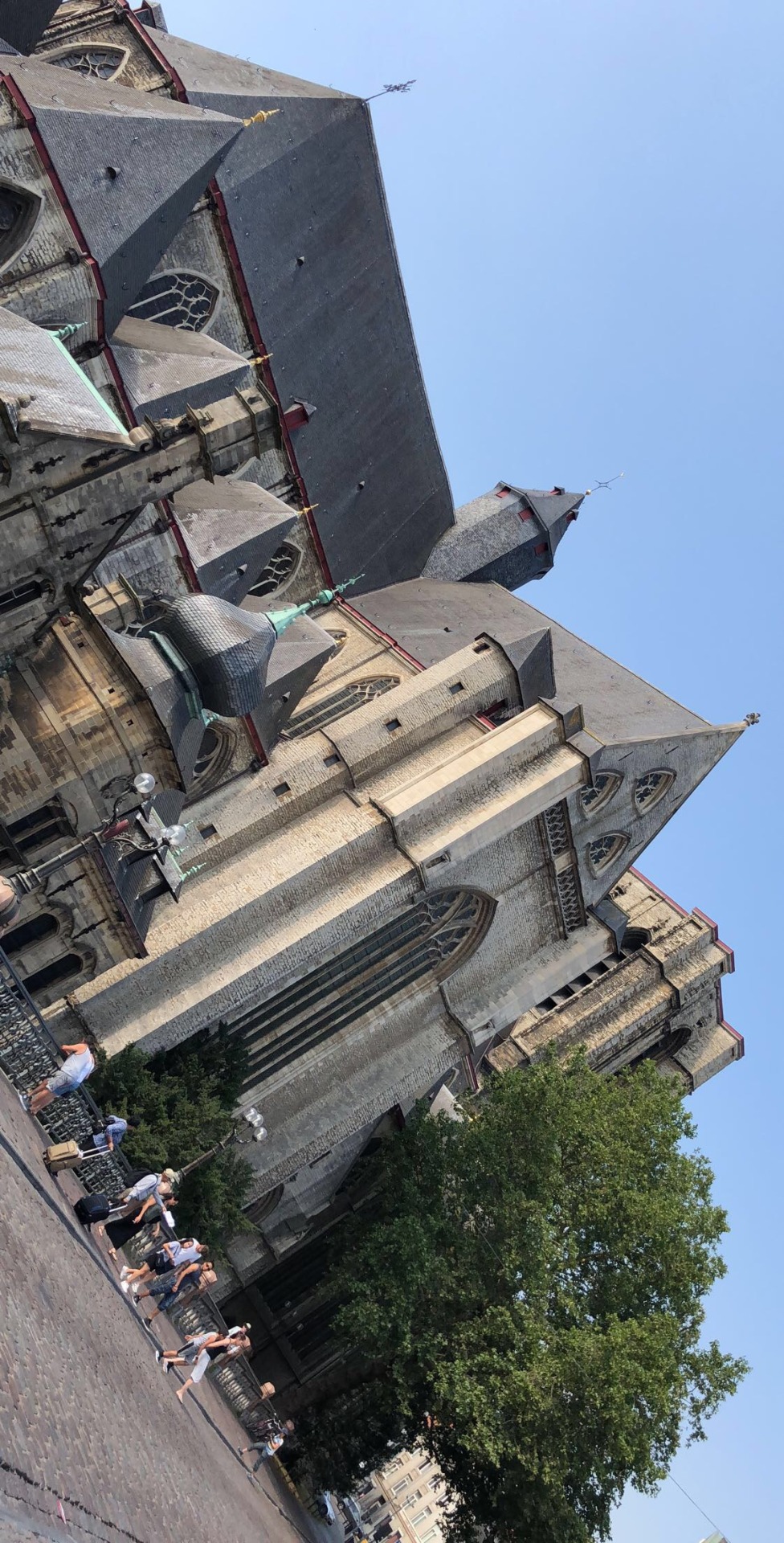
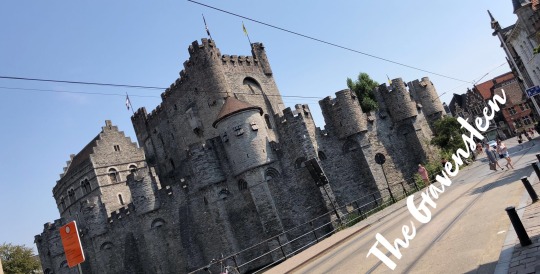
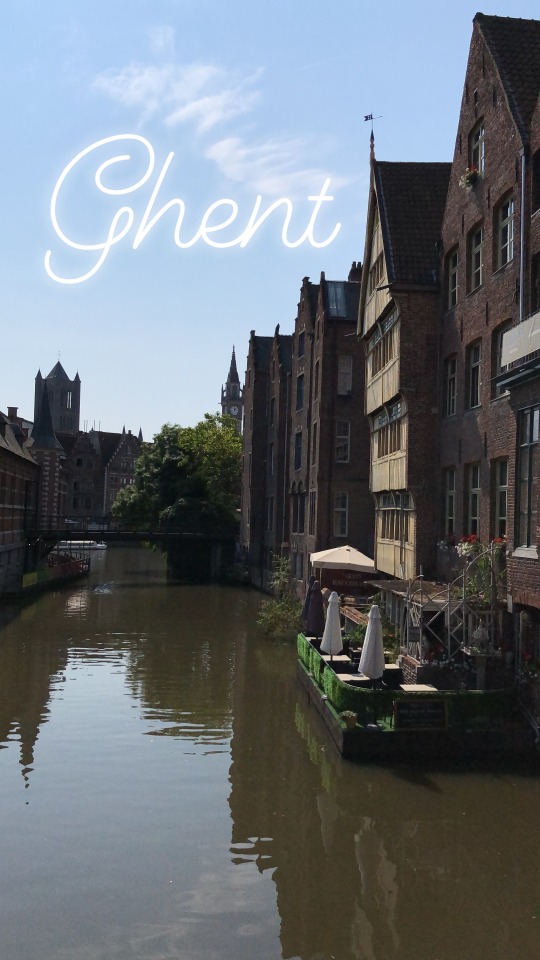
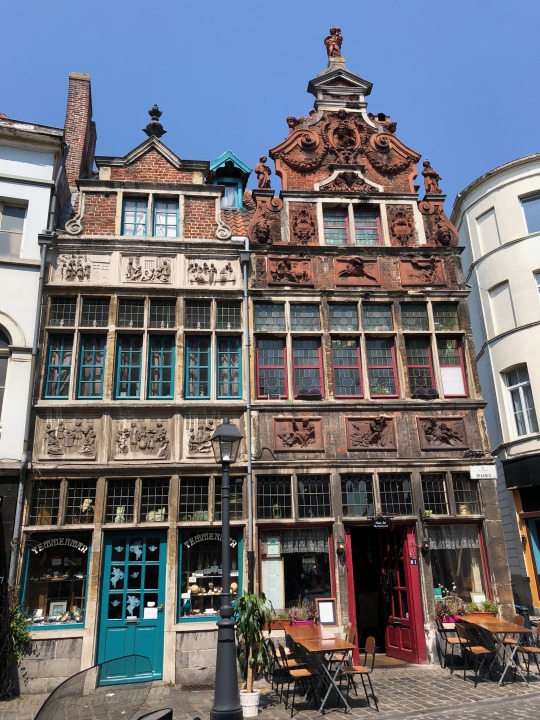
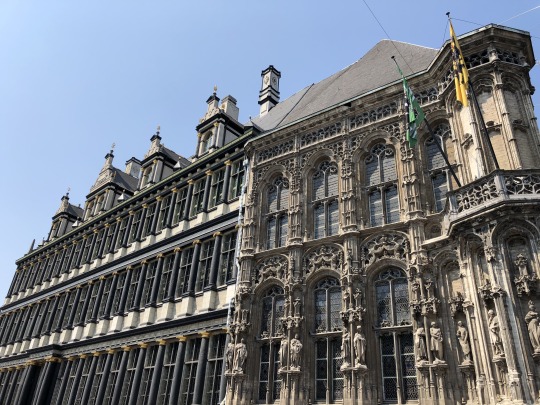
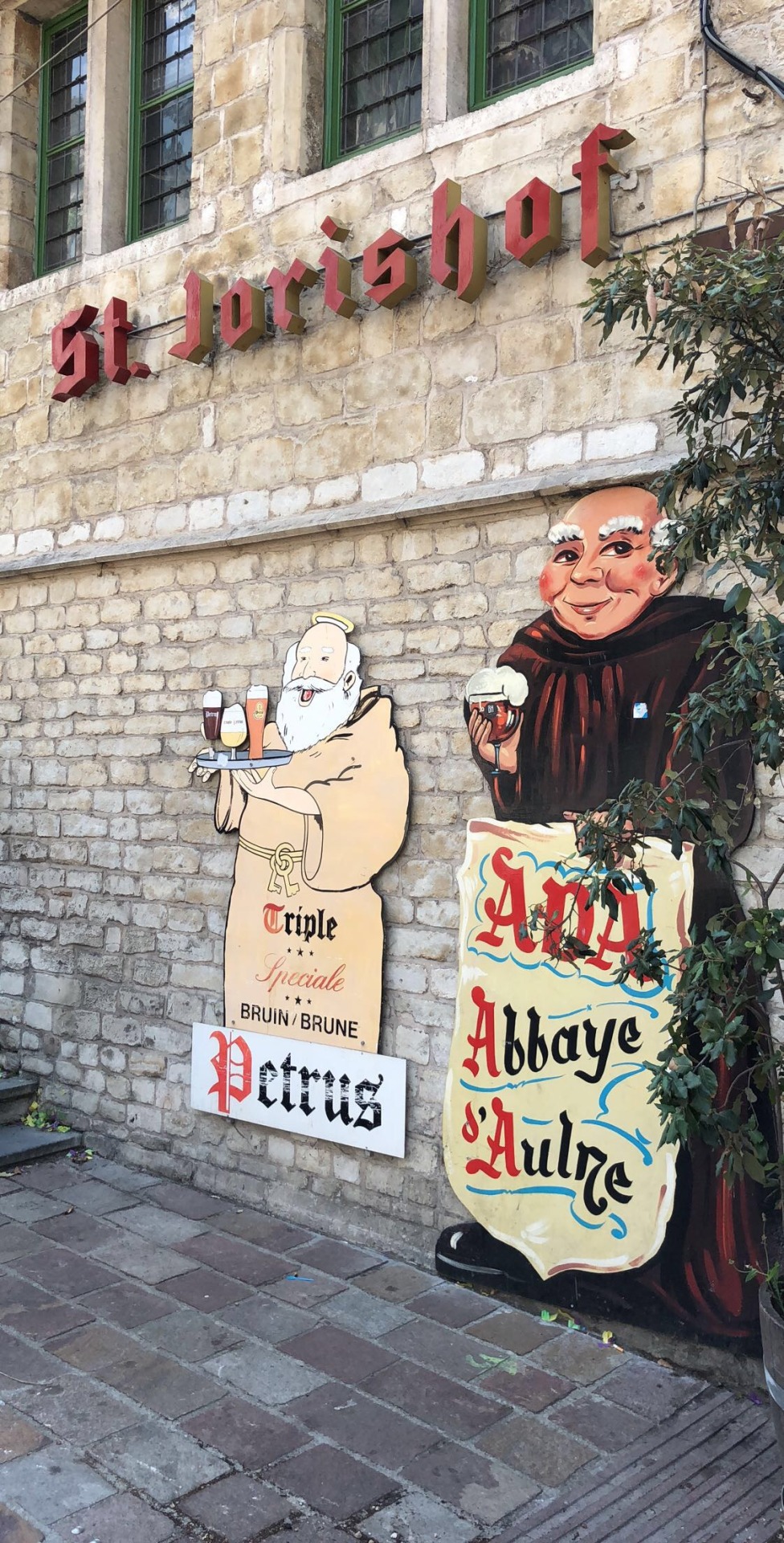
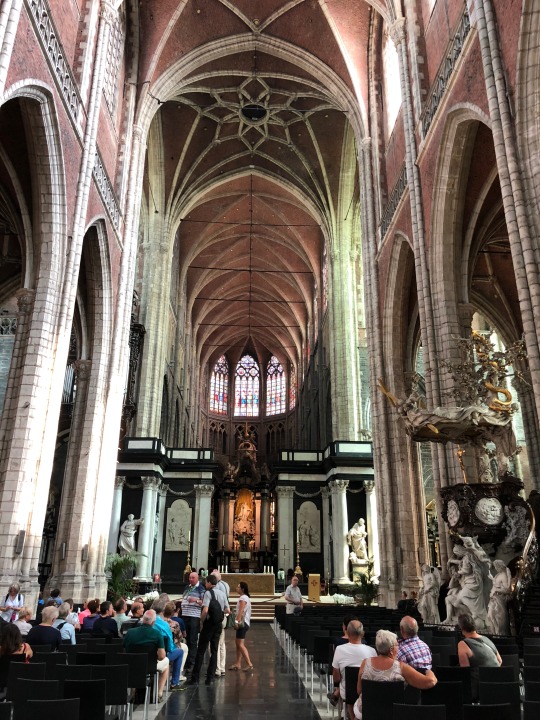
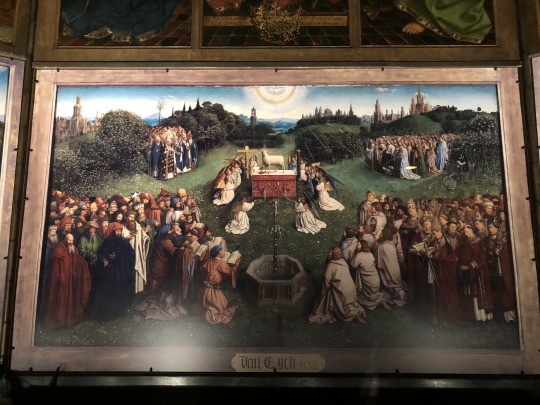
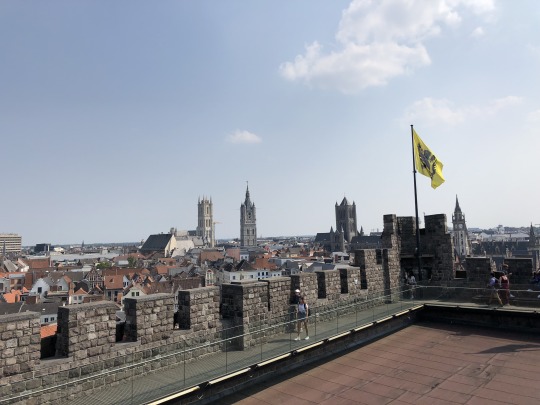
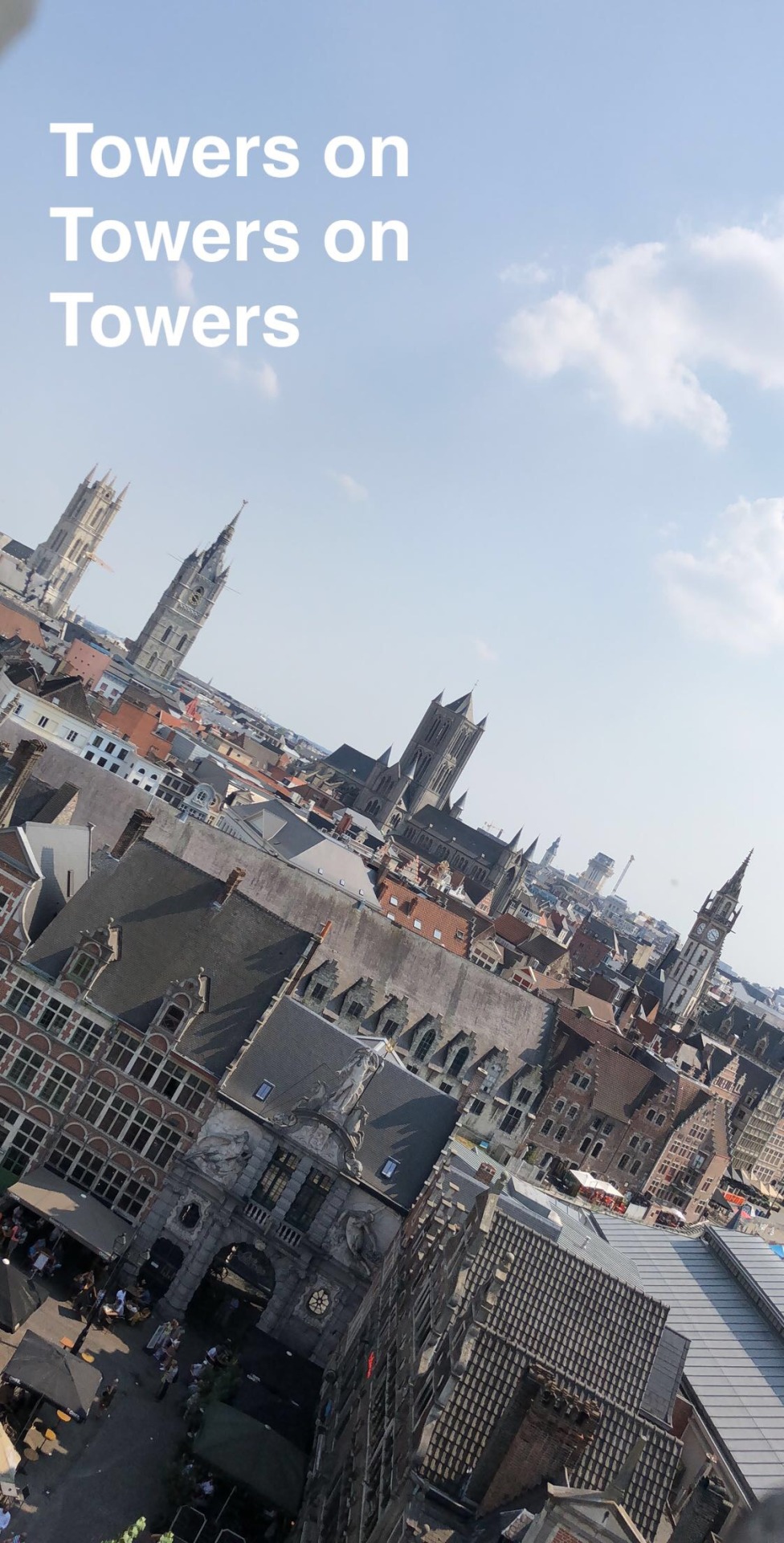
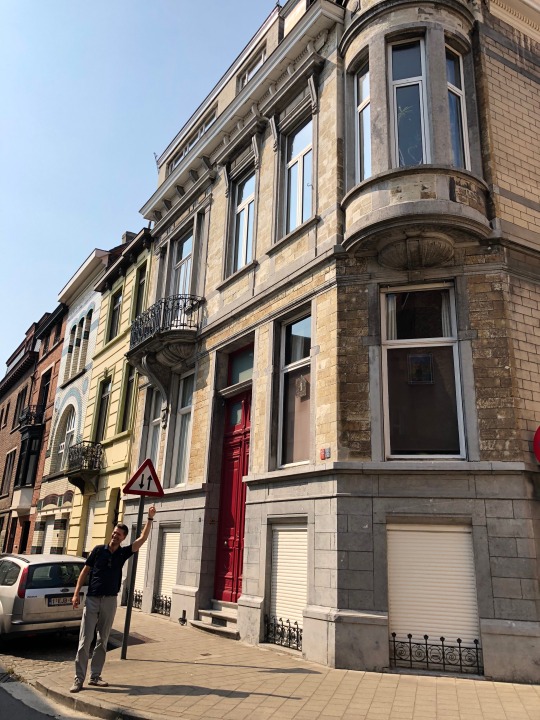

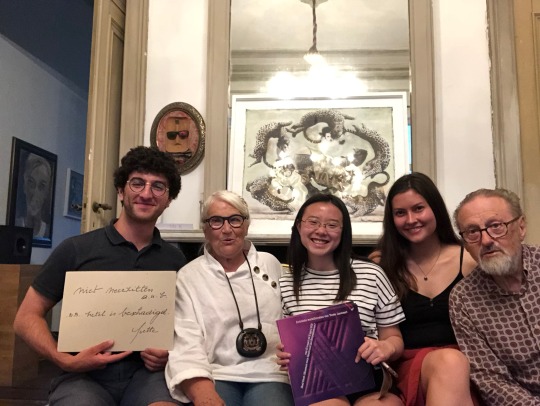
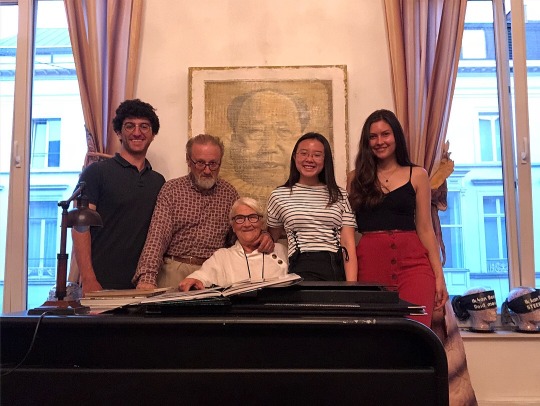
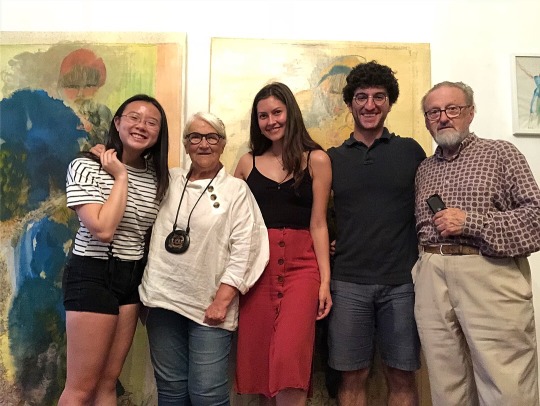
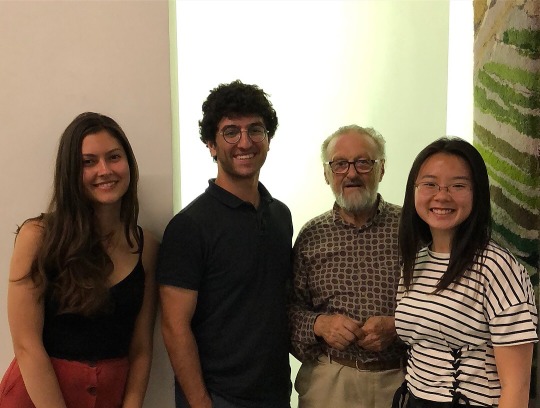
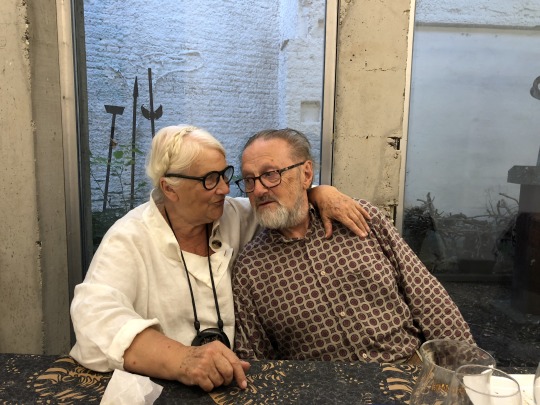
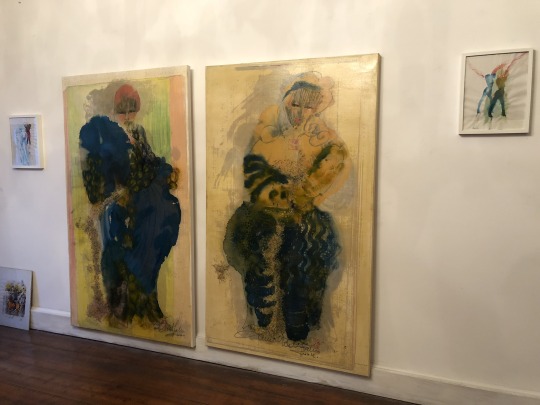

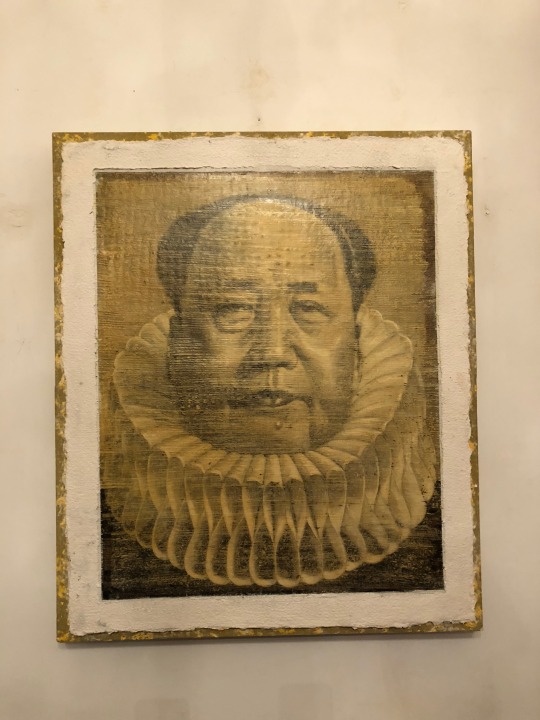
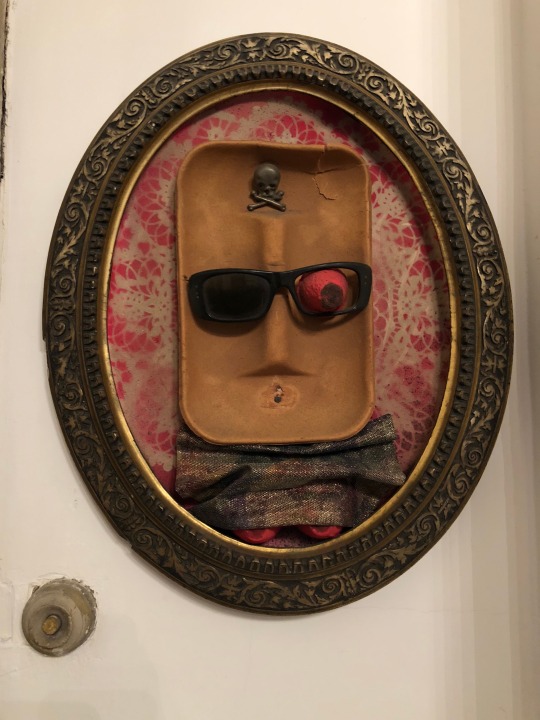
youtube
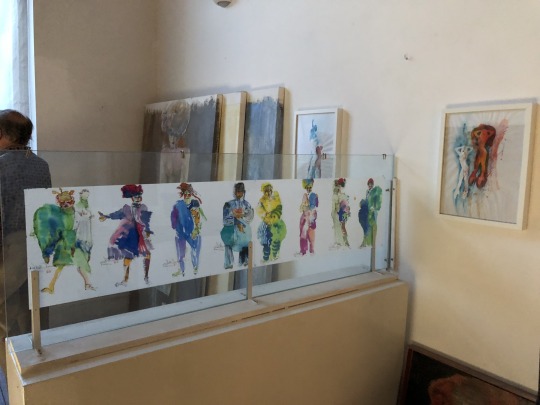
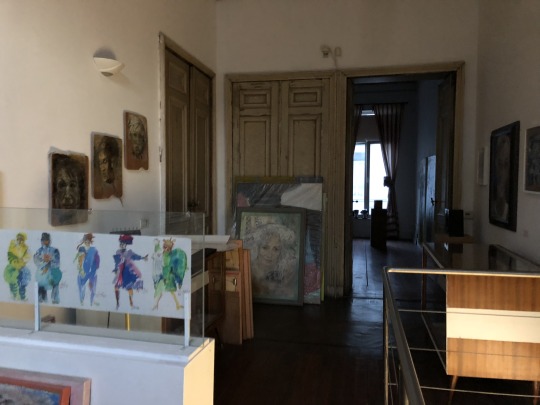
0 notes
Text
Travel Blog Post #17: 24/07/18
Hoi!
This morning, the study abroad group and I were allowed to sleep in slightly since our activity-packed day was not set to start until nine o’clock. As has been customary, following a short yet nutritious continental breakfast, the study abroad group and I began the twenty-minute walk to Antwerp’s central station. However, for the second day in a row, Professor Dewulf was absent as a result of a foot injury he sustained over the weekend. Nonetheless, according to the program assistant, he will be joining us on our journey to Ghent, the final excursion of the study abroad program, tomorrow. We expect his mobility to be affected rather acutely, though!
After an approximately hour-long train ride, the other students, program assistant, and I arrived in the beautiful Belgian capital city of Brussels. Since Professor Dewulf was not available to provide us with an informative city tour through the historical center of Brussels, a substitute tour guide was procured on short notice! Although our tour guide for the day was not given very much time to prepare for our arrival, she nonetheless provided us with a wonderfully educational as well as interesting tour through Brussels, paying particular attention to the Grote Markt, Brussels’ ornate market square. Soon after walking past the royal palace where King Philippe I of Belgium spends his days, the tour concluded directly across from the Belgian Federal Parliament building at the entrance to the Park of Brussels.
During the following lunch hour, I ventured onto the terrace café of the Musical Instrument Museum and enjoyed a delicious meal while taking in a spectacular view of the Brussels skyline. From my seat, I was able to easily identify famous Brussels landmarks like the tower of the city’s ornate city hall as well as the Atomium!
Over the course of the almost two weeks that the study abroad group has spent in Belgium, I have also begun to more concretely identify the differences between the Netherlands and Belgium. In most cases, my observations have been rather light-hearted and fun. For instance, while it seems as though the Netherlands and Dutch people as a whole remain far more organized and plan-centric than Belgium and the Belgians, I have come to prefer the gluttonous and decadent varieties of Belgian cuisine over the simpler and humbler Dutch culinary culture. In fact, I often spend several moments a day anticipating the next time that I will be able to sample a mouth-watering selection of Belgian chocolates, waffles, fries, and beers! Thus, one can clearly understand the Dutch characteristic of gewoon, or pride in conventionality, through such small cultural observances.
Following lunch, the study abroad group and I made our way to Luxembourg Square and soon arrived at the building complexes of the European Parliament. After an approximately hour-long presentation and question-answer session concerning the history and contemporary condition of the European Union, we were led into the European Parliament’s hemicycle and were able to explore the space where Parliament members meet to discuss and vote on legislation. I was especially fascinated by multiple interpreter boxes present in the room and soon began to connect the diversity of languages in the European Union to language-identity struggles in the city of Brussels itself (“Brussels, Leuven and Mechelen,” 2007). After a brief visit to the Parlamentarium visitors’ center to learn more about the history of the European Union, the study abroad group and I headed back to Brussels Central station and boarded a train to Antwerp.
I am looking forward to our visit to Ghent tomorrow and am excited to have dinner with our host families!
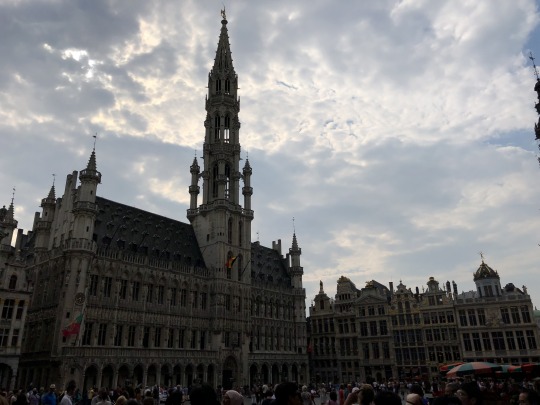
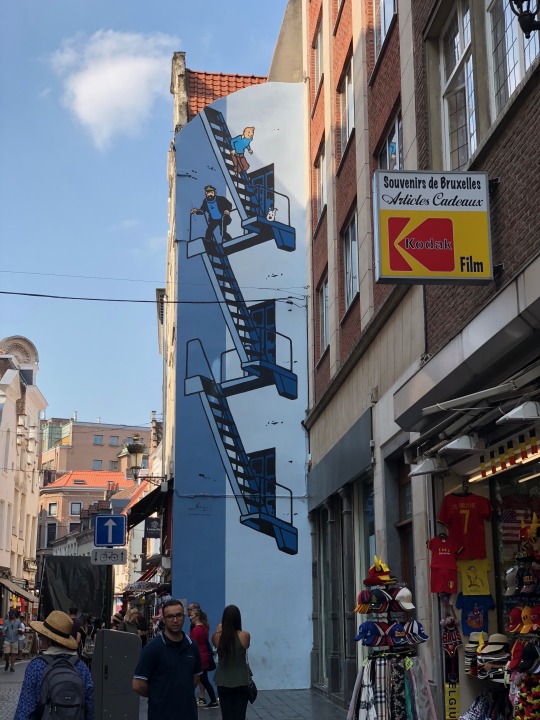

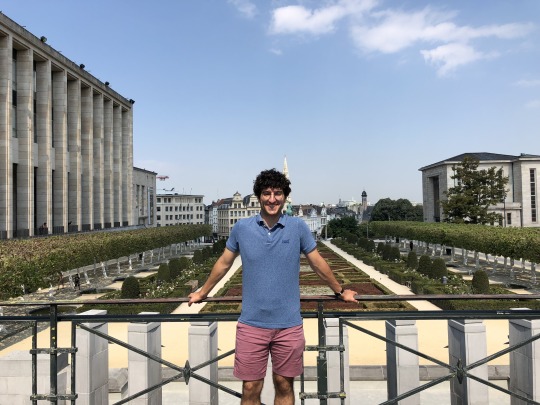
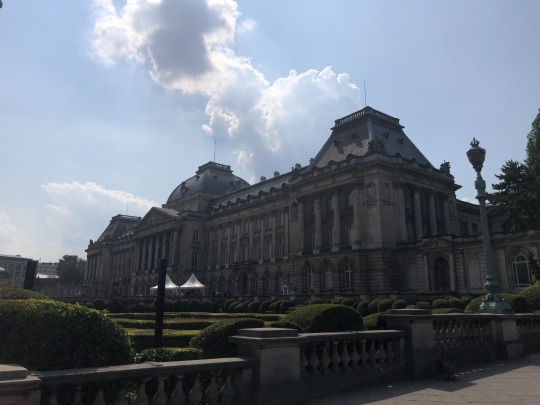
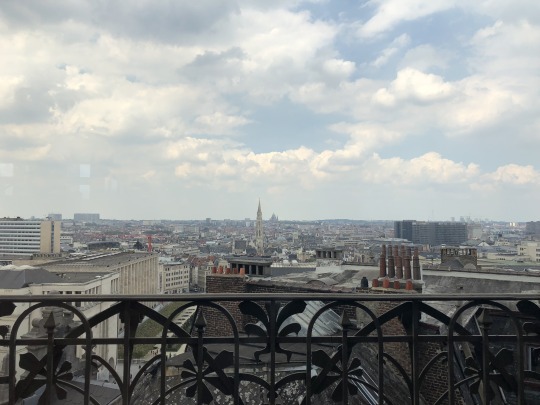
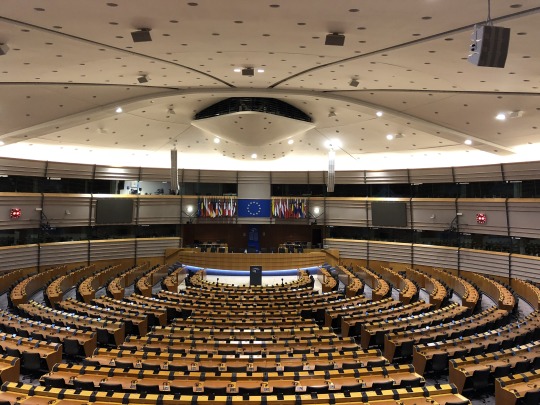
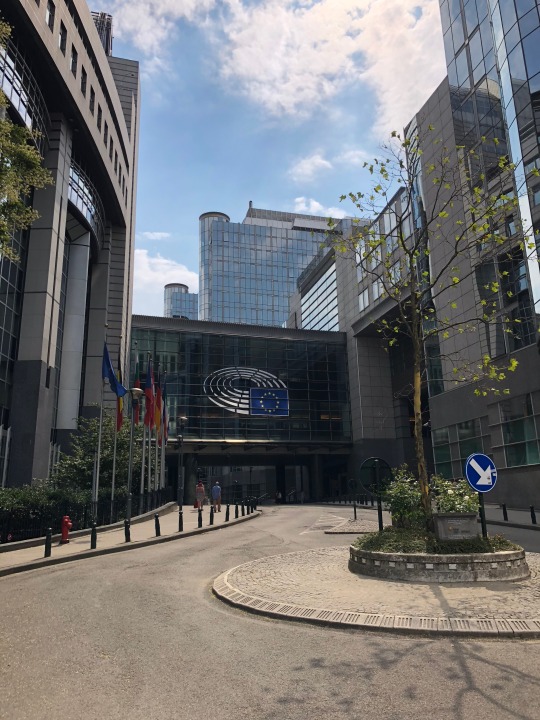
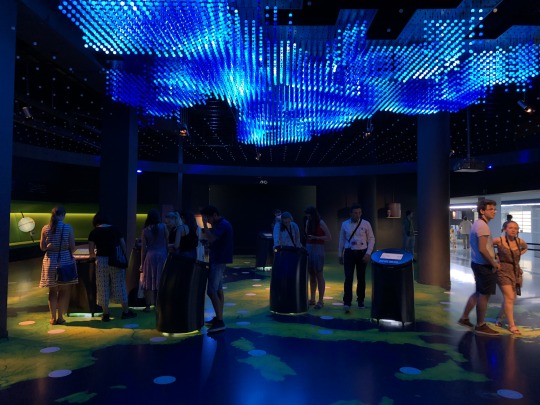
0 notes
Text
Travel Blog Post #16: 23/07/18
Goedenavond!
This past weekend, the study abroad group and I experienced our first full free days in Belgium! By the time the incredibly busy school week had come to an end, it was quite clear to everyone that we were sorely in need of some rest and relaxation. Although my original plans had consisted of visiting the Belgian capital of Brussels on Saturday to celebrate Belgium National Day and take part in the city-wide fanfare and excitement followed by a daytrip to Luxembourg the following day, realizing how exhausted the prior week had made me led me to simply return to Antwerp on Sunday instead in order to more completely rest before the final week of instruction. Considering how energized and eager I felt prior to the start of today’s activities, I consider my decision to have been a wise one. Nevertheless, I look forward to returning to Brussels again later this week!
On another note, this morning, the study abroad group and I gathered earlier than usual in the hostel lobby in order to not miss our scheduled train to Leuven. After a rather short train ride that lasted just under an hour, the study abroad group and I arrived in the wonderfully quaint and quiet city of Leuven and briefly walked through the city center in order to reach the University of Leuven’s main library. Soon, we were met by Professor Patrick Pasture, professor in European Studies at the University of Leuven, and afterwards were guided to a classroom where Professor Pasture delivered an insightful lecture on the past, present, and future of the European Union. While a great deal of what he said echoed subjects Professor Dewulf had covered earlier last week, Professor Pasture’s explanations concerning the intent behind early European unification strategies proved to be particularly useful in providing me with more context regarding the European Union prior to our visit to the European Parliament in Brussels tomorrow.
During our short lunch break, I took some time to enjoy a delicious and picturesque terrace meal at the Museum Leuven and made sure to follow that wonderful meal with an even more wonderful luikse wafel covered in decadent milk chocolate. I like to think that such little pleasures are adequately justified by the profuse amount of walking our study abroad group partakes in daily!
Following lunch, we were joined by Professor Violet Soen of the University of Leuven in front of the city’s famous city hall and soon began an extensive tour of the surrounding neighborhoods. In addition to visiting St. Peter’s Church, which houses two notable works by the great Flemish painter Dirk Bouts, we also walked in the footsteps of Erasmus and toured the Old Market square, the city’s famous beguinage, and early modern colleges of the University of Leuven itself. I was especially fascinated to learn that the University of Leuven is the oldest university in Belgium and, being officially founded by the Pope in 1425, “remains the largest Catholic university in Europe” (“Brussels, Leuven, and Mechelen,” 2007).
Our last activity of the day was a visit to the city’s famous university library tower with carillon player Luc Rombouts. As we climbed the university library tower in small increments, Mr. Rombouts explained to us the history of the university library, including its two periods of destruction due to fire. Upon reaching the carillon box at the top of the tower, Mr. Rombouts treated us to a beautiful carillon concert and made us immediately forget how tired the several hundred steps of climbing had made us!
In the evening, a train carried us back to Antwerp.
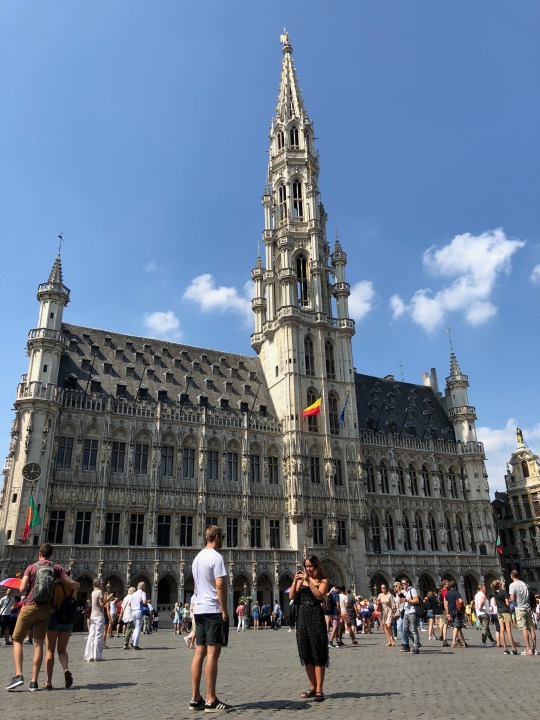
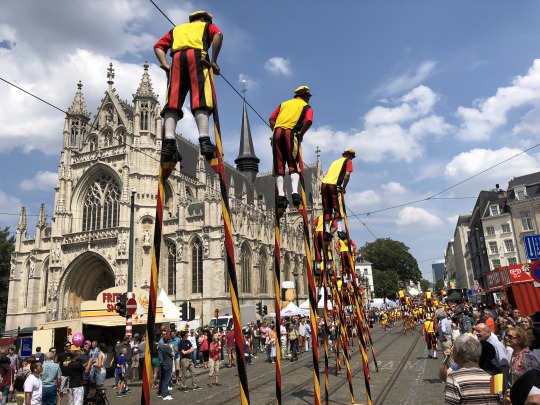
youtube
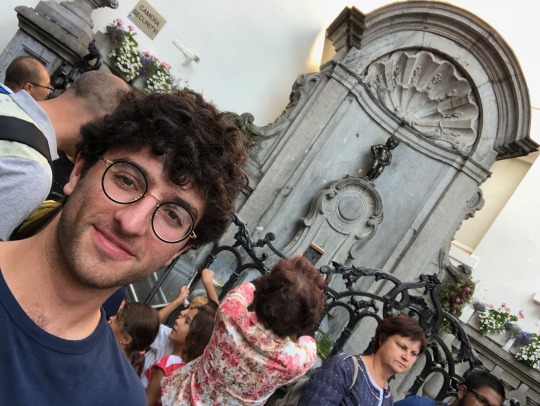
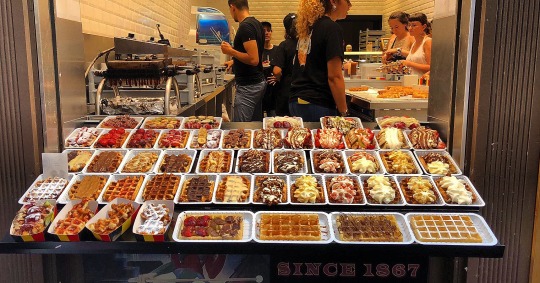
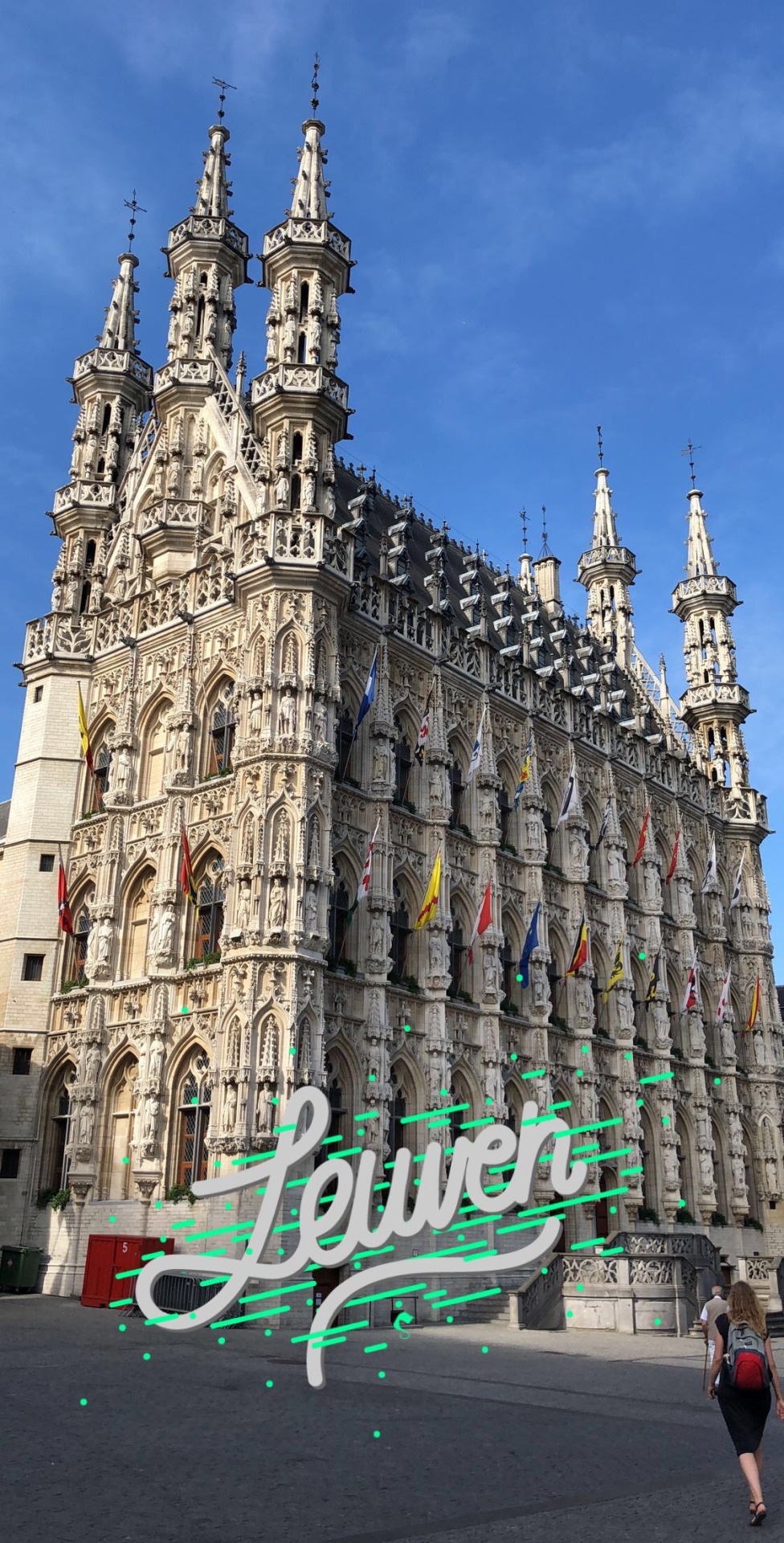
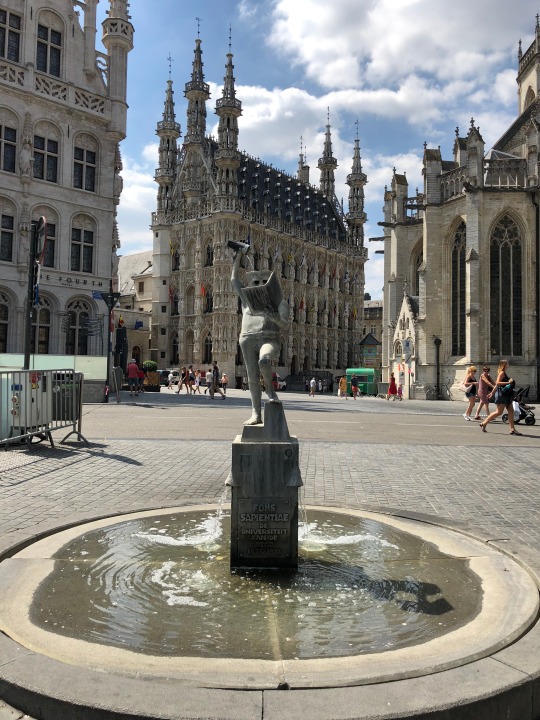
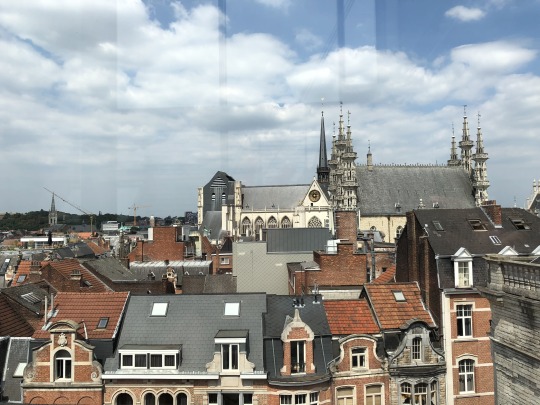
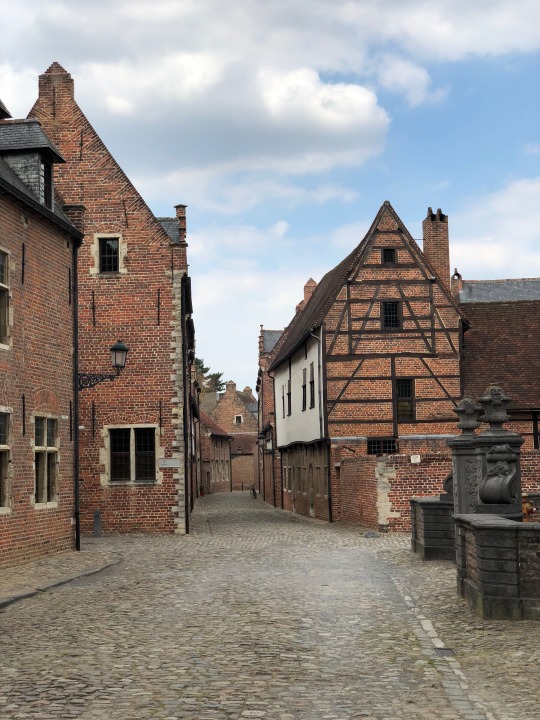
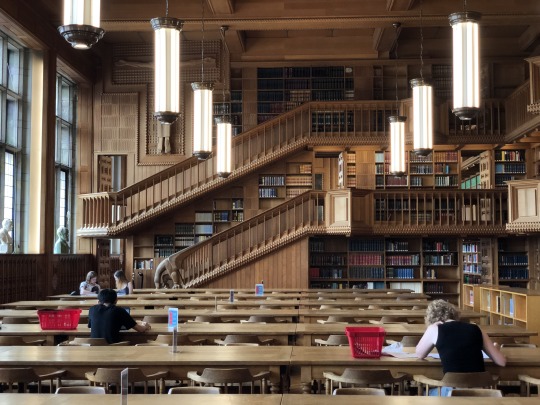
youtube
youtube
0 notes
Text
Travel Blog Post #15: 20/07/18
Hoi!
Today, our daily set of academic and cultural activities began approximately ninety minutes earlier than those of our previous days exploring Belgium. Following a quick breakfast, the study abroad group and I made the twenty-minute journey by foot to Antwerp’s central train station and soon boarded a direct train for the town of Brugge, which prides itself on its well-preserved medieval heritage sites.
Upon arrival in Brugge, the study abroad group and I took a short walk to the city center, making sure to visit the Church of Our Lady along the way. As with many churches we have encountered over the past three weeks in the Low Countries, the Church of Our Lady in Brugge had largely been converted into a museum for visitors. However, rows of pews in the center of the church as well as a multi-lingual midday prayer indicated that the church still retains its identity as a place of worship to some extent. Apart from the countless pieces of beautiful religious artwork completed during the late Middle Ages and early Northern Renaissance, the church also included the graves of Mary of Burgundy and Maximilian of Austrian, both of whom relate the history of Flanders to the vast expanse of European territories previously controlled by the Holy Roman Empire. In addition, the Church of Our Lady also housed Michelangelo’s famous statue of the Madonna of Bruges, the only sculpture by the world-renowned Renaissance master to leave Italy during his lifetime! It naturally made its way to Brugge, one of the wealthiest cities in Europe during the early fifteenth century.
Following our visit to the museum within the Church of Our Lady, Professor Dewulf led the entire study abroad group to Brugge’s central square and belfry tower. It was from this location that the group dispersed into smaller conglomerations in order to find a place to have lunch as well as explore the city freely. In need of at least a few quiet moments of privacy, I chose to take my first solo lunch hour of the trip in order to relax before the second half of our rather strenuous day began. After briefly consulting local restaurant reviews in order to find a tasty location for lunch, I settled on Café de Republiek, which was located just a few blocks from the city’s central square. Immediately upon arrival and hearing a cacophony of Dutch being spoken around me, I realized the restaurant was a local favorite and quickly chose to dine on the delicious lunch special of the day along with a savory local brew! Of course, no Belgian lunch hour would have been complete without the obligatory visit to the nearest chocolate shop for a sweet dessert!
After lunch, Professor Dewulf provided us with a guided tour of the city of Brugge, including a brief visit to the Chapel of the Holy Blood where we were lucky enough to arrive during a rare showing of a relic cloth supposedly covered in the blood of Jesus Christ from the time of his crucifixion. Although the authenticity of the relic is debatable, the piece of cloth’s journey from the Holy Land to Brugge in the company of Flemish Crusaders itself is worthy of note, nevertheless.
A short walk later and just as rainfall began in the city, the study abroad group and I began our visit to the Groeninge Museum and admired its extensive collection of works by the “Flemish primitives” who created a new perspective form that differed from that of the Italian Renaissance (“Bruges: Petrified Dreams,” 2007).
Following our visit, the study abroad group hurriedly made its way to the local train station in order to begin our journey back to Antwerp.
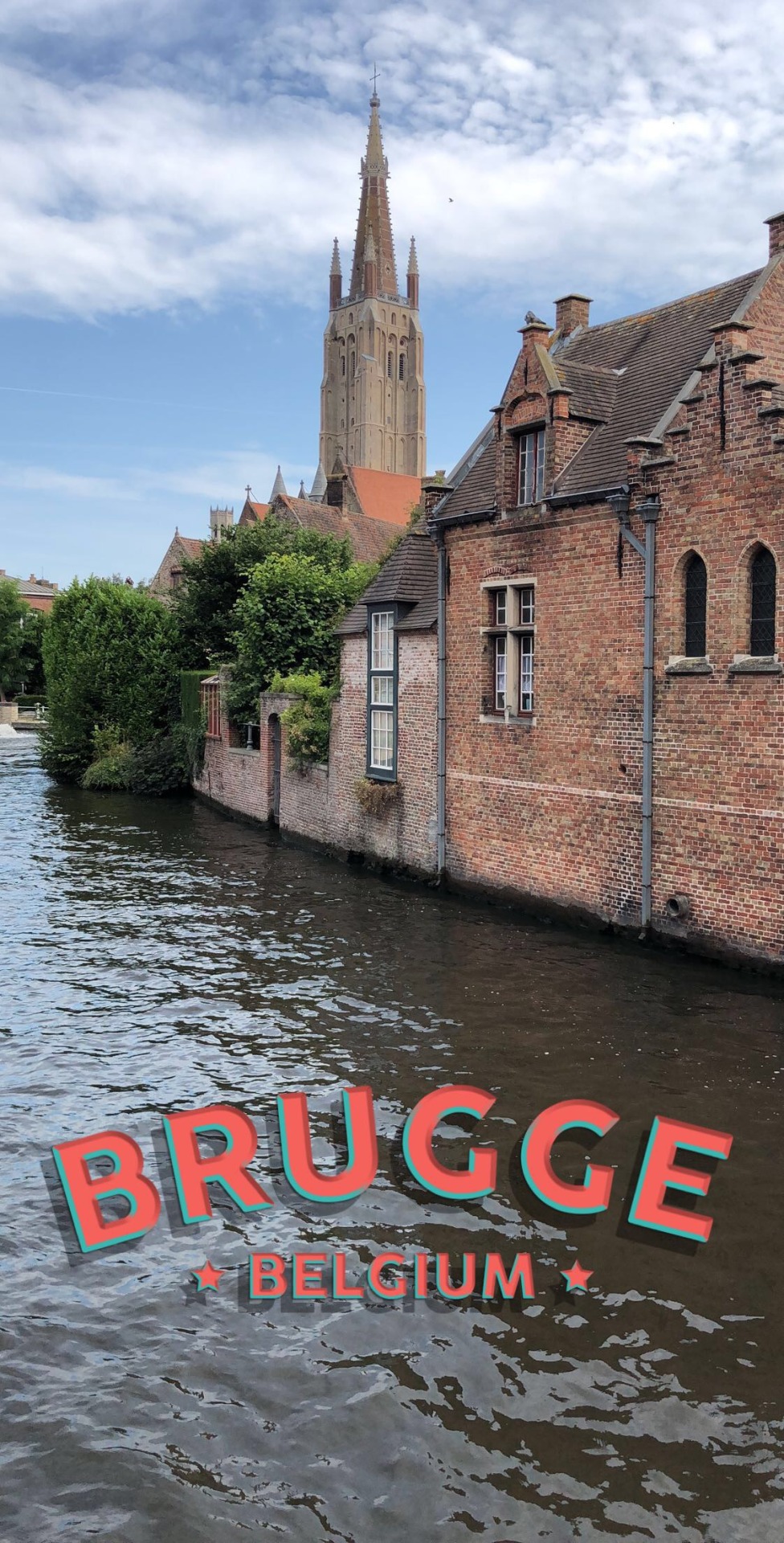
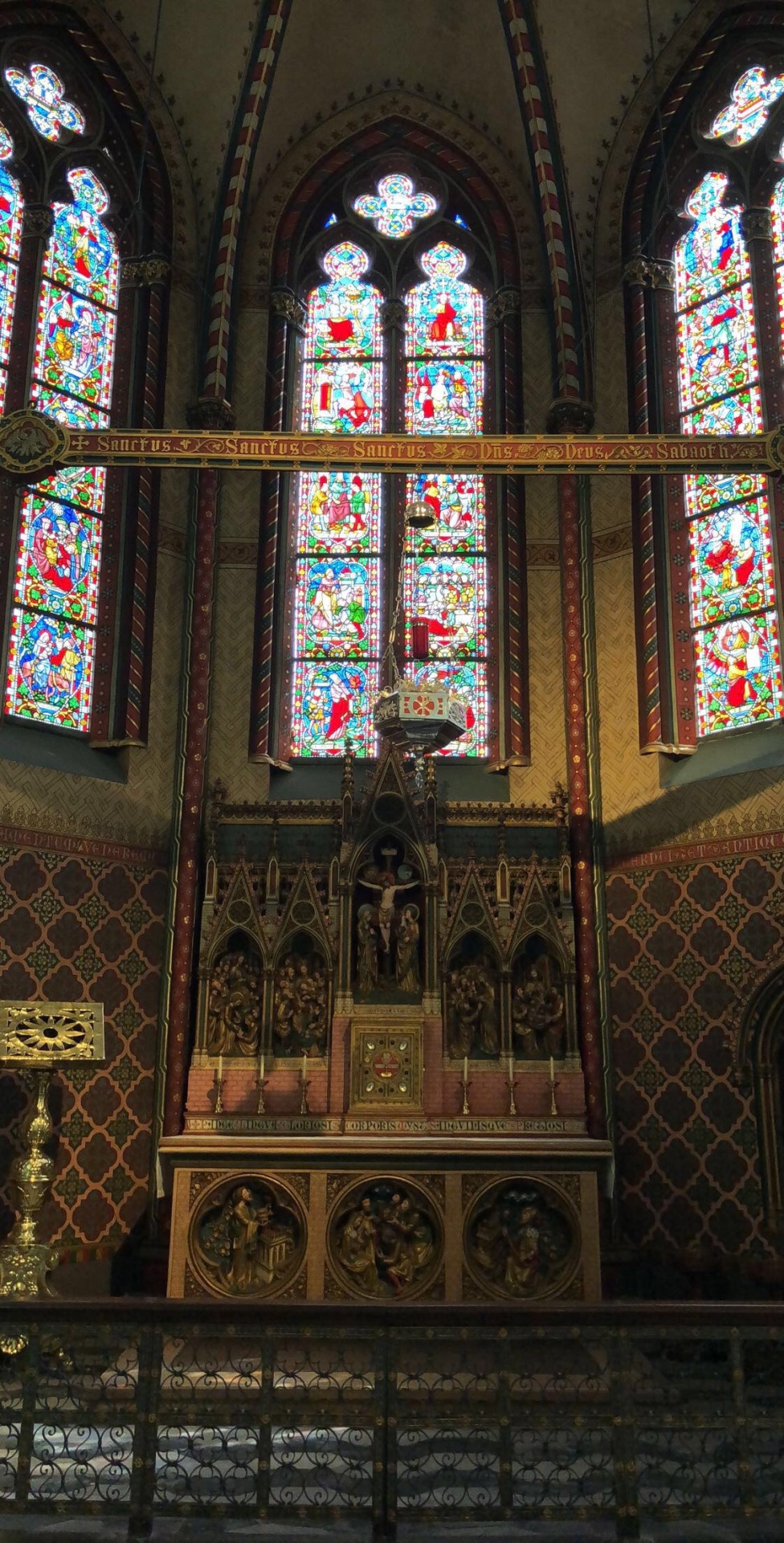
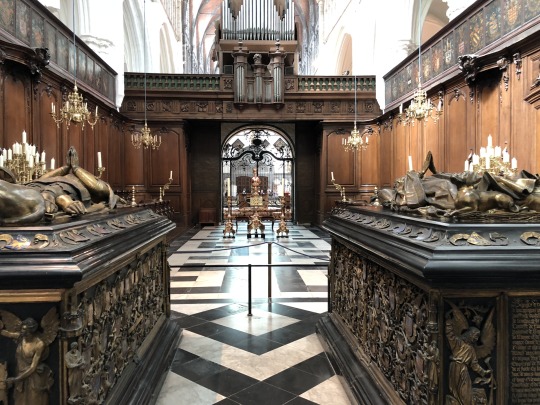
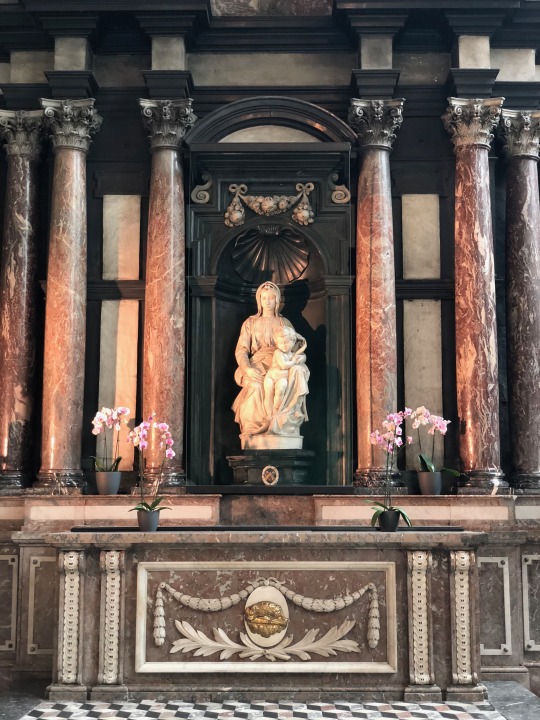
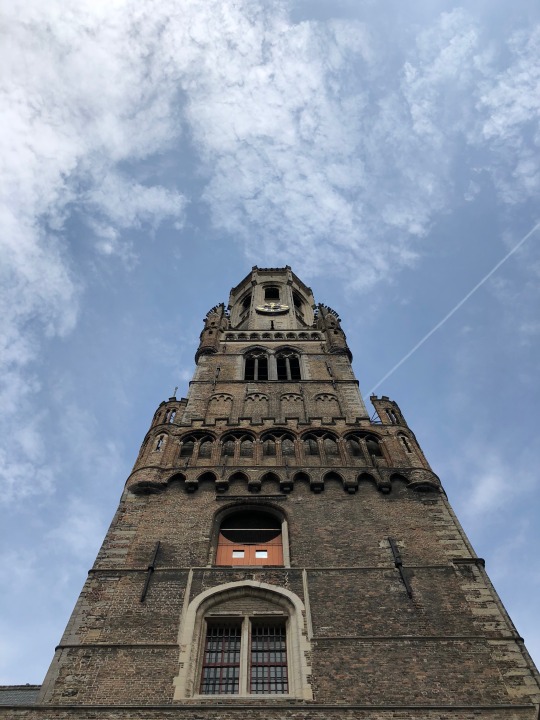
youtube
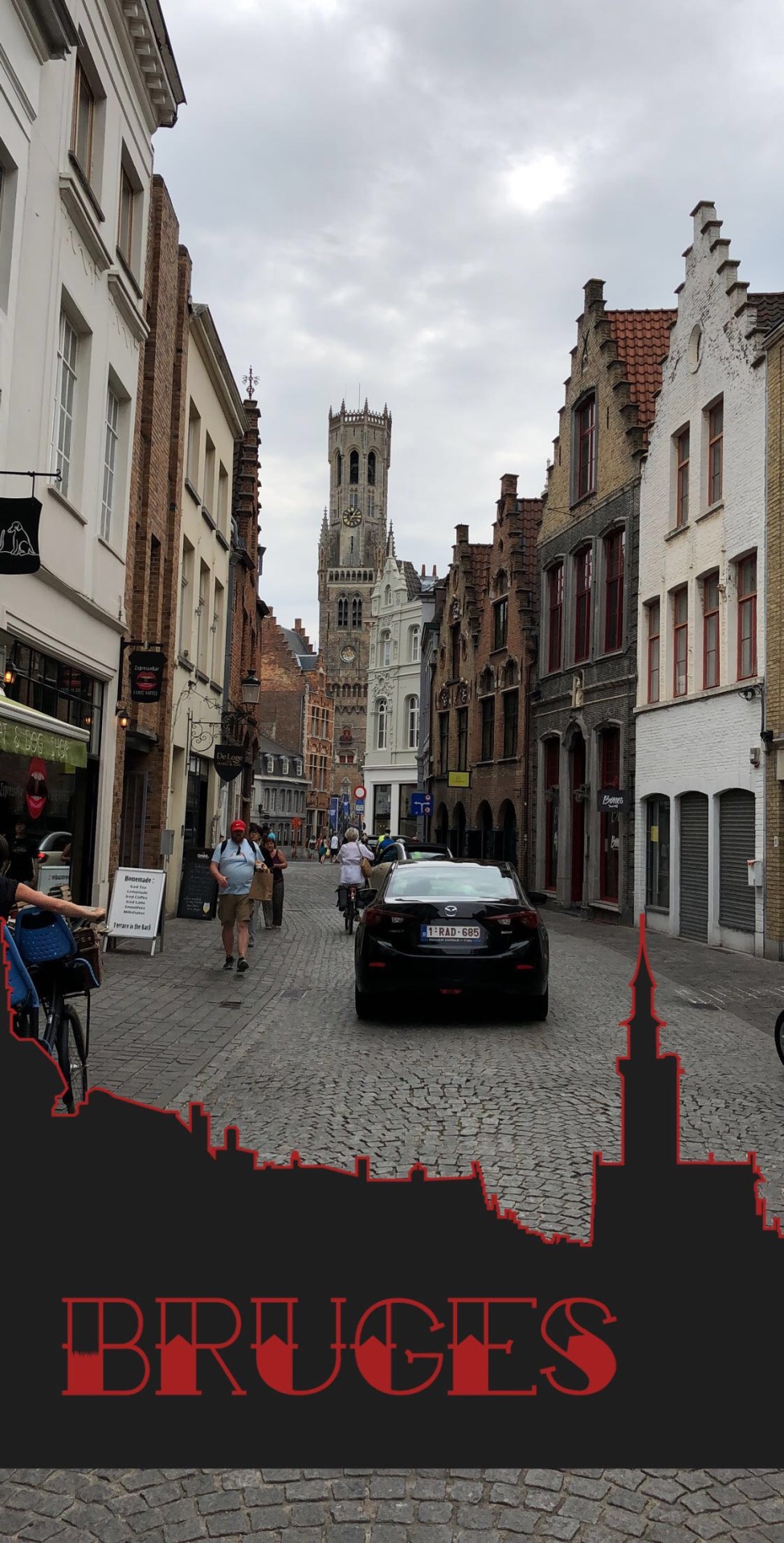
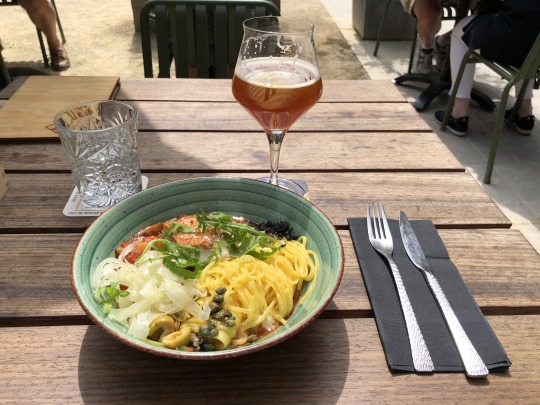
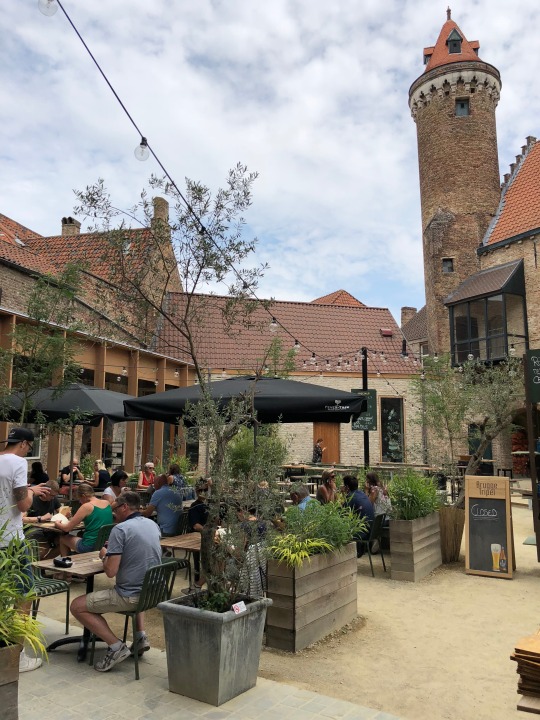
youtube
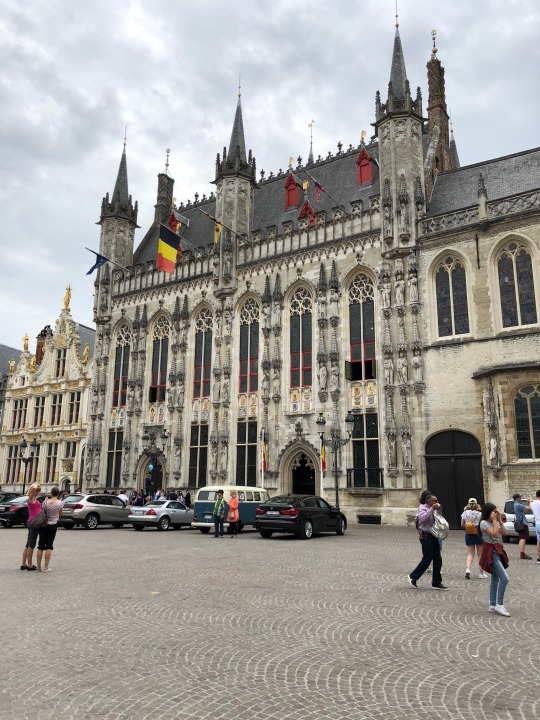
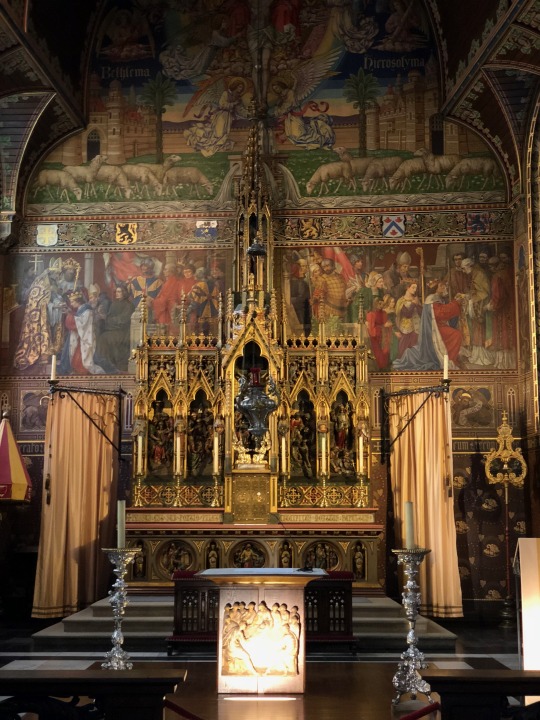
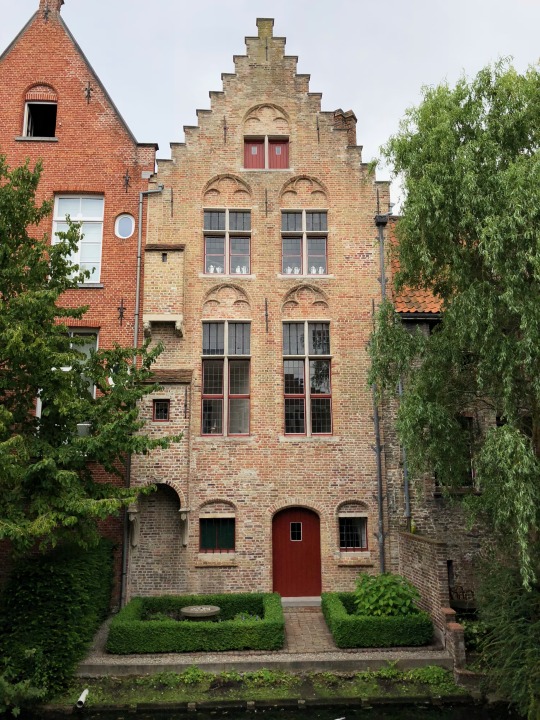
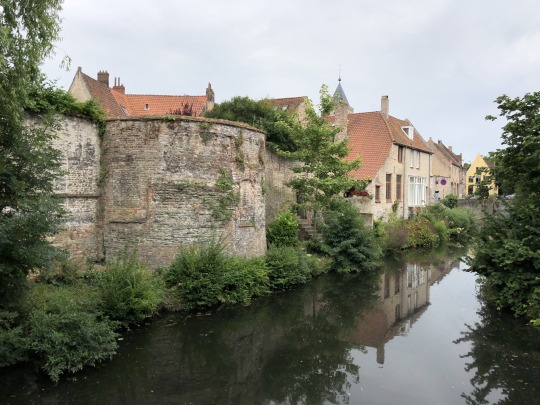
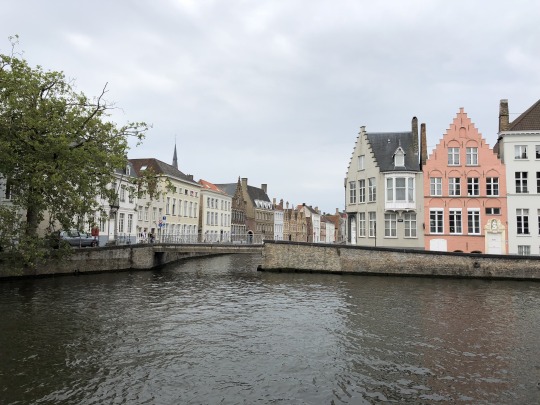
youtube
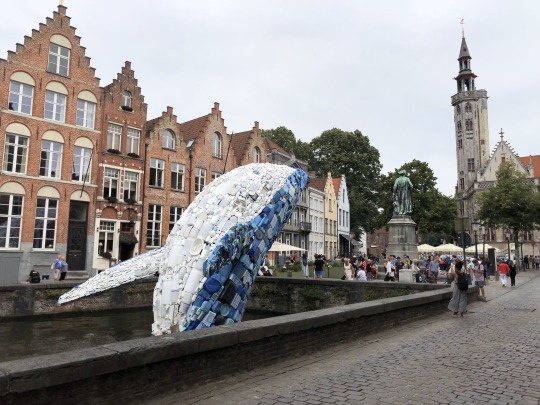
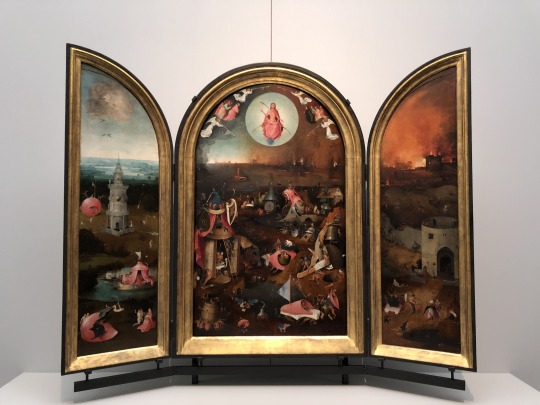
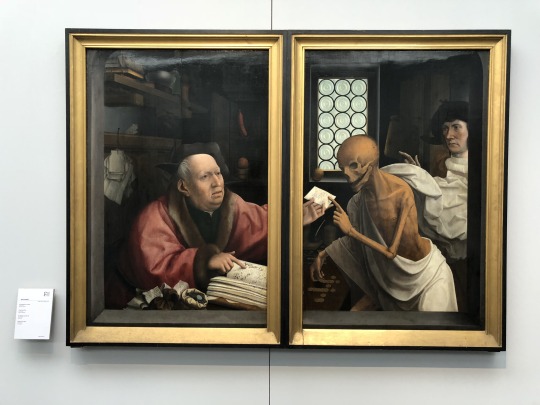
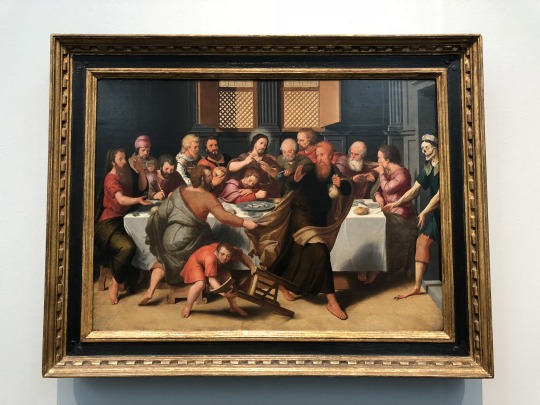
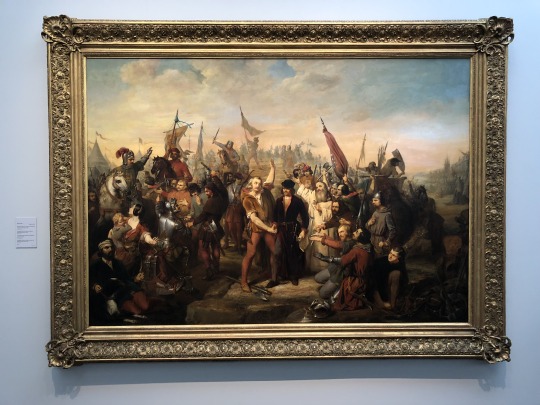
0 notes
Text
Travel Blog Post #14: 19/07/18
Hallo!
Since today was our first travel day outside the city of Antwerp, the study abroad group and I were obliged to begin our daily programming approximately thirty minutes earlier in the morning than was usual for our previous days spent in Belgium. Nevertheless, the prospect of visiting and discovering a new city served as more than enough motivation to get the entire study abroad group to Antwerp’s central train station at a relatively brisk pace. Today, we were to visit the historically and culturally rich Flemish town of Mechelen.
Upon arrival at Mechelen-Nekkerspoel station and following a short walk through the historic city center, the study abroad group and I arrived at the Museum Hof van Busleyden where we were welcomed incredibly warmly with light refreshments by Heidi De Nijn, Director of Culture of the city of Mechelen. Following her kind and welcoming words, Curator Samuel Mareel introduced our study abroad group to the fascinating concept behind the museum as well as its vast collection of artifacts. By exploring the history and contemporary surroundings of the city of Mechelen through the lives of Emperor Charles V and Archduchess Margaret of Austria at the time of the Northern Renaissance, the curator’s presentation on the museum within which we sat only added further context to subjects already covered in the course reader and Professor Dewulf’s lectures. Throughout the free time we were allotted in order to explore the museum, I discovered a treasure trove of precious sixteenth-century artifacts and works of art that served to encapsulate the identity of Mechelen itself. As with the Museum ann de Stroom we visited yesterday afternoon, the collections of the Museum Hof van Busleyden were organized thematically rather than chronologically, which I found to be simultaneously inviting and informational.
Following a relaxing lunch at the nearby Market Square, we were joined once more by Curator Samuel Mareel and soon began an extensive city tour of Mechelen that included visits to the former palace of Margaret of Austria, St. John’s Church, and St. Rumbold’s Cathedral with its breathtaking skywalk views. After visiting the city’s churches and viewing several other religious sites, I began to more thoroughly understand the strong Catholic tradition that has historically characterized the region of Flanders and added to the area’s particular identity in relation to the largely Protestant nation of the Netherlands to the north.
Unexpectedly, I found our group’s visit to St. John’s Church to be the most fascinating aspect of our visit to Mechelen today. Since members of the Great Council, the highest court of law in the Low Countries between the fifteenth century and the French Revolution, resided in the neighborhood surrounding the church, the place of worship’s interior was ornately decorated and even featured an enormous central altarpiece painting completed by Rubens himself! In addition to the beautiful religious artwork present throughout the church’s primary interior, Curator Samuel Mareel was able to provide us with backstage access to a pair of recently unearthed wall murals painted in the year 1400 that were trapped behind the church’s organ. Seeing such well-preserved and untampered works of late medieval art simply astounded me and the added fact of knowing I was among the first individuals to view those murals in over six hundred years was incredibly exciting. Furthermore, upon careful inspection of the church’s altar, I discovered several rolled rugs of Armenian origin and immediately thought of how such Armenian rugs previously appeared in the works of great Renaissance artists, including Hans Memling.
Contemplating the influence of my ancestors on European art history, I proudly made my way back to Antwerp via train.
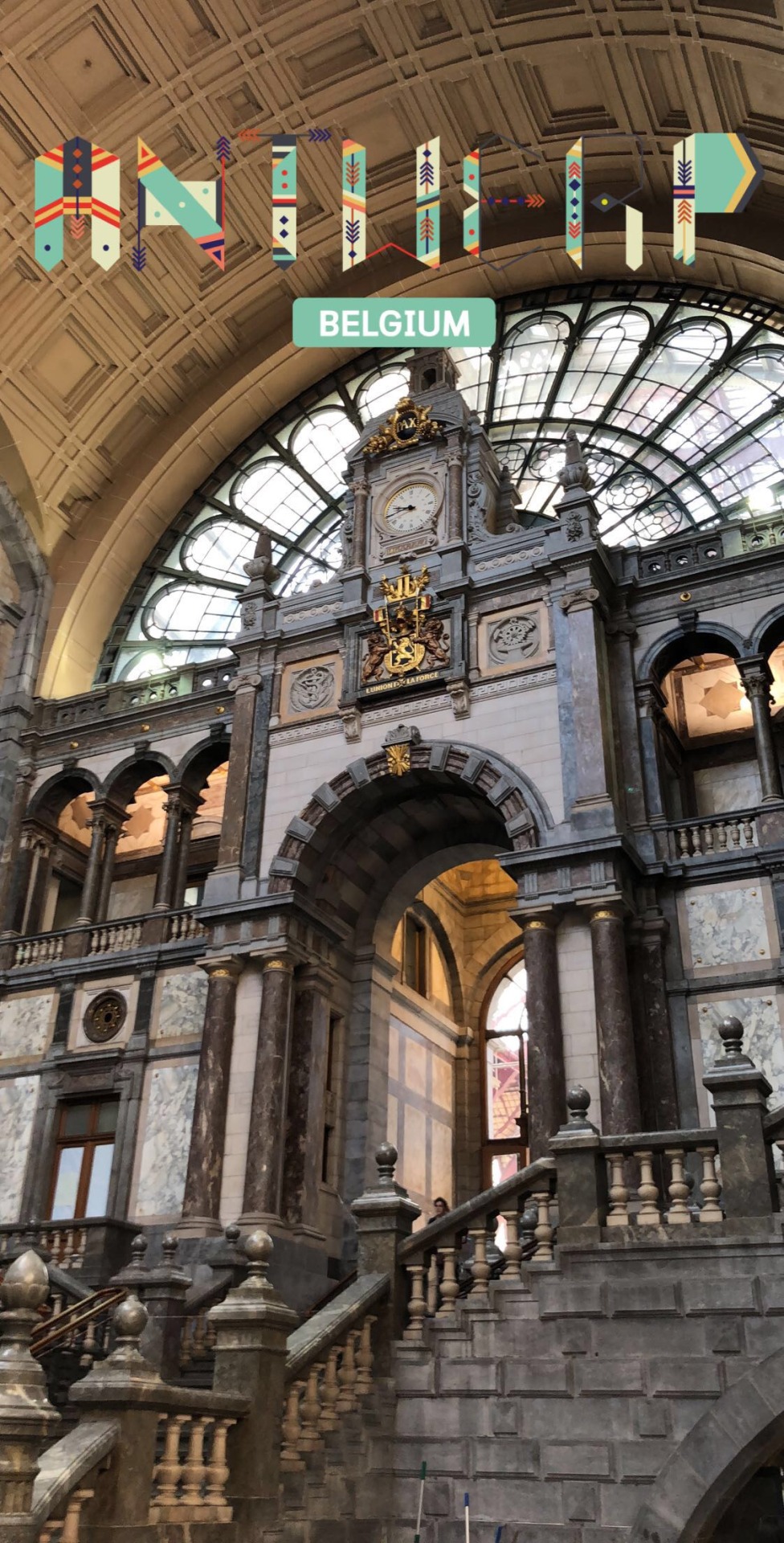
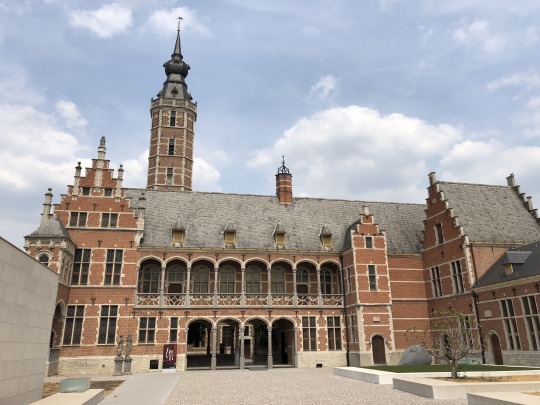
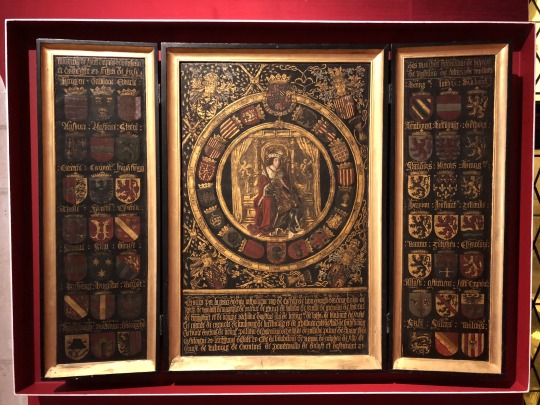
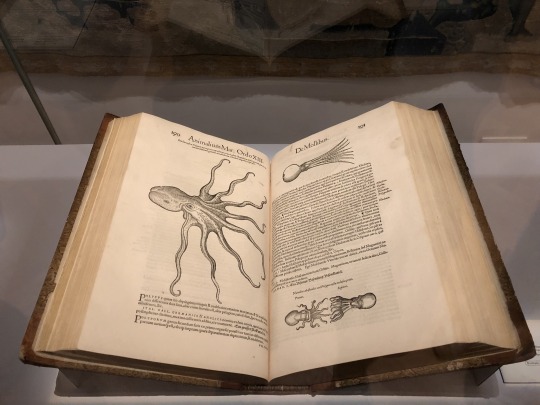
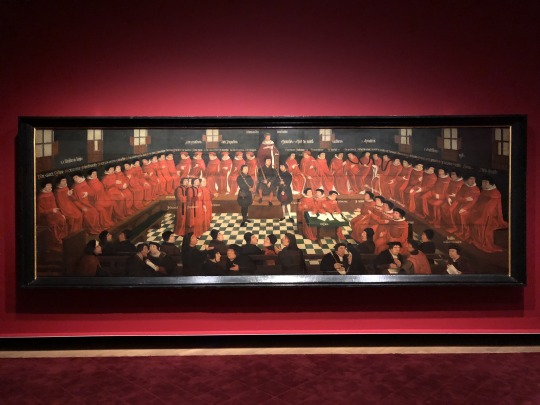
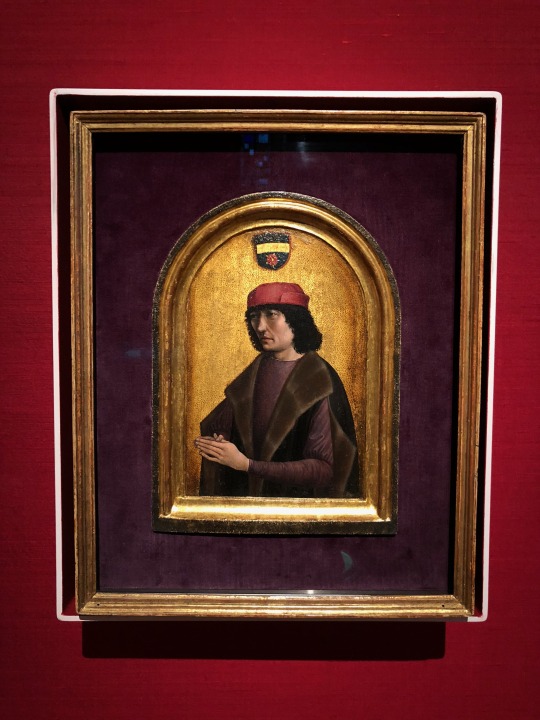
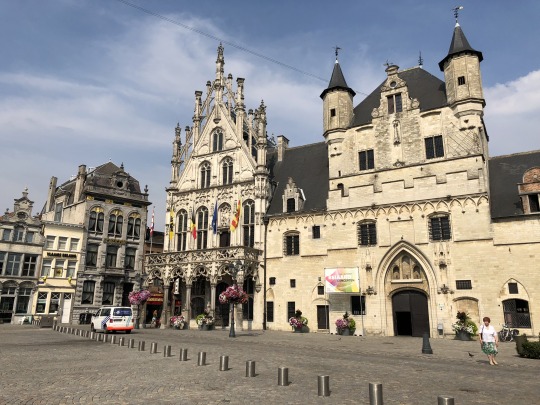
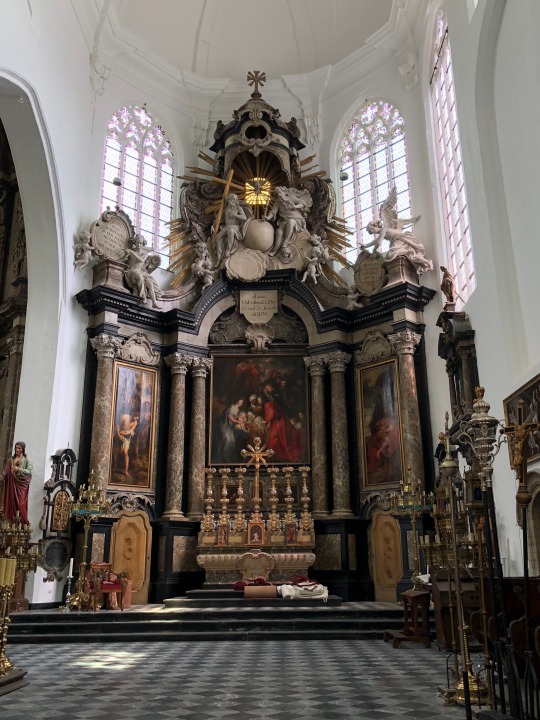
youtube
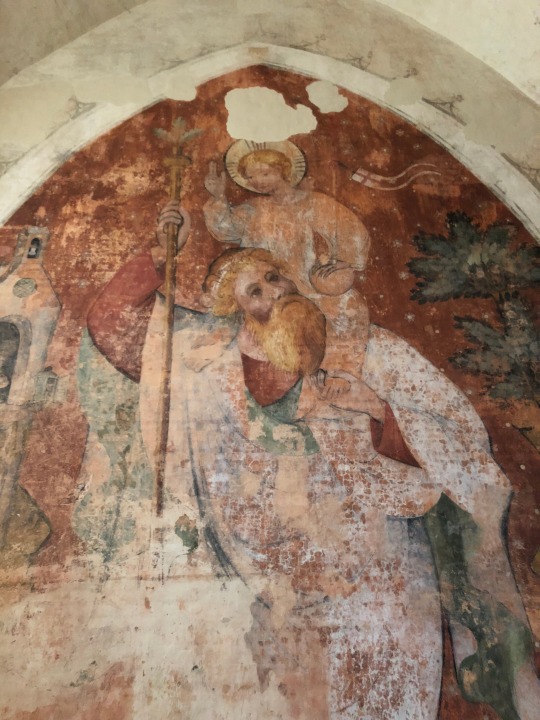
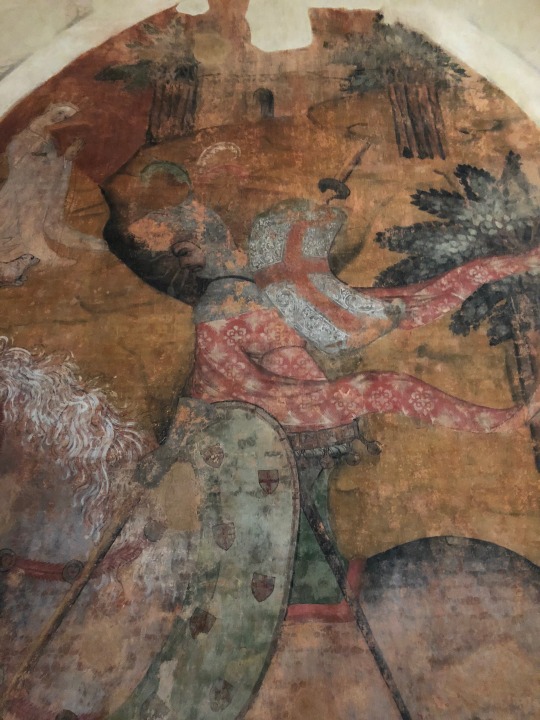
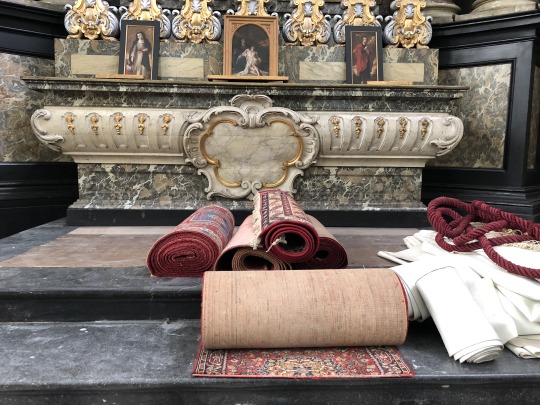
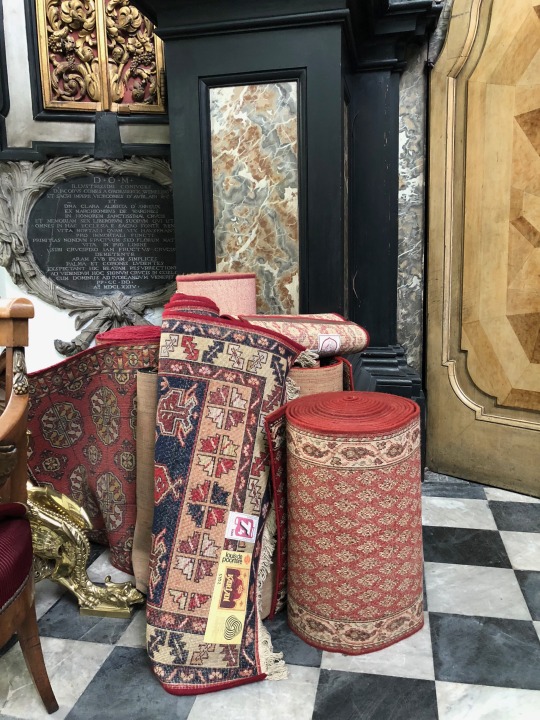
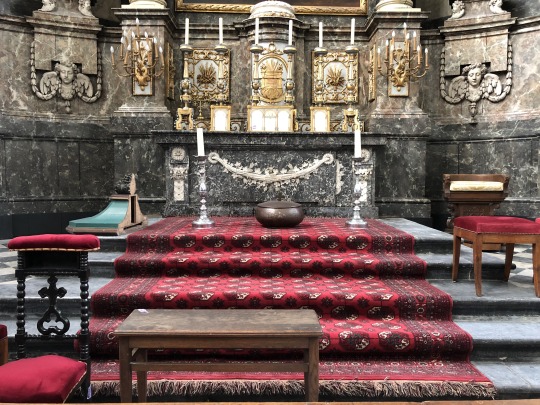
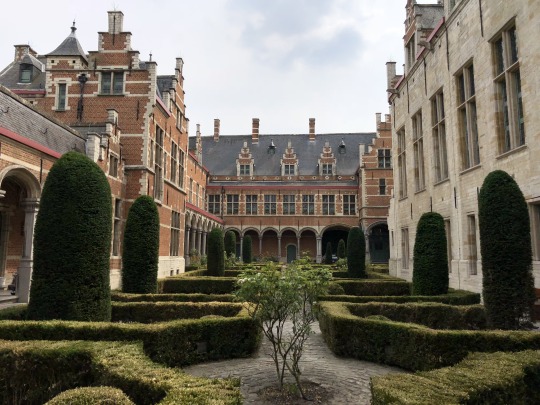
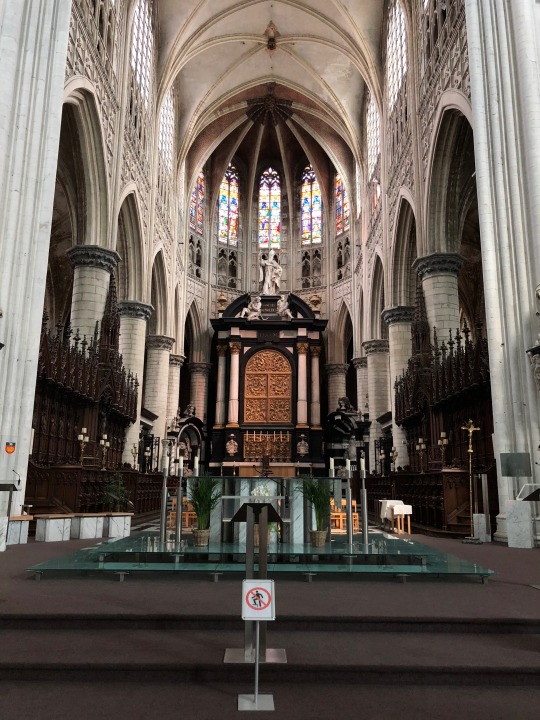
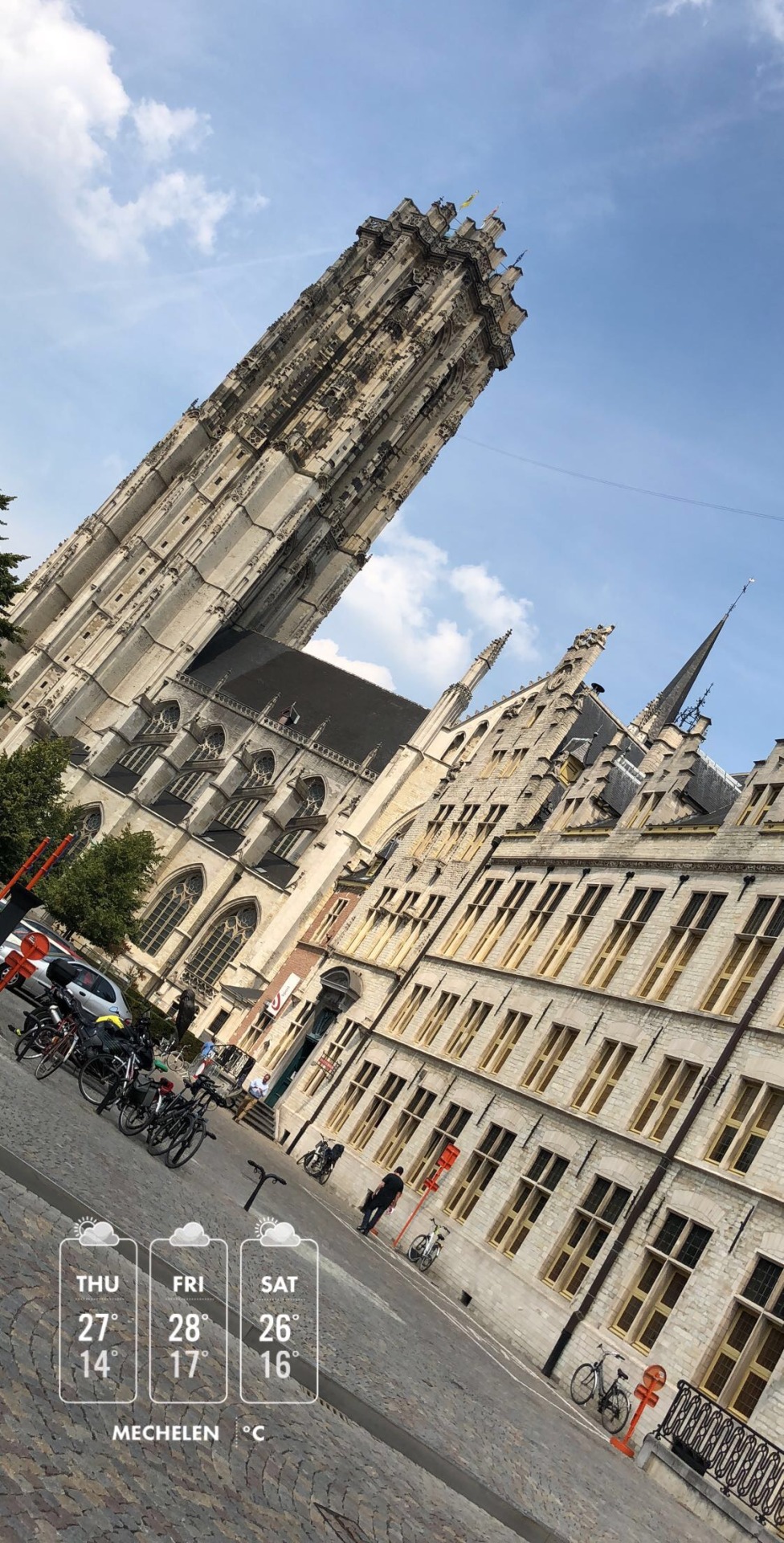
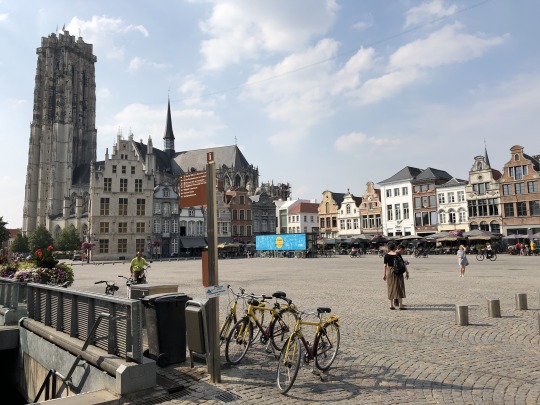
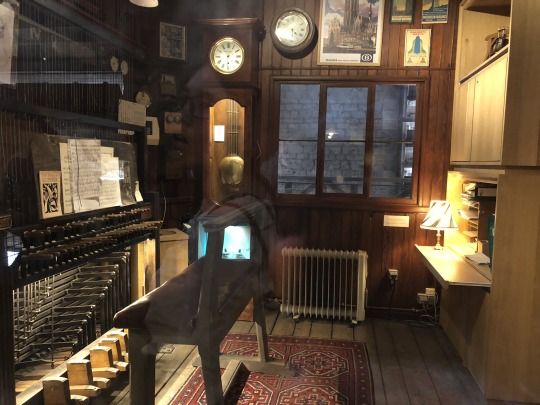
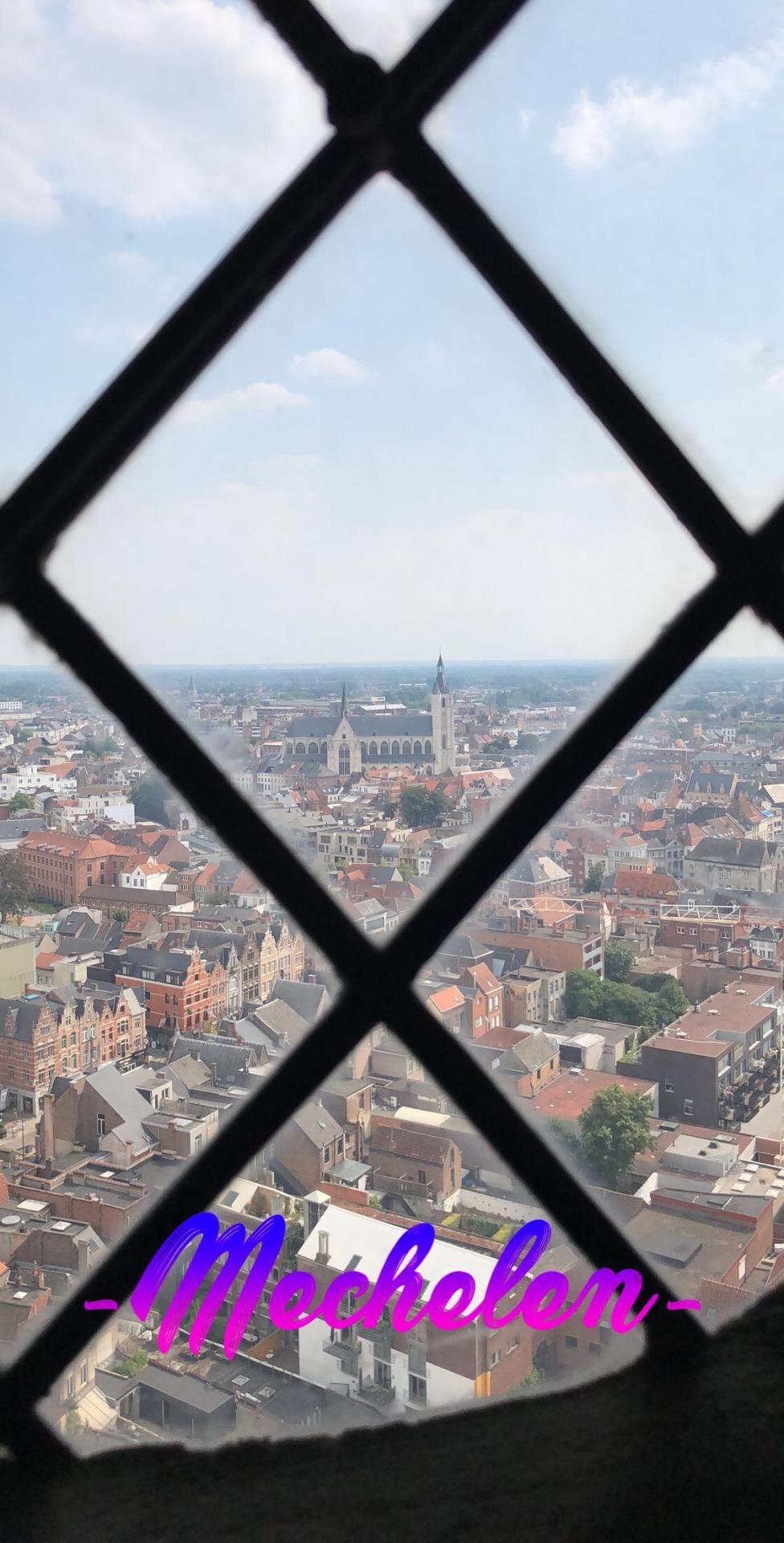
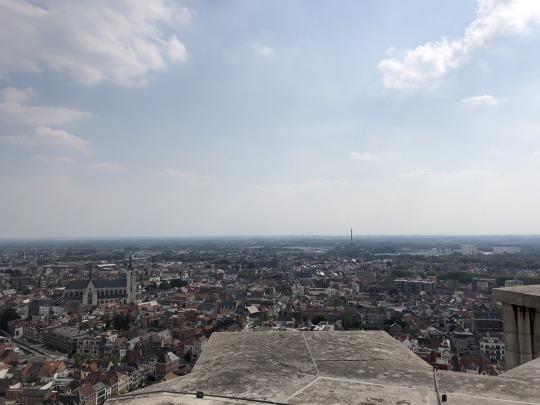
youtube
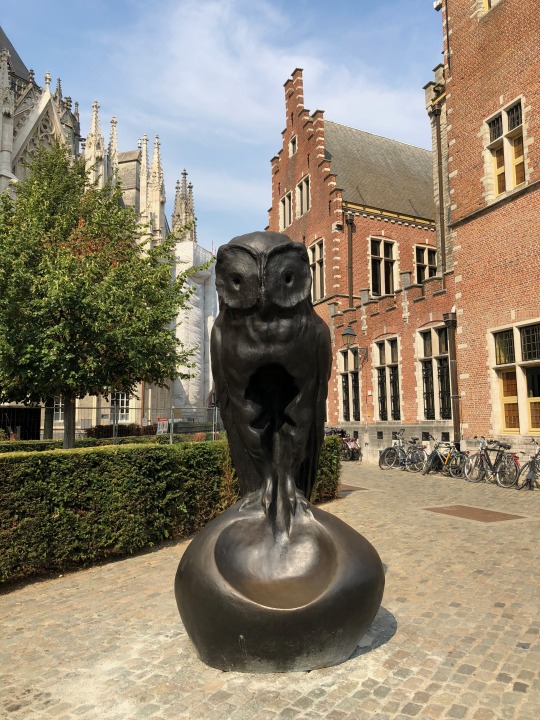
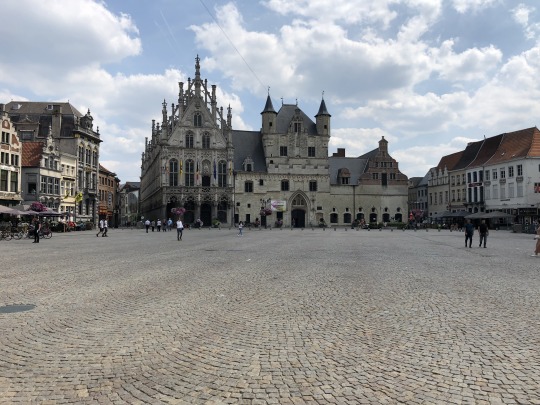
0 notes
Text
Travel Blog Post #13: 18/07/18
Goedenavond!
Schedule-wise, I am so far enjoying the timing of our activities in Belgium in comparison to that of the Netherlands. With days that start later and finish earlier as well as a generous amount of time allotted to lunch, living and learning in Belgium has been incredibly less hectic than the fast-pace Dutch lifestyle we experienced at the beginning of our trip. I truly hope this schedule pattern continues even on the days when we travel outside of Antwerp.
This morning, our day began as it usually does with a two-hour morning lecture. On this particular day, Professor Dewulf dove both deeply and broadly into the history, future, and current challenges of the European Union. Although I had previously self-studied a great deal about the European Union via countless news articles and government classes, Professor Dewulf was able to supplement my knowledge with a uniquely European perspective to the contemporary conditions of the European Union. For instance, I was fascinated to learn that the origins of the European Union began in the years following the Second World War with the creation of the European Coal and Steel Community, within which France and Germany were major players. In addition, I was amazed to learn that many of the foundational principles of the European Union emerged from a careful observation of the Benelux Union, a political and economic union of the independent nations of the Netherlands, Belgium, and Luxembourg. As a Global Studies major at UC Berkeley, I immediately began drawing comparisons to similar political and economic unions present worldwide, such as the Eurasian Economic Union headed largely by Russia.
For our two-hour lunch break, a small group of my friends and I took a leisurely stroll to the nearby Grote Markt where we were pleased to discover Fiesta Europa, a traveling festival showcasing European-made food, drink, clothing, and accessories. After a short walk around the festival’s vendors, each of us gathered our favorite foods and took the proper time necessary to enjoy them. I myself feasted upon a delicious platter of currywurst from a German sausage stall as well as a tasty Spanish tapas platter full of various cheeses, olives, and charcuterie, including mouth-watering jamón serrano!
Following lunch, the study abroad group and I visited the Museum Plantin-Moretus and its exhibitions dedicated to the history of this sixteenth-century printing office. Being one of Europe’s earliest and largest centers of printing at the time of its operation, some of the continent’s most noteworthy publications regarding science, medicine, cartography, and religion passed through the very halls I walked through today. Interestingly enough, the museum became increasingly more interesting as my friends and I ventured onto the building’s upper floors and discovered both breathtaking studies and libraries as well as extremely detailed manuscripts and prints.
Afterwards, the study abroad group and I walked quite some distance to MAS, Museum aan de Stroom. However, although the walk to the museum in the blisteringly hot sun was rather uncomfortable, I later discovered the museum to be well worth the temporary discomfort. Though classified as an anthropological museum dedicated to the rich multicultural history of Antwerp as a major center of world trade and exchange (“Antwerp and its Harbour,” 2010), the museum itself was quite bewildering at first. Instead of being set up chronologically, the floors and corresponding exhibition halls were arranged thematically and offered an interesting glimpse into both Belgian and human history. The building’s roof terrace views of Antwerp were quite spectacular as well.
Another delicious helping of Belgian hedonism, the waffle, concluded the evening pleasurably.
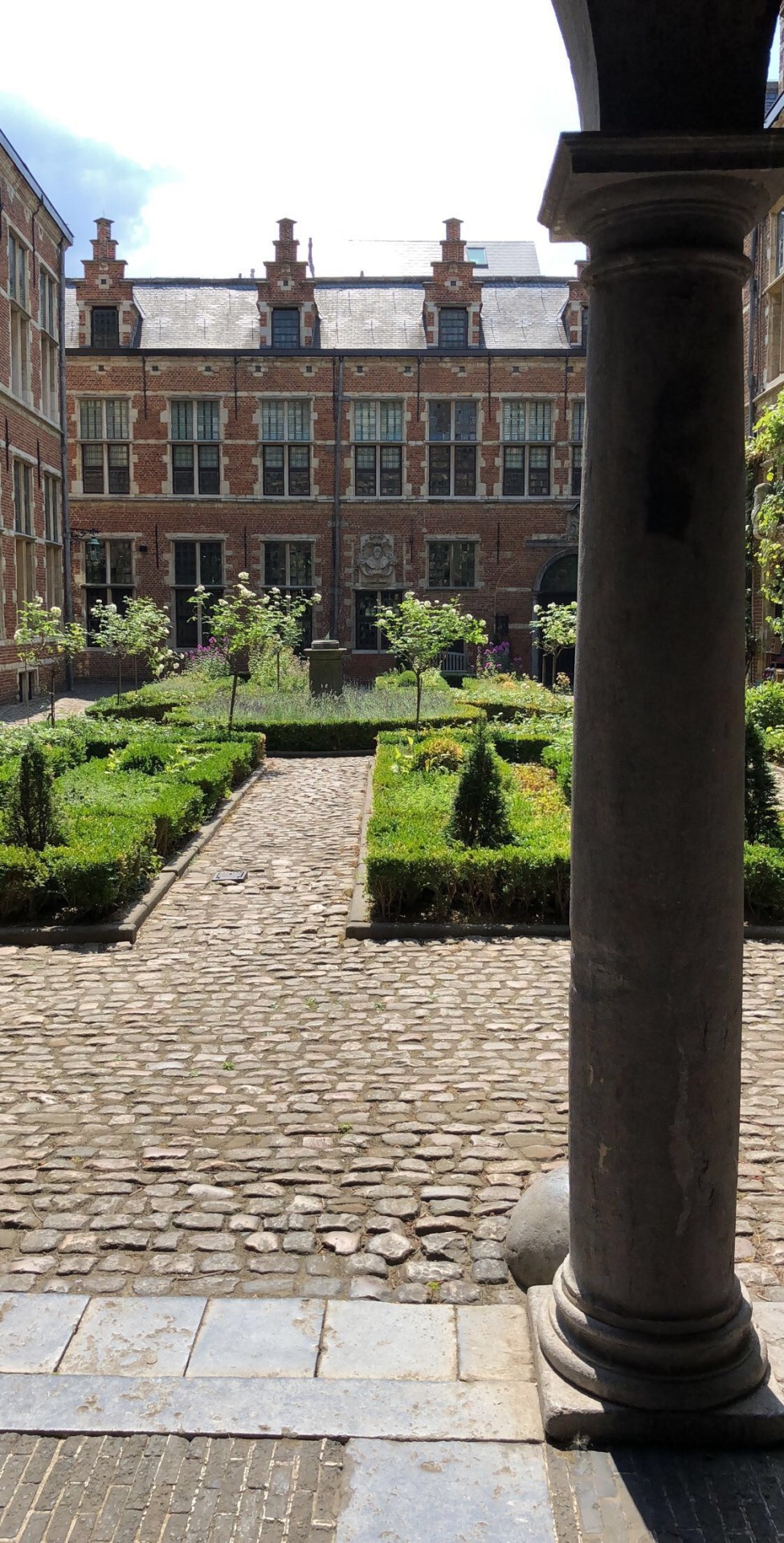
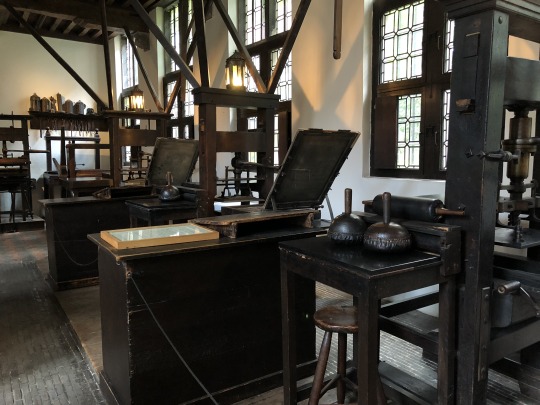
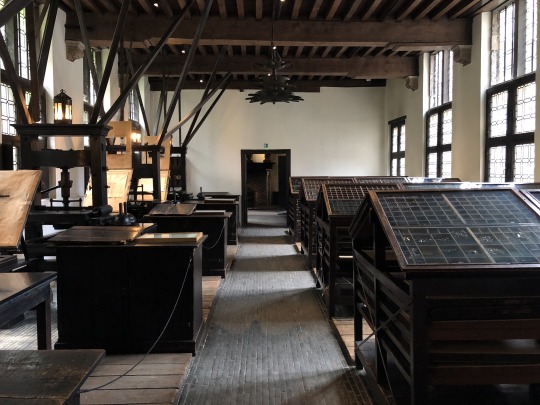
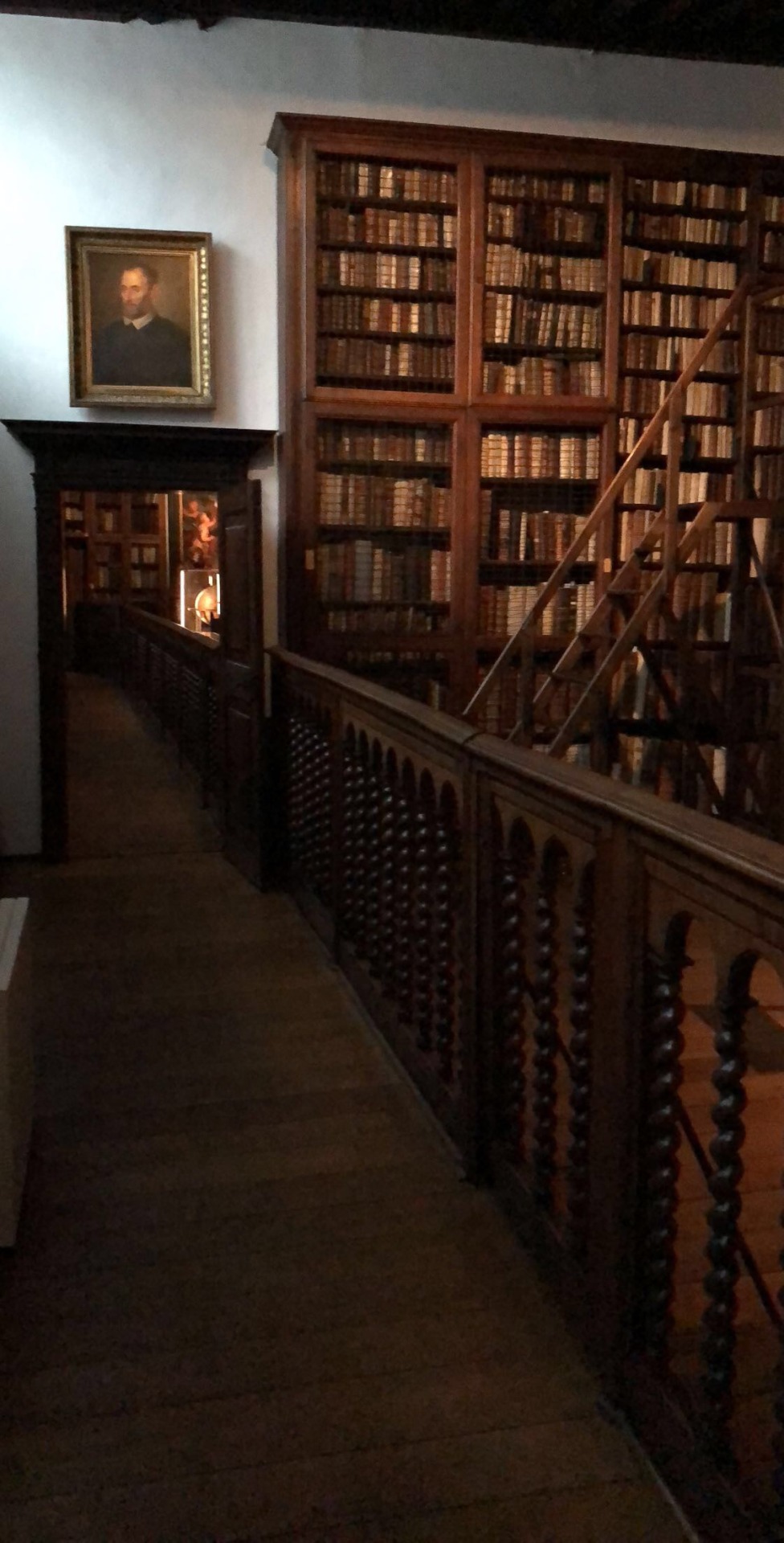
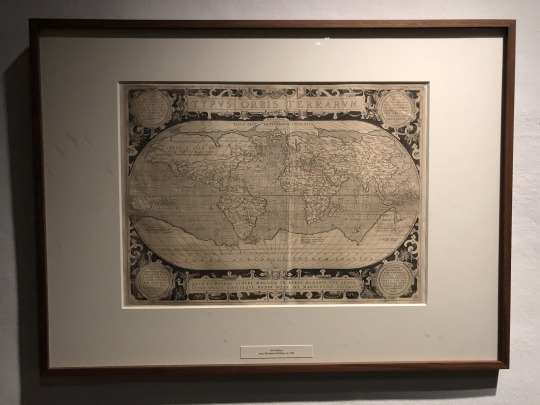
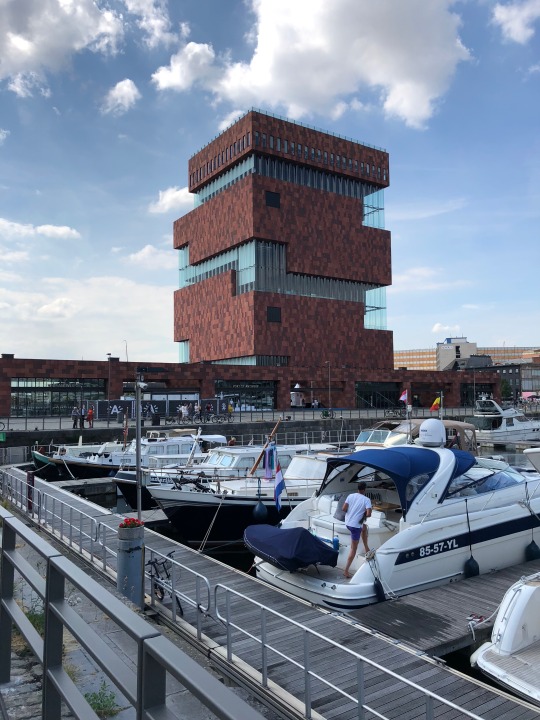
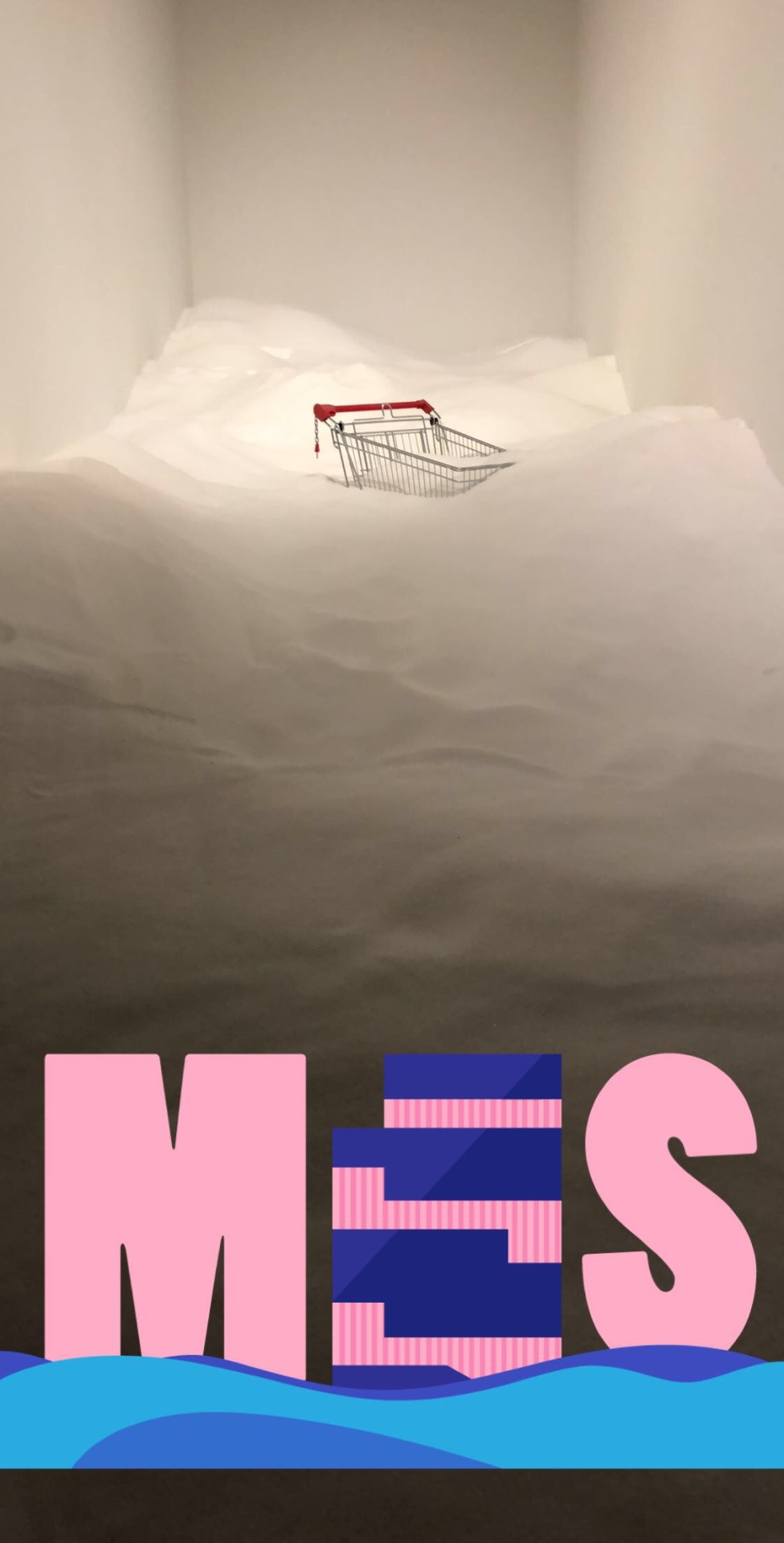
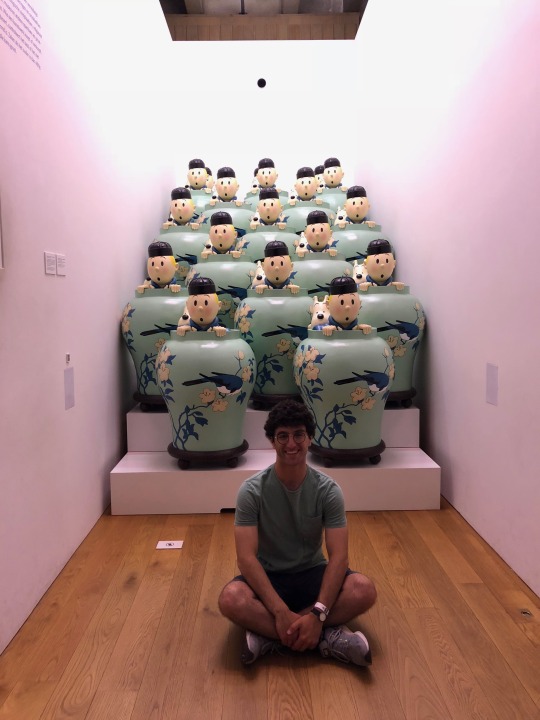
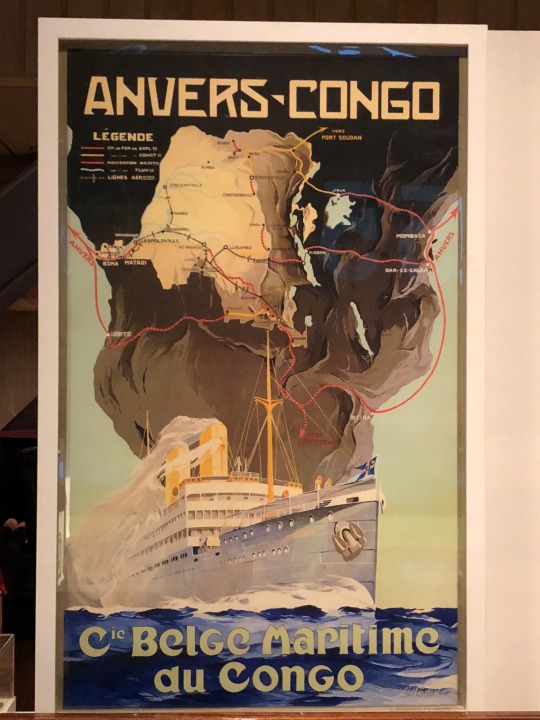
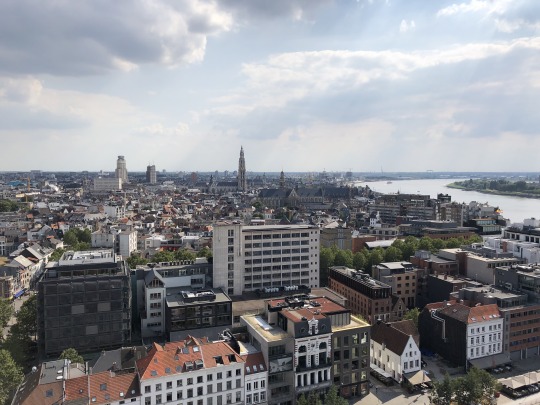
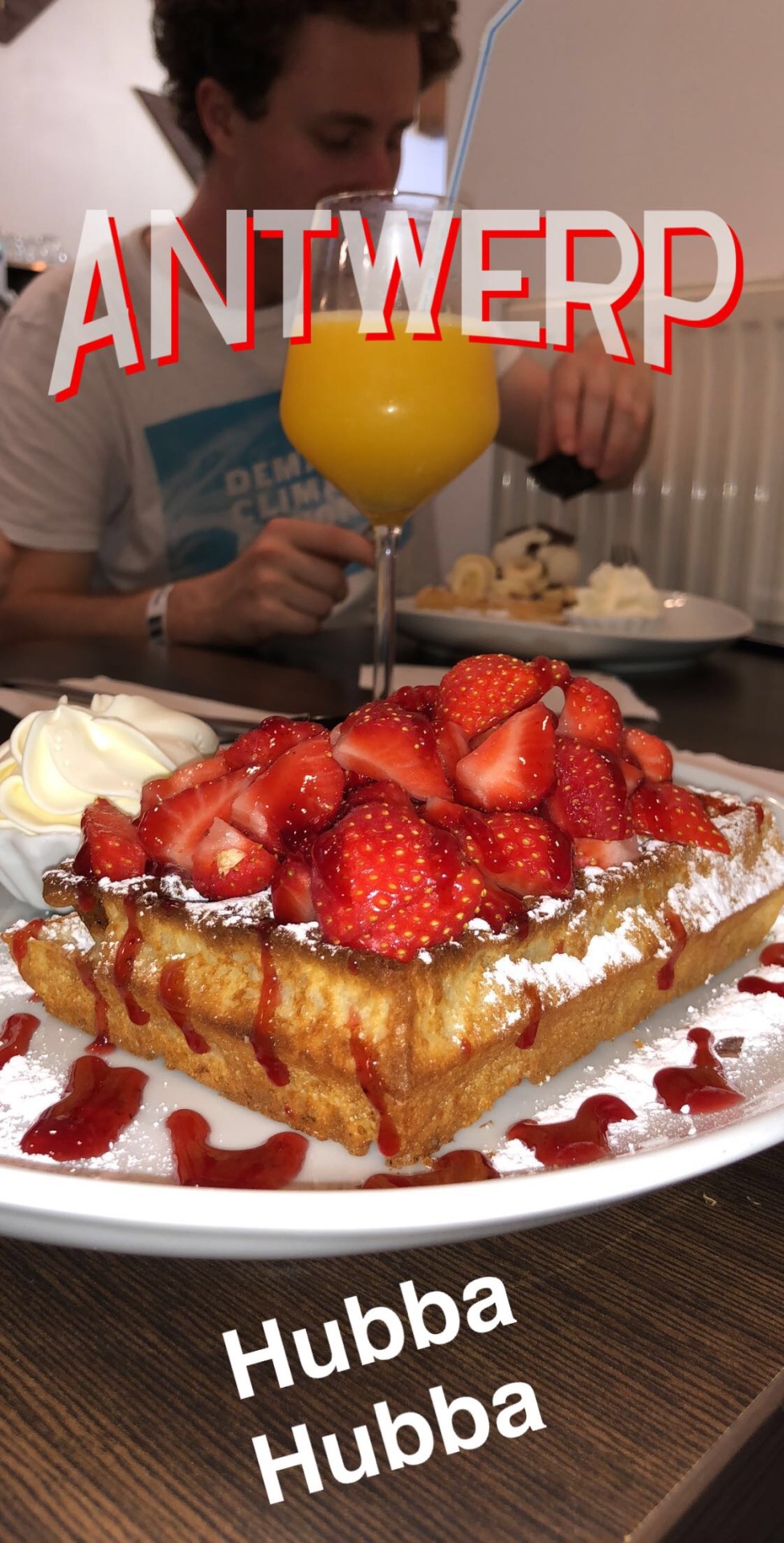
0 notes
Text
Travel Blog Post #12: 17/07/18
Hoi!
Following a restful night of sleep and another traditional Dutch breakfast of various breads, cheeses, deli meats, and marmalades, the study abroad group and I shuffled into one of our hostel’s conference rooms, which doubles as our lecture hall!
Over the course of the next two hours, we journeyed more deeply into the medieval origins of the region of Flanders, paying particular attention to the area’s sociopolitical and cultural history. After learning about Flanders’ past connections to France, the Holy Roman Empire, and Spain, we soon realized the true complexity of Belgian history but were determined to understand it to the greatest possible extent. I especially appreciated Professor Dewulf’s frequent historical anecdotes and interesting forays into lesser known characteristics of the European leaders we discussed in lecture. However, since the afternoon following lecture was dedicated to the cultural heritage of Belgium, specifically its spectacular art, Professor Dewulf also covered Flemish art history from the era of the “Flemish primitives” like Jan van Eyck and Hans Memling to the prevalence of twentieth-century Belgian surrealism and comics. A smile was brought to my face when images from Hergé’s The Adventures of Tintin appeared on the lecture slides. I had grown up with memories of my father recalling his time reading the world-famous comics during his childhood in Iran, and I nostalgically recalled reading them as well when I was younger.
After purchasing various pasta salads and fruit juices from the local Delhaize supermarket, my friends and I gathered on the hostel’s third-floor outdoor balcony to enjoy a relaxing two-hour lunch in the bright Belgian sunshine and cool Flemish breeze.
Following an incredibly satisfying lunch hour, the study abroad group and I took a short walk to the city center in order to visit the Cathedral of Our Lady, a beautiful example of Gothic European church architecture. Upon entering the church, one is immediately struck by the sheer scale of the interior of the building with its incredibly high vaulted ceilings, long stone promenades, and excruciatingly detailed stained glass. In addition to these factors, nearly every corner of the church is covered in artwork dating from the Northern Renaissance, including two of the most famous works of Pieter Paul Rubens: The Elevation of the Cross and The Descent from the Cross. Both triptych paintings were larger than life and incredibly humbling to the lone observer. Besides these two masterpieces, I found the woodwork on the church’s main pulpit to be particularly fascinating due to its depiction of Pocahontas as well as various flora and fauna originating in the New World like turkeys. Such artistry demonstrates the already extensive connections present between the Old World and the New World at the time of the church’s completion and serves as a representation of Antwerp’s significance as a major center of world trade and exchange.
After a short walk past Antwerp’s Meir shopping street, the study abroad group and I reached the Rubens House, the former studio and living space of the world-famous Flemish painter Pieter Paul Rubens. Apart from a select few of his own works, including a vivid self-portrait, the small house museum also included the works of other noteworthy European masters. For Rubens, the early seventeenth century was an extremely profitable time as churches and wealthy patrons commissioned him to produce more than “2,500 paintings between 1608 and 1640 with the help of his assistants” (“Antwerp: City of Rubens,” 2007).
Following our tour of the Rubens House and its inner garden, a delicious chocolate-covered street waffle and subsequent Belgian beef stew dinner served as the perfect conclusion to the day.
youtube
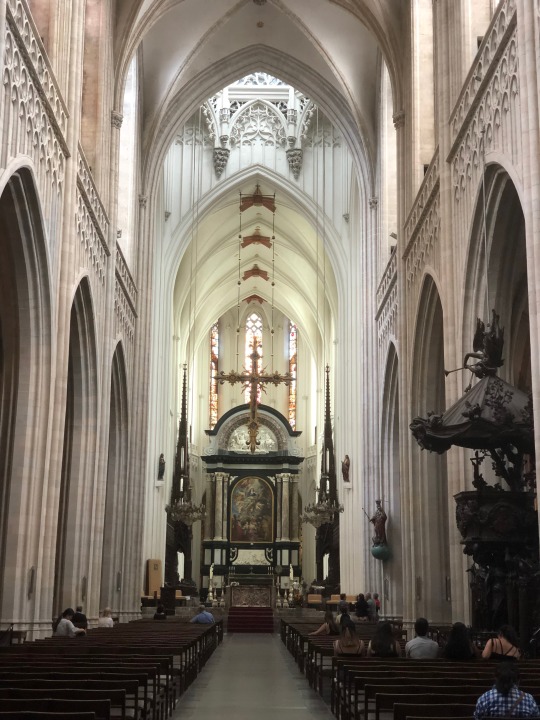
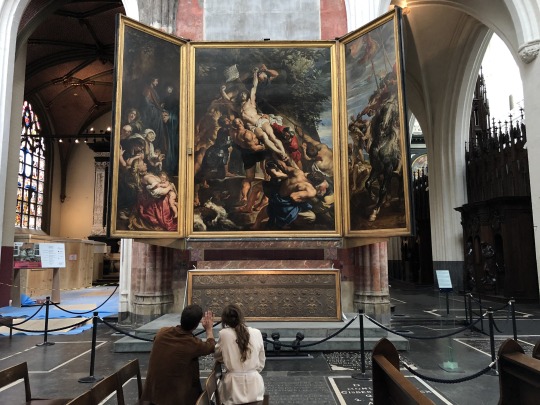
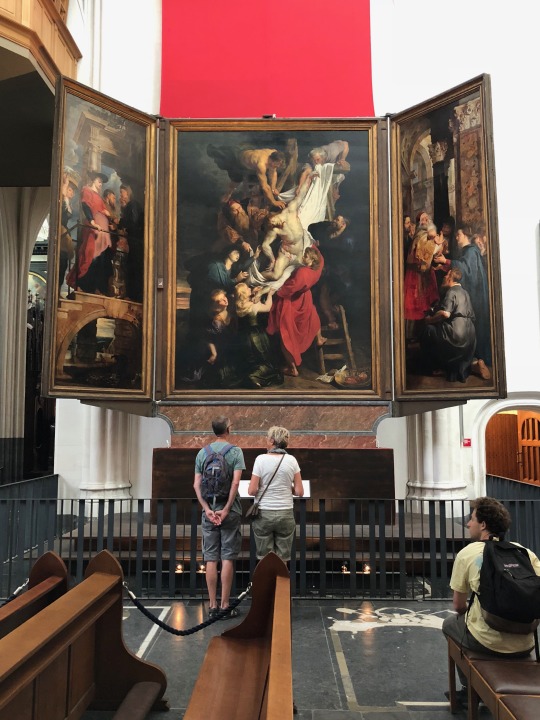
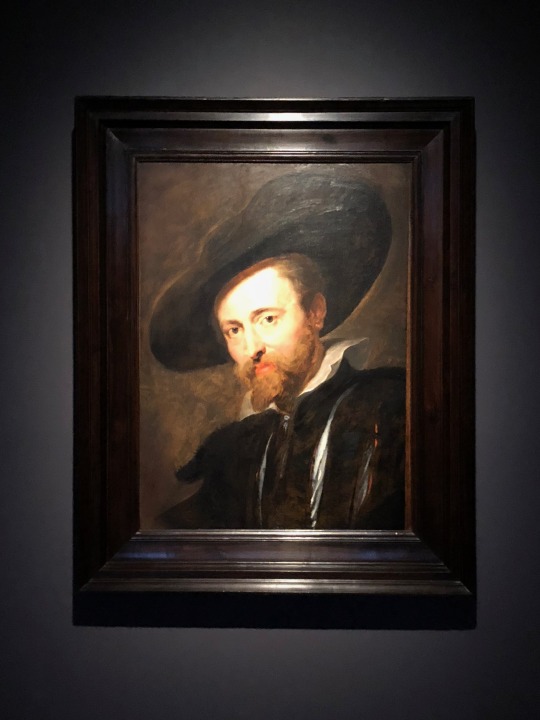
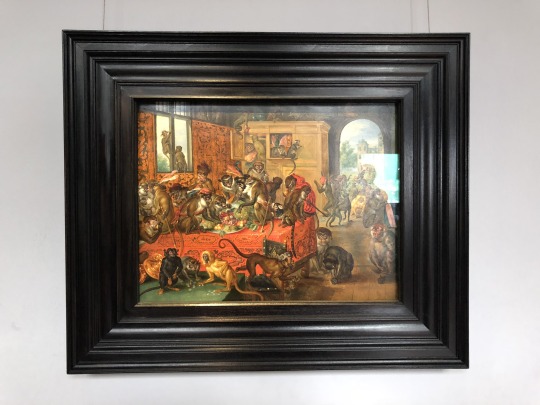

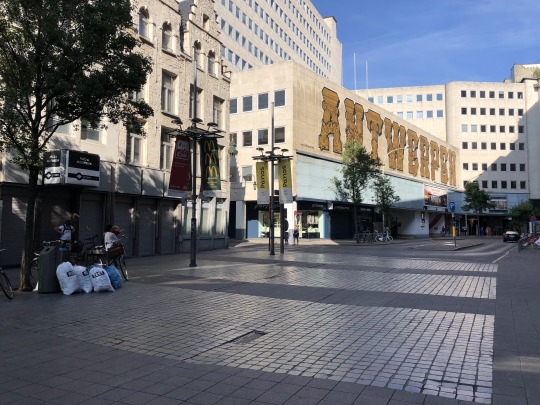
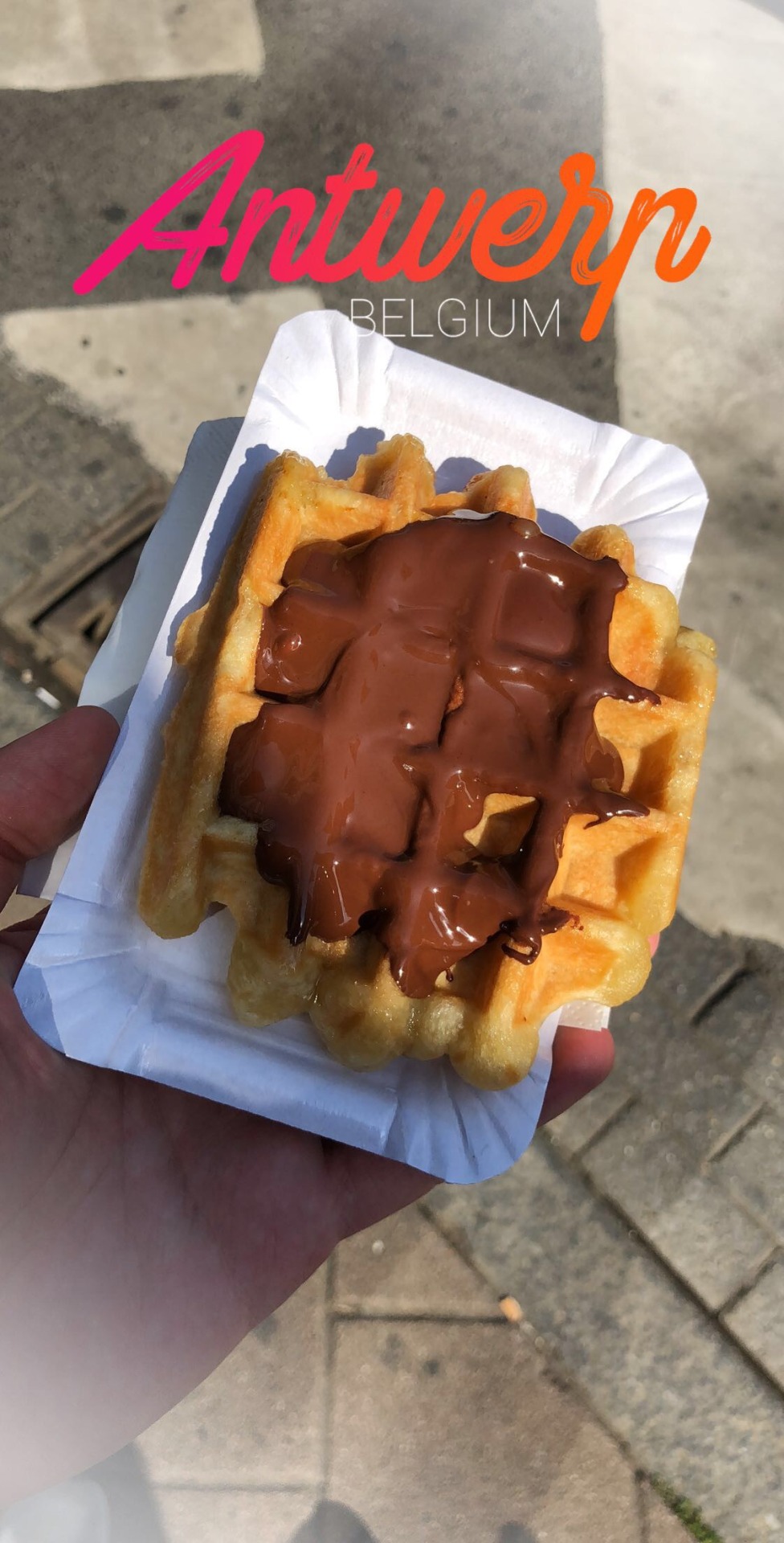
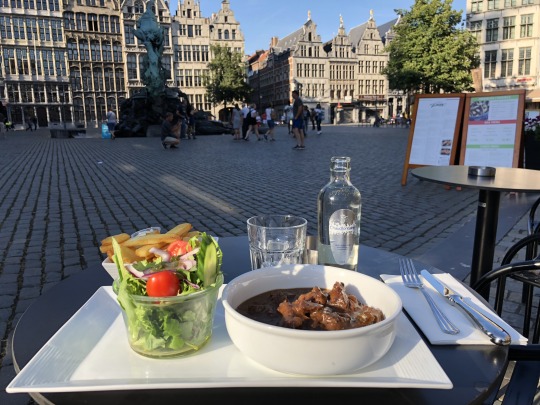
0 notes
Text
Travel Blog Post #11: 16/07/18
Hallo!
With the intention of making the most out of my final day in Amsterdam last Saturday, I woke up reasonably early and set about finding a delicious café at which to enjoy a peaceful breakfast. However, in order to truly make my visit to the Netherlands both authentic and complete, I decided to rent a bicycle for the day from our hostel and attempted to navigate the insanity of Dutch bicycle traffic! With a belly stuffed full of tasty breakfast foods, I soon began a solo tour of the Dutch capital’s picturesque streets and canals, passing through Vondelpark, the Rijksmuseum, and the city’s famous flower market. I even shortly visited the NEMO science museum and a beautiful nearby beer café that was situated at the tip of Amsterdam’s inner harbor. A lovely group dinner at the hostel followed by an evening spent listening to underground rock music at the incredibly hidden Vondelbunker served as a perfect conclusion to the night.
Nevertheless, the next day, the study abroad group and I were obliged to bid farewell to the wonderfully funky city of Amsterdam and begin our quick journey to Belgium! After stopping for a short walking tour and lunch in the southern Dutch city of Breda, we arrived in Antwerp on an early Sunday afternoon and were soon given a brief overview of the city’s key locations by Frank Wilaert, Emeritus Professor in Medieval Studies at the University of Antwerp, and his incredibly kind wife, Greta Wilaert. Their presentation was given to us earlier than scheduled in order to allow us to have enough time to settle into a crowded bar or restaurant near the town center from which we could watch the 2018 FIFA World Cup Final! Tired and weary for rest, my friends and I returned to our Antwerp hostel afterwards and went to bed earlier than usual.
Fully rested and prepared for an activity-packed day of learning and sightseeing, the study abroad group and I began our introductory lecture to Belgian history following a short yet nutritious breakfast. Over the course of almost two hours, Professor Jeroen Dewulf dove deeply into the history, identity, and politics of the nation of Belgium, but also cracked a few delightful jokes along the way in order to make the subject more interesting. I was particularly fascinated by the history of the rise of the Flemish Movement and its ties to Flemish nationalist thought, specifically the manner by which some Flemish hardliners collaborated in vain with Nazi Germany during the Second World War in hopes of securing Flemish and Dutch superiority across Belgium (“The Flemish Movement: On the Intersection of Language and Politics in the Dutch-Speaking Part of Belgium,” 2012).
Famished and in need of a break after our intensive lecture, the study abroad group and I then walked to Otomat, a creative pizza restaurant in the north of Antwerp that utilizes Duvel beer yeast in its pizza dough! The inconceivably large amount of pizza we received was undoubtedly impossible to finish but served as a prime example of the ostentatious nature of Belgian society when compared to the relative austerity of the Dutch in the north.
Following lunch, the study abroad group and I were given an extensive tour of the city and university of Antwerp, guided by the incredibly knowledgeable Professor Wilaert. Through his informative commentary, we learned both about the history and importance of the University of Antwerp as well as the rich cultural history of Antwerp’s sixteenth-century Golden Age. I found the view of the city from the opposite bank of the Scheldt River to be a particularly beautiful conclusion to the day.
youtube
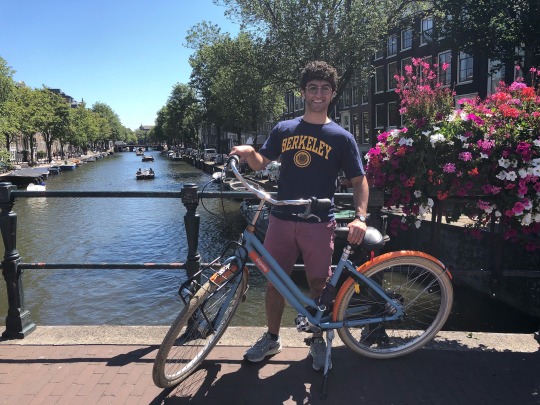
youtube
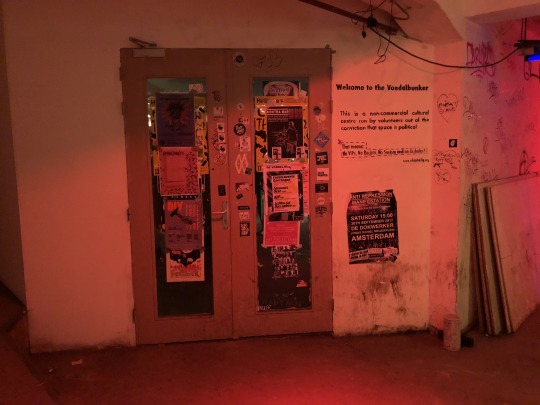
youtube

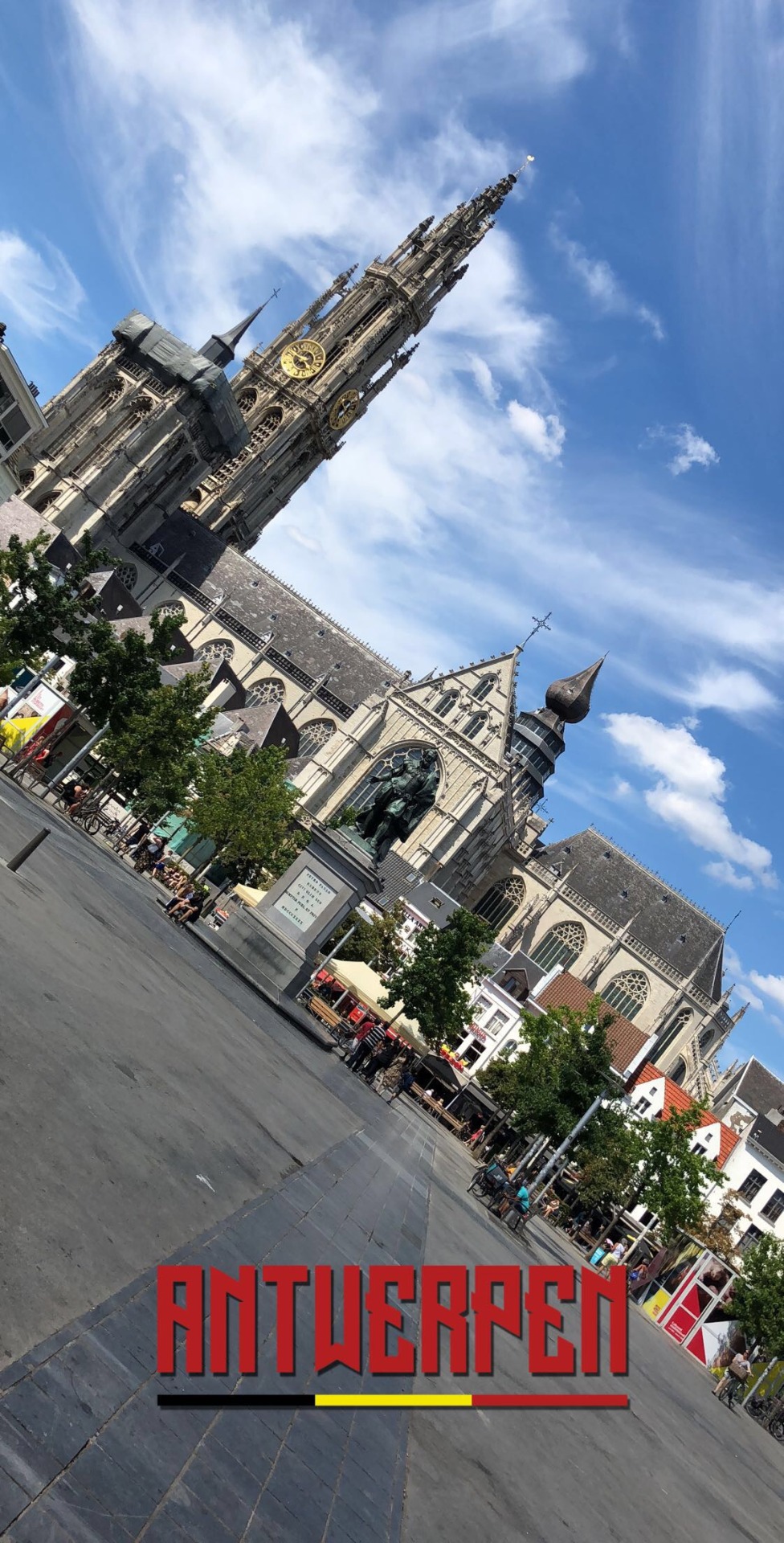
youtube
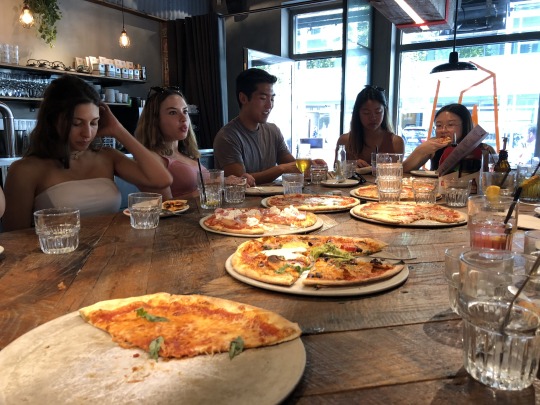
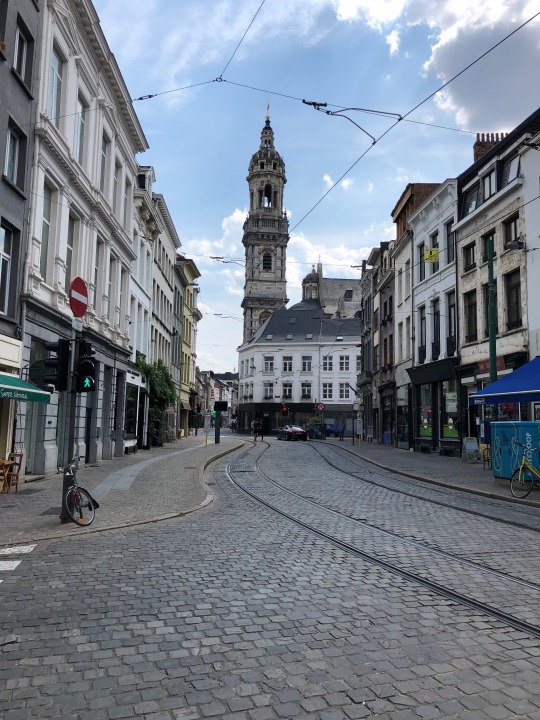
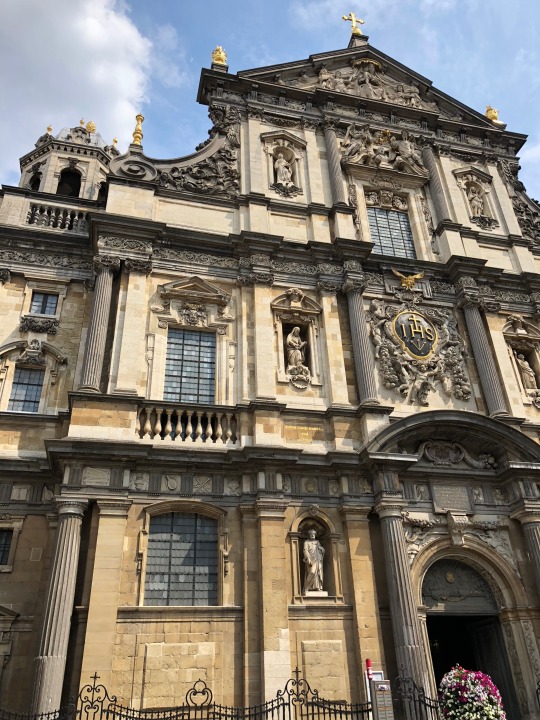
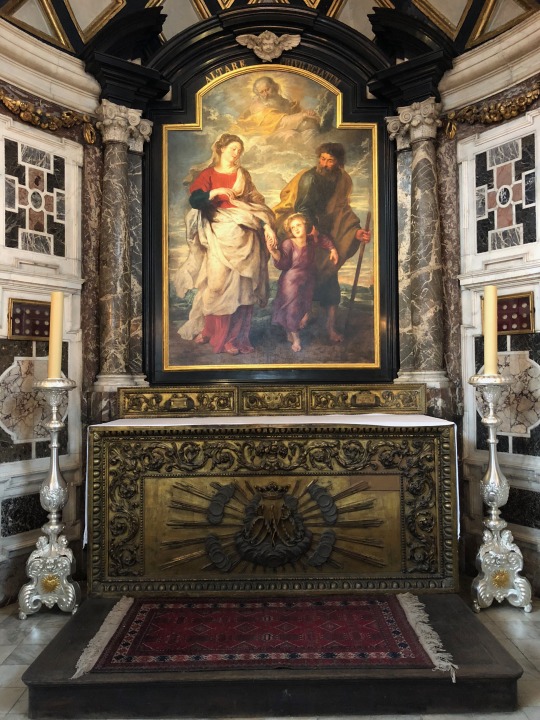
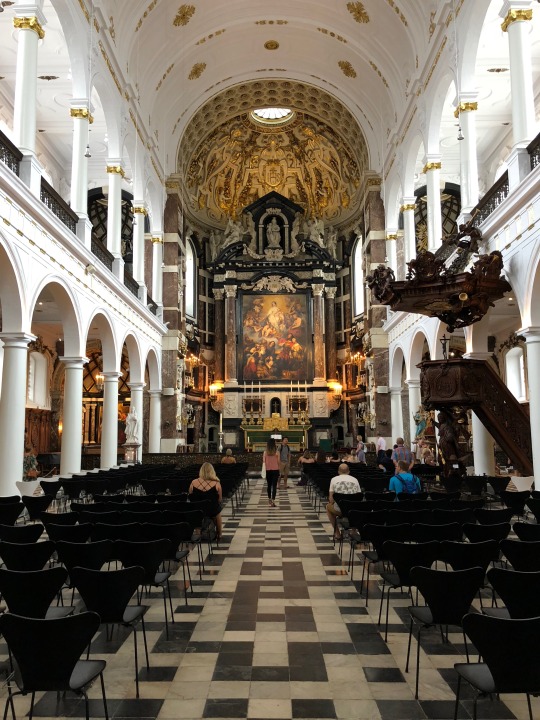
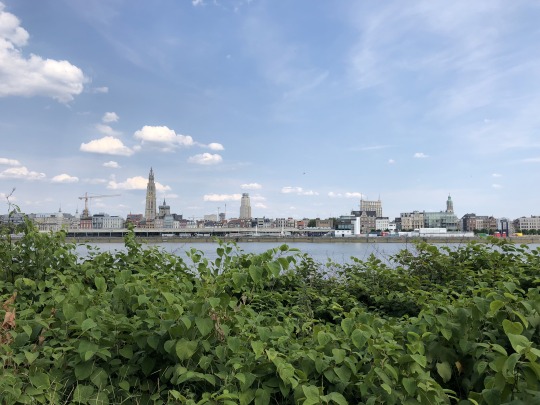
0 notes
Text
Travel Blog Post #10: 13/07/18
Goedenavond!
After our busy and activity-packed day yesterday touring Amsterdam through the lens of its contentious history surrounding the Second World War, nearly everyone in the study abroad group, including myself, were left feeling quite exhausted and desperately in need of rest. As a result, most of us chose to quietly relax in the hostel until evening arrived and then quietly went to bed at a reasonable hour. The result: a well-rested and focused group of eager students prepared to explore the exciting modern metropolis of Rotterdam!
Following our longest train ride yet (approximately an hour and fifteen minutes), the study abroad group and I arrived at Rotterdam Blaak station and were immediately welcomed by our lead tour guides of the day, Matthijs van Zuilen and Esther Terpstra of the Rotterdam Business School. Over the course of the next few hours, our two gracious guides led us through some of Rotterdam’s most fascinating architectural and historical wonders, including its world-famous and ever-busy harbor. I was particularly fascinated by the Black Forest complex of small homes and their oddly cubic and tilted organization. I imagine living within them would require a unique set of compromises that would be unnecessary in a much larger home. Furthermore, the city’s Markthal dining complex also amazed me immensely. Upon walking inside, one is immediately struck by the sheer number and variety of food stalls open for customers, serving everything from churros and ice cream to fresh fruits and vegetables. Since we were allowed to briefly explore this monument to culinary treasures for a few minutes, I could not resist purchasing a fresh set of poffertjes, tiny Dutch pancake balls drenched in butter and topped with a copious amount of powdered sugar. They were of course incredibly delicious and I had to almost forcibly restrain myself from purchasing more of them!
As we roamed along the modern avenues and building complexes of Rotterdam, I was particularly amazed to see the vivacity and vibrancy with which this great Dutch city was able to overcome its wartime devastation in favor of blazing a route to prosperity. From the Nazis “completely destroying the city center and killing eight hundred civilians” (“The Second World War: The Dilemmas of Occupation,” 2014) in 1940 to reemerging as a modern European city on the cutting edge of innovation, Rotterdam has evolved quite rapidly and extensively. In fact, I believe this capacity for resiliency and need for a general return to normalcy characterizes the societal personality of the Dutch people overall and contributes to the Dutch need for continuity and efficiency in society.
For lunch, a small group of friends and I visited Rotterdam’s Deliplein, another extravagant food hall full of a wide variety of both traditional Dutch foods and treats as well as an array of international foods. In order to conserve money and have a more communal dining experience, my friends and I shared a large board of Mediterranean tapas and bread but made sure to each purchase our own glasses of delicious local beer!
After an exhilarating but brief watertaxi ride back to the city’s Leuvehaven/Centrum neighborhood, the study abroad group and I made our way to Rotterdam Centraal station and boarded a train to Amsterdam. Upon arrival in the city, I was able to utilize our allotted free time to spend a quiet hour or two exploring the Spui Book Market. In fact, I even purchased a wonderful coffee table book on the nostalgic wonders of Japanese ekiben lunch boxes!
A delightful Dutch pancake farewell dinner for Professor van der Hoeven closed the evening perfectly.
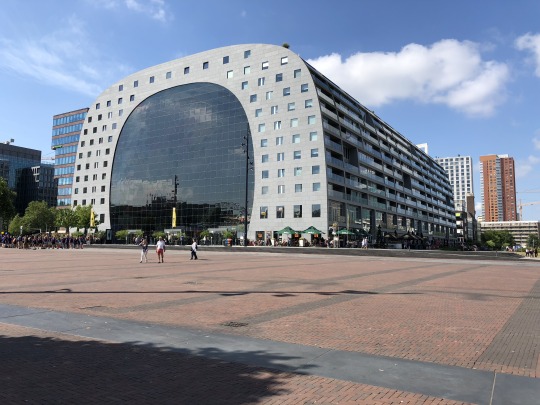
youtube
youtube
youtube
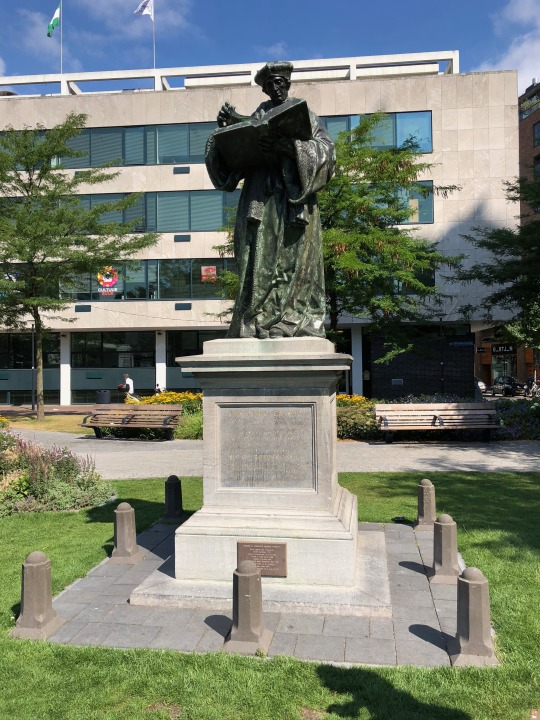
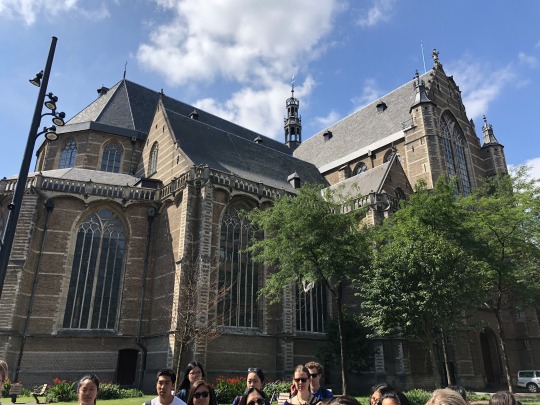
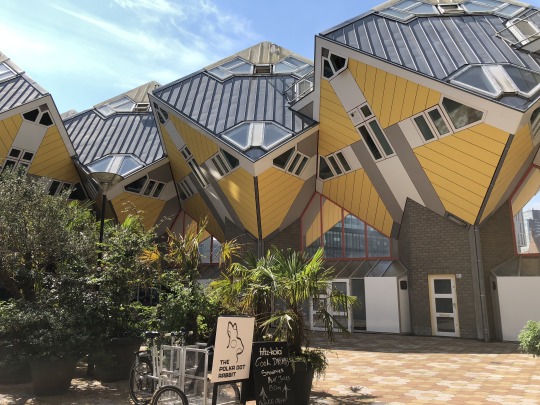
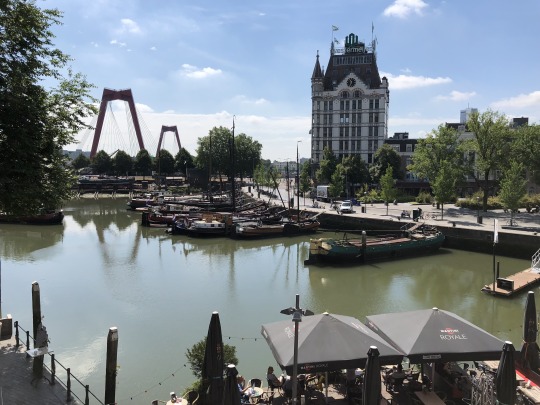
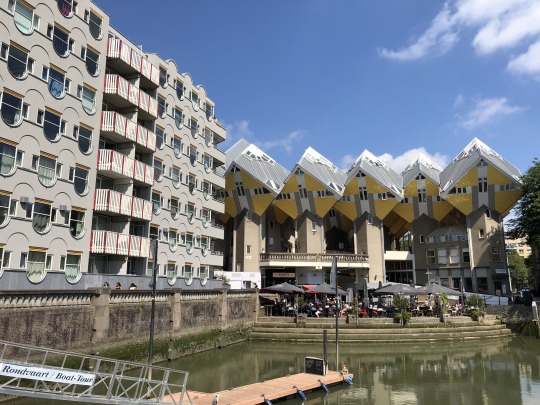
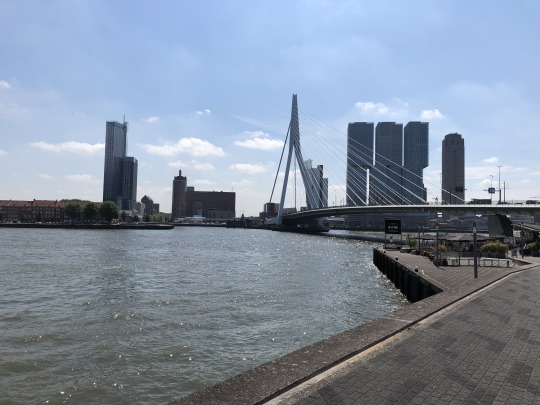
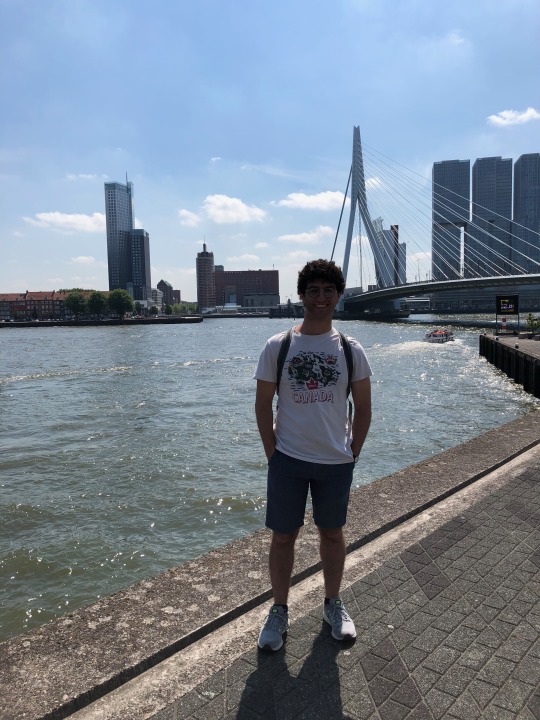
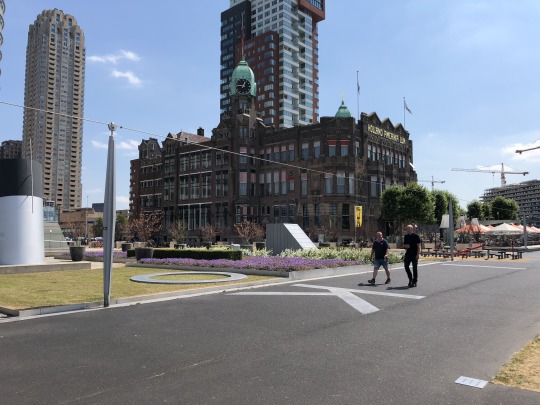
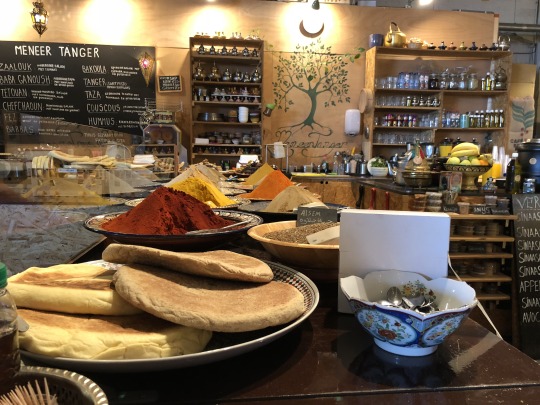
youtube
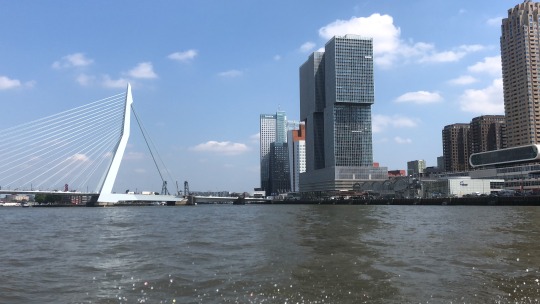
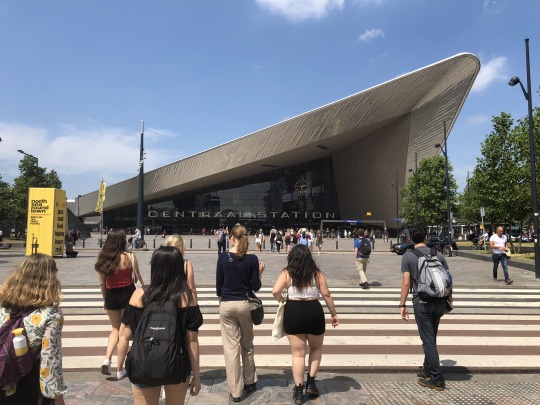
youtube
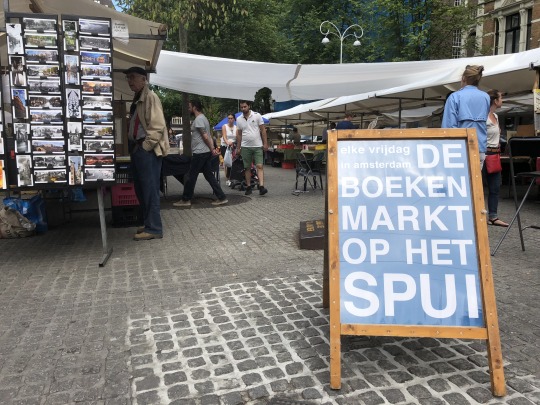
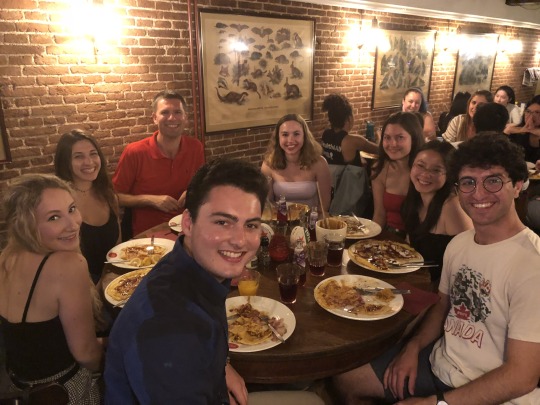
0 notes
Text
Travel Blog Post #9: 12/07/18
Hallo!
Although many members of the study abroad group decided to enjoy Amsterdam’s world-famous nightlife last night, I personally opted for a more relaxed and peaceful evening. After an exhausting past few days of constant activity and city exploration, I greatly desired an evening of rest in order to remain strong and healthy before beginning the second half of the travel-study course in Belgium.
Following a brief yet nutritious traditional Dutch breakfast of various breads, cheeses, sliced meats, and spreads, the study abroad group and I made our way once gain to Roelof Hartplein 430, the local public library in which our course lectures are held.
While previous lecture topics had been focused on far more light-hearted and oftentimes fun and interesting topics related to Dutch history, culture, society, and language, today’s lecture topic was far more sobering: the Netherlands in the Second World War, including the Nazi occupation and the Holocaust. After exploring and understanding the basic facts and figures related to the aforementioned topic, the lecture quickly dove into the effects of World War II on contemporary Dutch society as well as the two opposing images of pride and shame related to the war that still firmly swirl about the Dutch psyche. For instance, while today’s Dutch remain quite proud of their ancestors’ ability to resist Nazi propaganda and protest German rule throughout the occupation period (both among the masses as well as through the formal resistance movement), the harsh realities of the largely successful Holocaust in the Netherlands remain a powerful point of national shame. In fact, the overwhelming level of Dutch cooperation that led to the extermination of approximately three-fourths of Dutch Jews shadows most of the pride surrounding heroic acts of resistance over the course of the war.
After another traditional Dutch bagged lunch, the study abroad group and I visited both the Jewish Historical Museum as well as the Portuguese Synagogue in order to learn more about the history of the Dutch Jewish community. Although both sites followed a similar architectural style, each place uniquely contributed to my understanding of the longstanding presence of Jews in the Netherlands and the ways in which Dutch Jews exhibited both Dutch cultural habits as well as Jewish ones.
Following another pleasant walk along the picturesque streets, squares, and canals of Amsterdam, the study abroad group and I eventually reached the Resistance Museum (Verzetsmuseum), a site housing exhibits dedicated to the history of the Nazi occupation of the Netherlands. The incredibly informative audio guide in conjunction with detailed descriptions below almost all artifacts made this museum particularly helpful in supplementing many of the topics covered earlier today in lecture.
Soon, after briefly walking by the memorial dedicated to the homosexual victims of Nazism (Homomonument), we arrived at one of the most highly anticipated museums of the study abroad program: the Anne Frank House. Following an introductory presentation to the museum, its importance, and its outreach programs by Jan Erik Dubbelman, Head of the Educational Projects of the Anne Frank House, the study abroad group and I visited the museum in its entirety. Upon entry, one immediately feels the historical significance of this particular hidden home and quickly draws connections to the lives of millions of other Jews murdered by the Nazi regime. It is within this context that Anne Frank herself became an icon of the Holocaust and symbol of countless other lives cut short due to hideous bouts of prejudice and inhumanity over the course of history (“The Second World War: The Dilemmas of Occupation,” 2014).
I am looking forward to our visit to Rotterdam tomorrow!
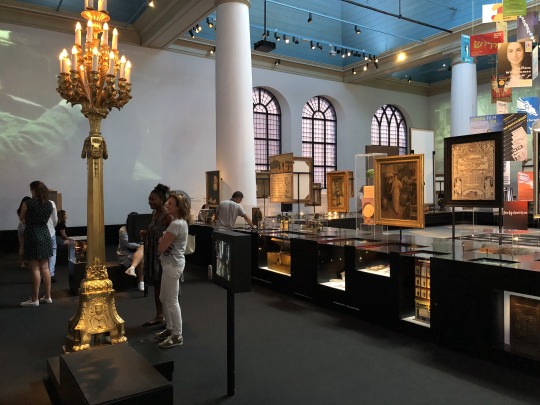
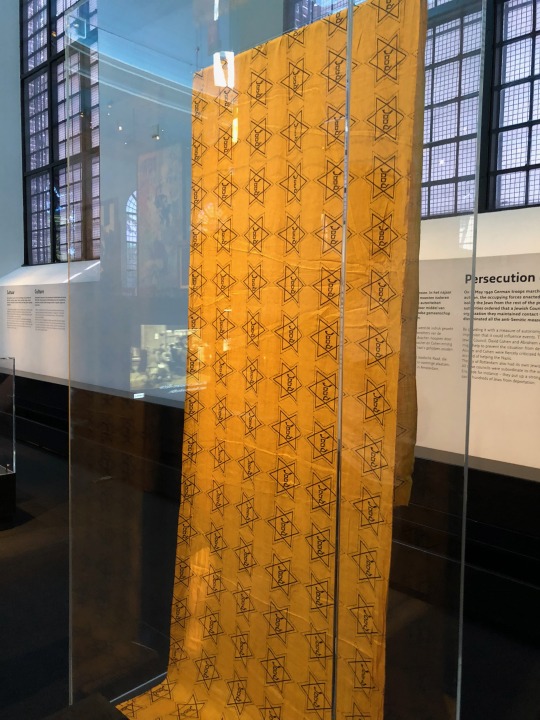
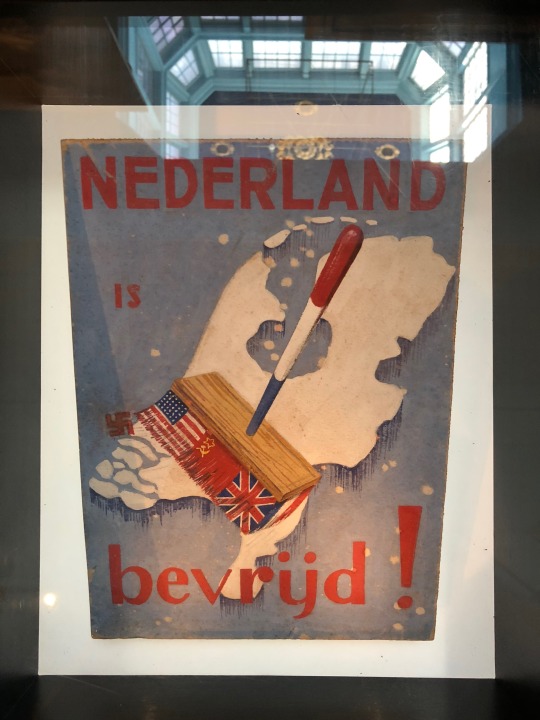
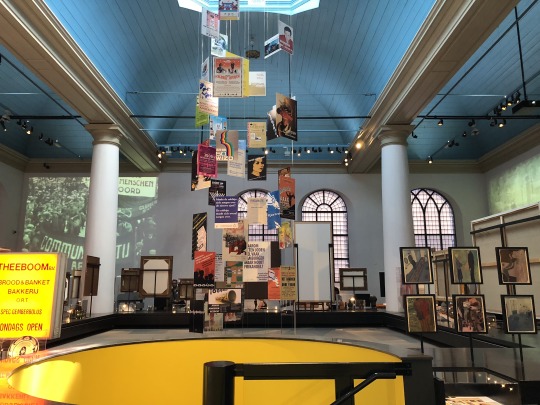
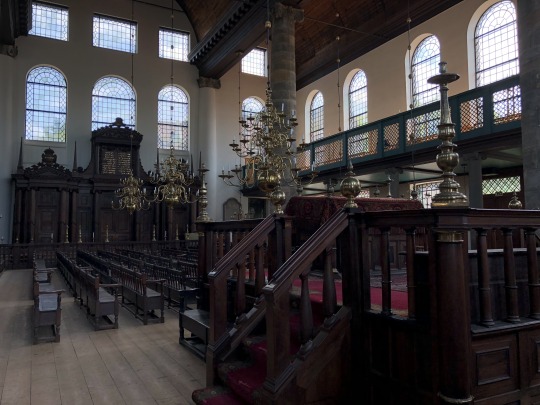
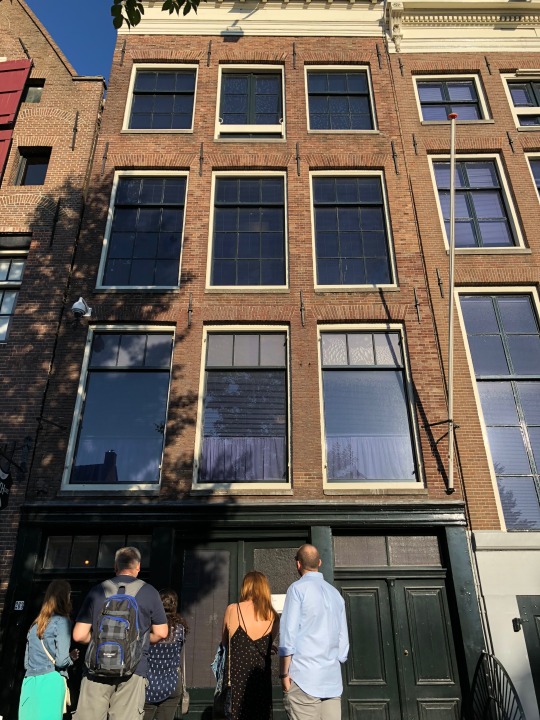
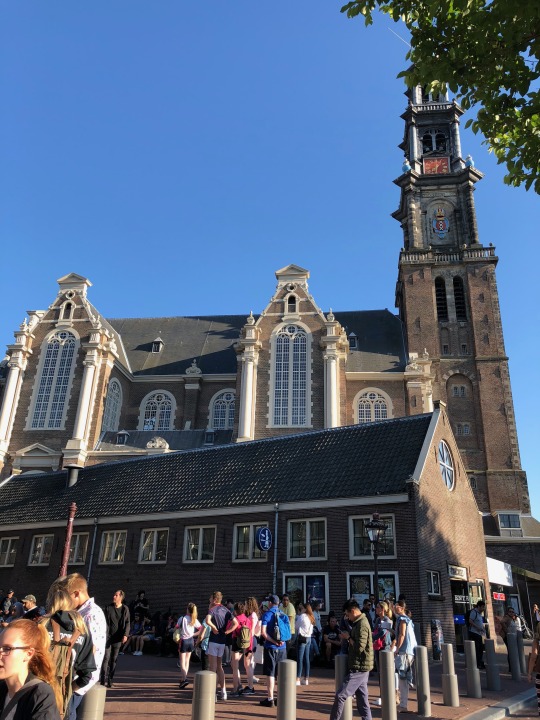
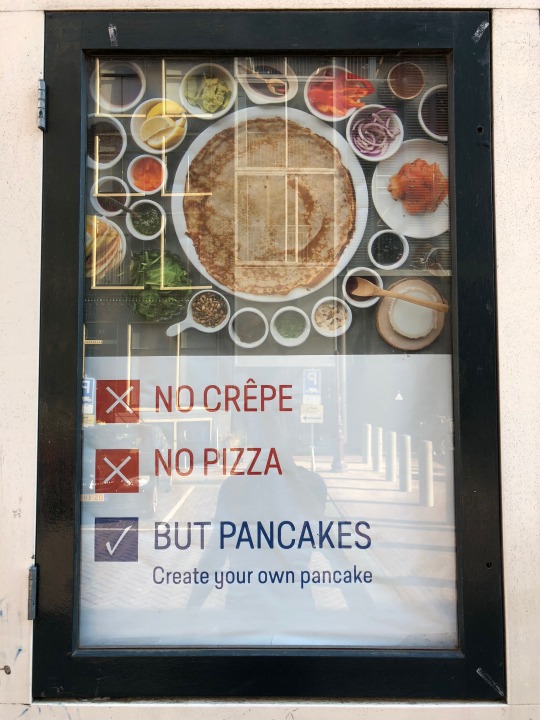
youtube
0 notes
Text
Travel Blog Post #8: 11/07/18
Hoi!
As I have become more adjusted to the pace of study abroad life over the past week, I have come to realize that balancing a demanding daily schedule with nightly blog posts and free time can be quite tiring. Though I did not rest as much as I would have preferred last night, another early morning start today meant that I would once again need to gather every ounce of energy within me and commit to making the most of our study abroad group’s excursion to Leiden.
Following our arrival to Leiden Centraal station this morning, the study abroad group and I made our way to the Leiden University academy building, the Academiegebouw. There, we were met by Liesbet Winkelmolen, a lecturer in Dutch Studies at the university. After a brief introduction to the university, the study abroad group and I received an incredibly fascinating tour of some of the university’s most historic sites and rooms, including the grand auditorium, the famous “sweat room,” the PhD defense room, the professors’ cloakroom, and the botanical garden. I was particularly amazed to discover that an early doctor and professor of botany associated with Leiden University, Carolus Clusius, grew the first Dutch tulips in the university’s botanical garden, leading eventually to the now infamous years of tulip mania in the Netherlands (“The Golden Age,” 2014).
Soon afterwards, the study abroad group and I began a detailed and extensive guided city tour of Leiden led by Liesbet Winkelmolen. As we explored the picturesque canals and tight alleyways of Leiden’s Old Town, we encountered several important historical sites, including Rembrandt’s birthplace, the Pilgrims’ House, secluded almshouses, a medieval citadel, and the town’s important waterways.
Having spent nearly two weeks in the Netherlands so far, my senses have begun to more often notice the quintessentially Dutch personality traits I first learned about in the course’s introductory lecture. Recently, I have realized the incredibly opinionated directness that characterizes the Dutch way of thinking and interpersonal communication. Such stubbornness, or eigenwijs, seems to very often contribute to frequent debates among Dutch people regarding nearly every topic imaginable. While I myself immensely appreciate such a personality trait and find it honest, the lack of personal facades in Dutch society can certainly appear jarring to an unaccustomed foreigner like myself. In comparison, Americans like myself are incredibly friendly upon first sight, though such friendliness may not always be genuine and can in itself lead to a plethora of passive-aggressive conflict.
For lunch, a small group of my friends and I enjoyed our now customary traditional Dutch bagged lunch in one of Leiden’s few parks. However, since were given an ample amount of free time during this particular lunch break, we soon found ourselves exploring the twice-weekly open-air market in Leiden’s city center. Although we had all filled our stomachs considerably well with both that day’s bagged lunch as well as an ample amount of complementary cheese from the market’s various cheese stalls, my friends and I were unable to resist indulging in a deliciously syrupy and sweet dessert from a nearby fresh stroopwafel stand!
Lunch was followed by a fascinating visit to the Rijksmuseum Boerhaave and its exhibitions dedicated to some of the most significant Dutch contributions to the worlds of science and medicine. Its anatomy theater, the Theatrum Anatomicum, was particularly interesting and offered a fascinating glimpse into both the world of early modern medicine and the great potential mankind possesses.
After a relaxed doner kebab dinner along the canals of Leiden’s Beestenmarkt, the study abroad group and I returned to Amsterdam in the evening via train.
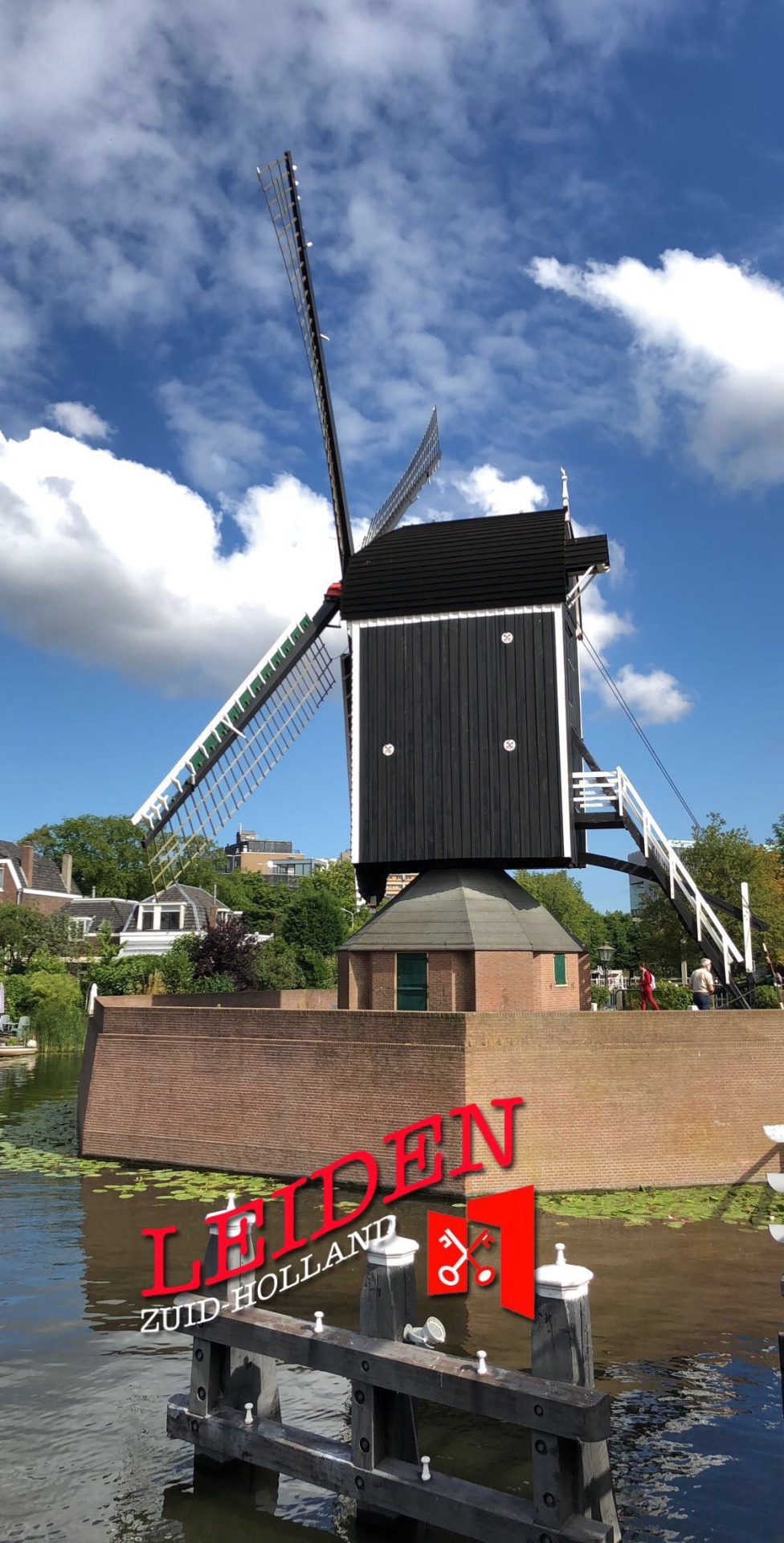
youtube
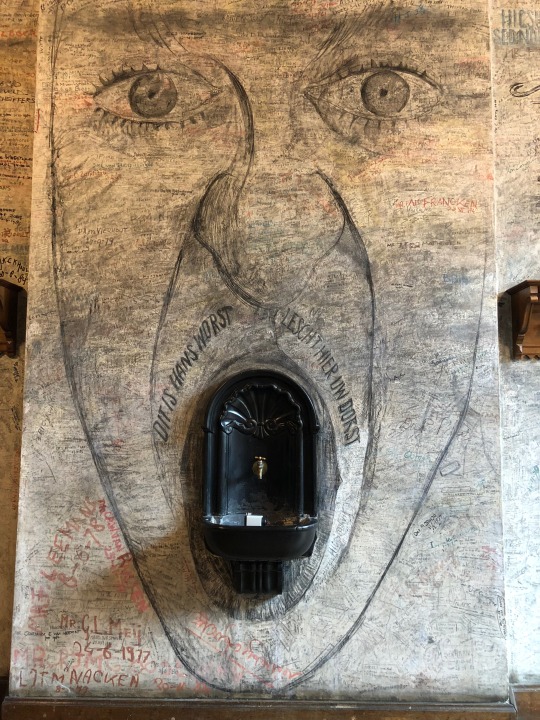
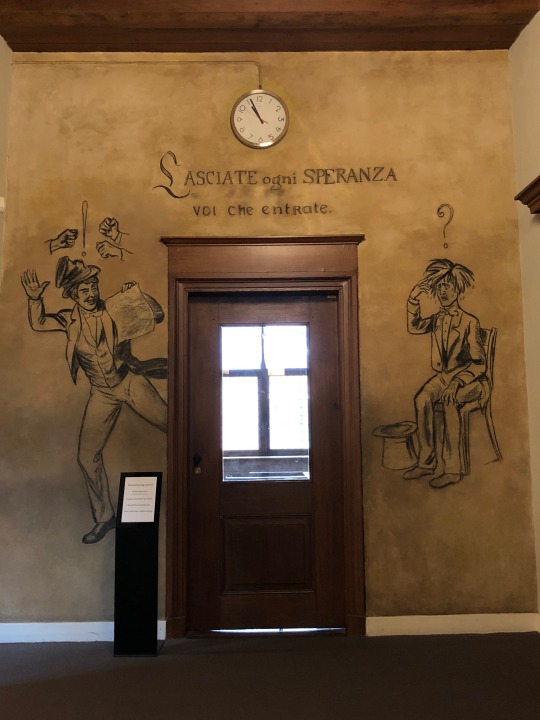
youtube
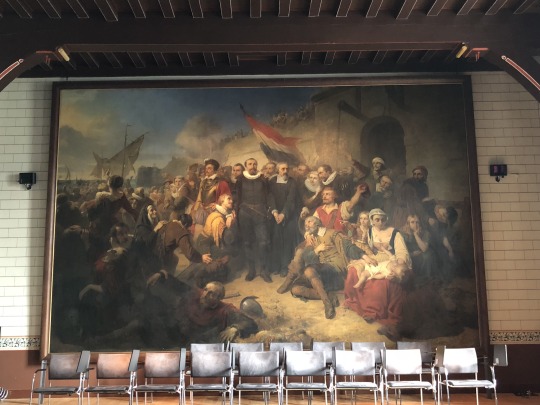

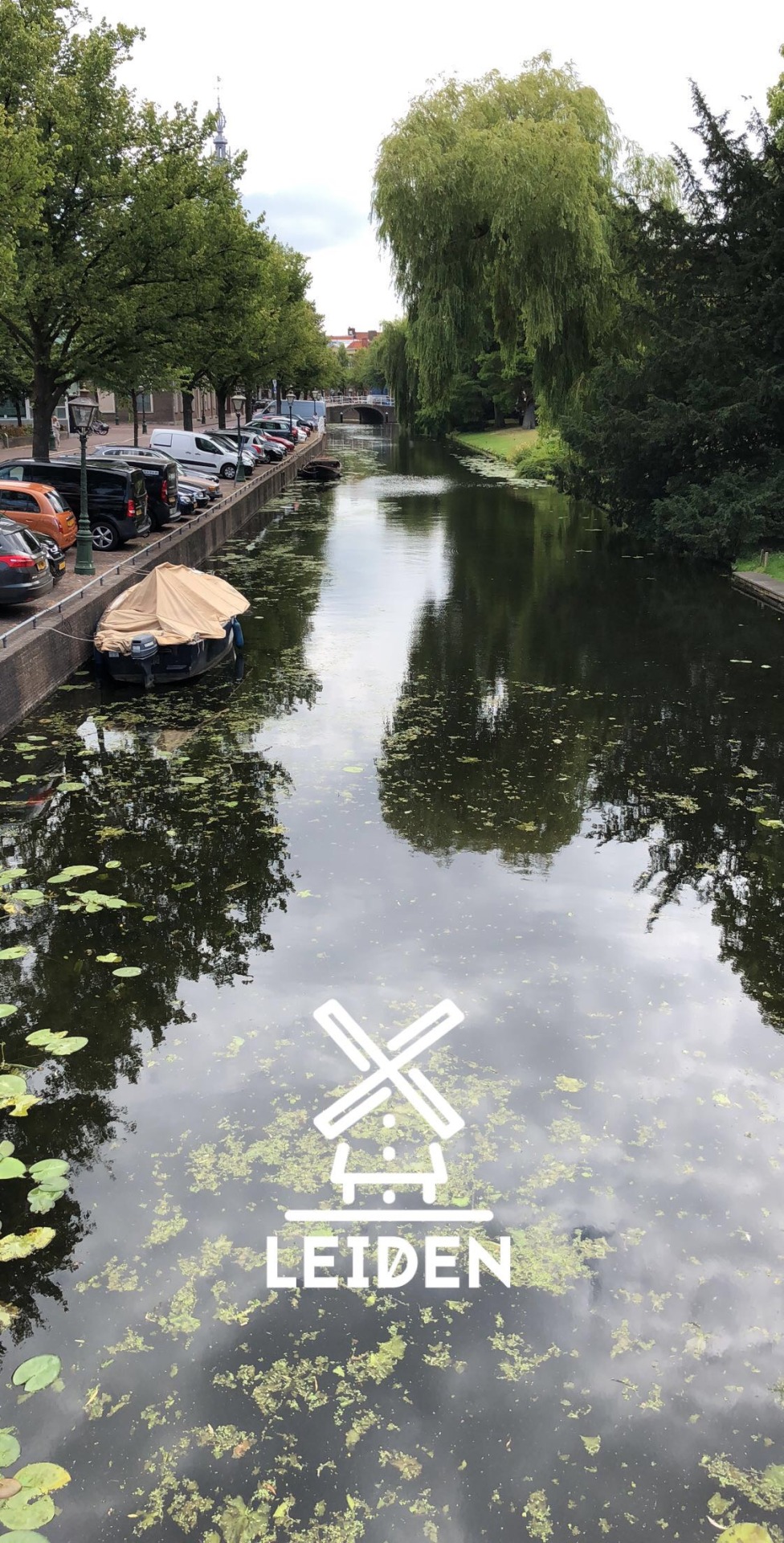
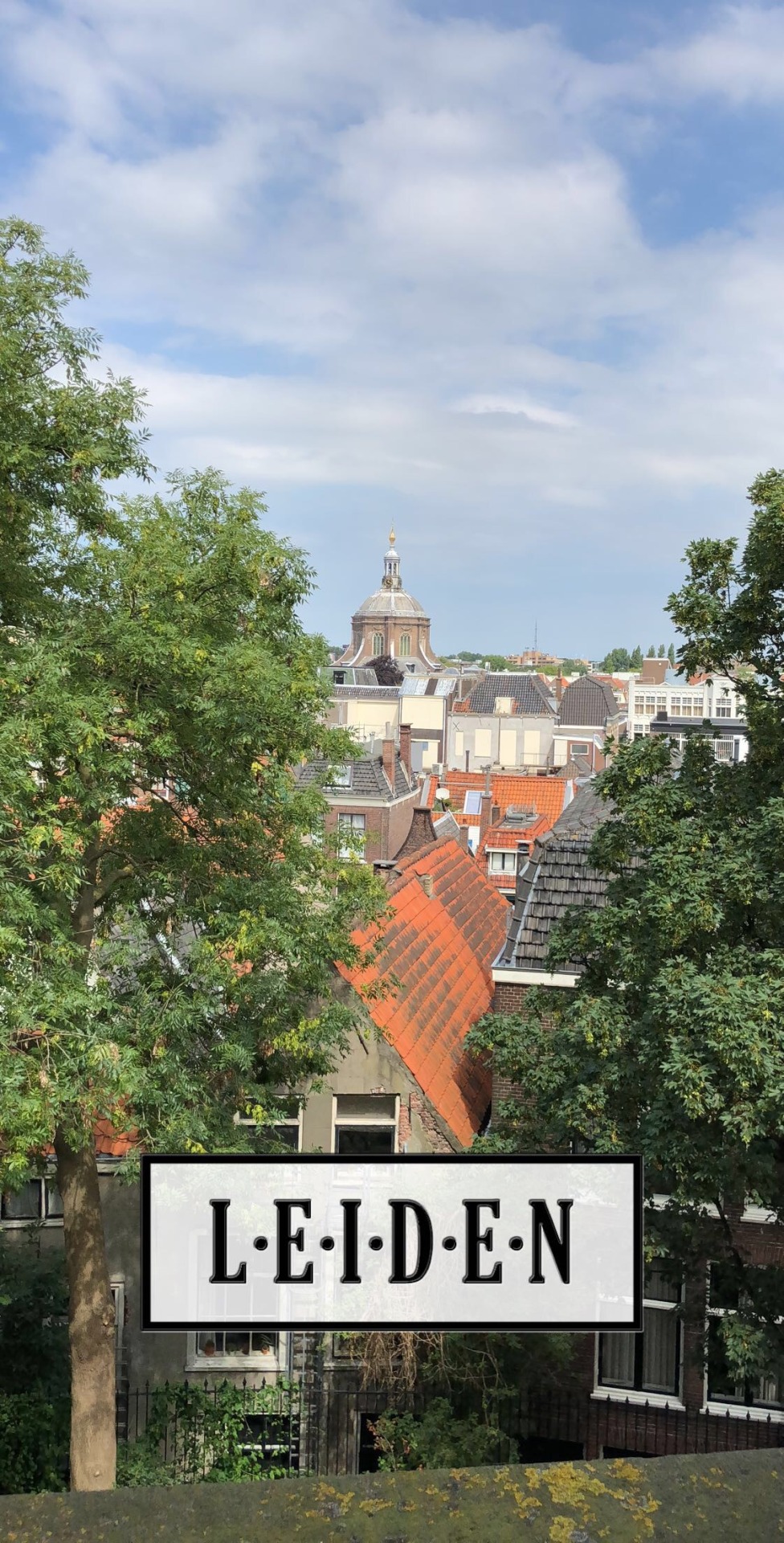

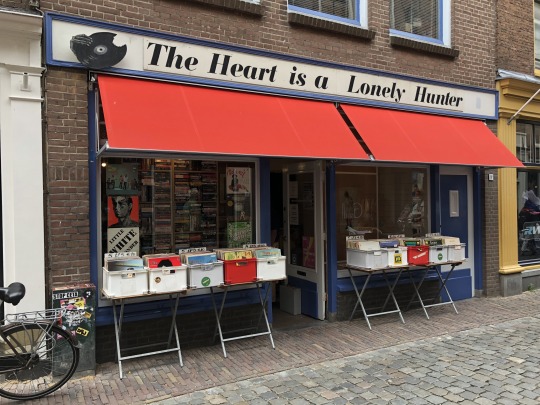
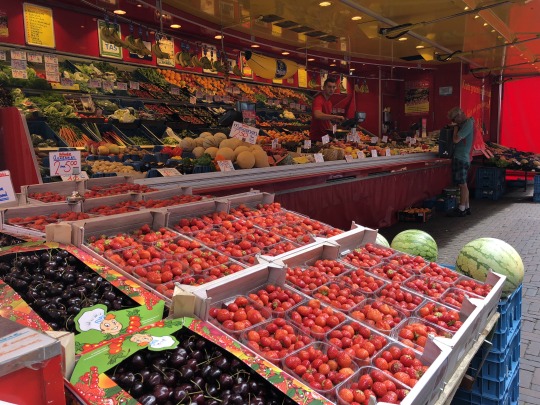
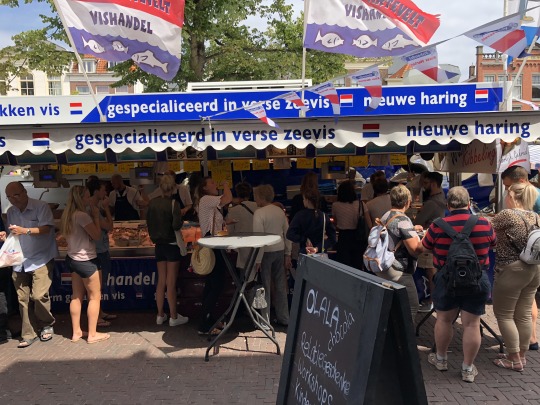
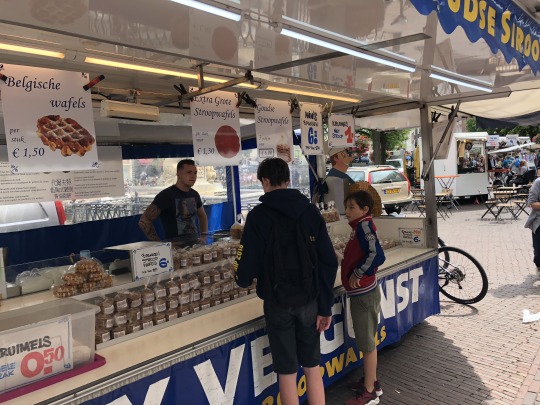
youtube
0 notes
Text
Travel Blog Post #7: 10/07/18
Goedenavond!
An early start to the day we visited The Hague meant a quiet morning characterized by nearly two dozen sleepy college students tramping about the Netherlands! Consequently, the morning train ride to The Hague was unusually more quiet than usual.
Nonetheless, upon arrival in The Hague, the study abroad group and I were able to muster up enough reserve energy to gather our wits and begin exploring the Dutch political capital!
Following a brief stop at the nearby Stadhuis (City Hall) for a bathroom break, the study abroad group and I began trekking into the city center and eventually came upon Het Binnenhof, which houses the buildings of the States General of the Netherlands, the Ministry of General Affairs, and the office of the Dutch Prime Minister, Mark Rutte. I was immediately shocked by how accessible the area was to visitors likely to run into top-level Dutch officials at any moment! Such an example of government transparency and democratic communal thinking have come to characterize my impression of the Dutch political system as well as the general mindset of residents of the Low Countries. Although the study abroad program coordinators had originally planned on booking a guided tour of the inner rooms of Het Binnenhof, a scheduling conflict prevented us from doing just that. Instead, we visited Escher in Het Paleis, a museum dedicated to the oeuvre of the Dutch graphical artist M. C. Escher located in the Lange Voorhout Palace.
Spread across three floors of the former royal palace, the museum organized its exhibits according to particular themes and genres of Escher’s works, ending with an entire top level dedicated to a slew of exciting and mind-bending optical illusion experiences! I found it quite refreshing to experience Dutch art beyond that of the seventeenth-century Golden Age and think the trip to Escher in Het Paleis was incredibly worthwhile.
Hungry and seeking a place to rest for a short period of time, the study abroad group and I soon began heading towards the headquarters of the Dutch Language Union, the Nederlandse Taalunie, for a sandwich lunch as well as a short introduction to the international importance of the Dutch language and the critical work conducted by the Dutch Language Union both in the Netherlands and in other Dutch-speaking regions of the world. I was surprised to learn that Dutch is spoken by approximately twenty-four million people worldwide and occurs in slightly different dialects. Another surprising fact that I learned on my visit to the Dutch Language Union’s headquarters was that the organization is unique in the world as a result of its treaty-bound founding focused on promoting the Dutch language and culture as an intergovernmental entity. The visit has even inspired me to possibly begin some basic Dutch lessons as means of becoming better connected with the fascinating culture and history surrounding the Dutch language itself.
Following our brief yet informative visit to the Dutch Language Union, the study abroad group and I began heading towards the Mauritshuis adjacent to Het Binnenhof in order to view their extensive collection of Dutch Golden Age artwork, including Vermeer’s famous Girl with a Pearl Earring. Oddly enough, this particular painting was my favorite piece of art viewed today. As many others have noticed before me, “the luminous…[and] Zen-like tranquility” (“The Making of Rembrandt and Van Gogh,” 2014) of Vermeer’s paintings invoke a special allure in one’s heart and continue to fascinate countless people to this day with their oftentimes mysterious and secretive feeling.
After a plentiful and delicious smorgasbord of Indonesian food for dinner, the group and I returned to Amsterdam.
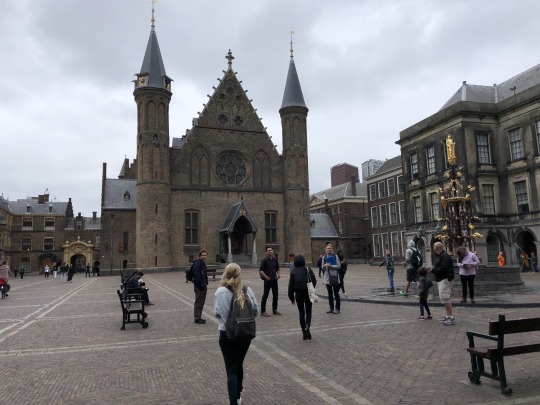
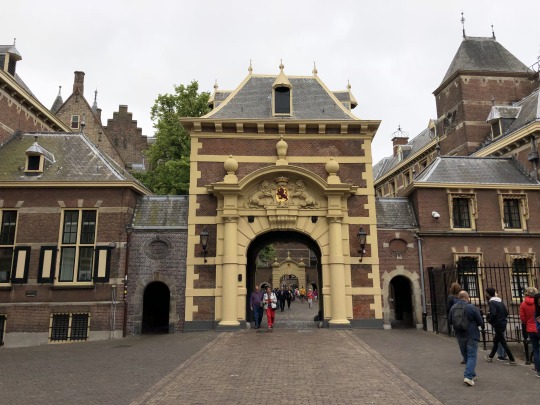
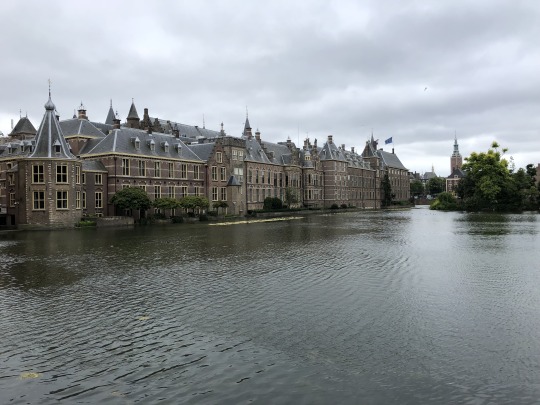
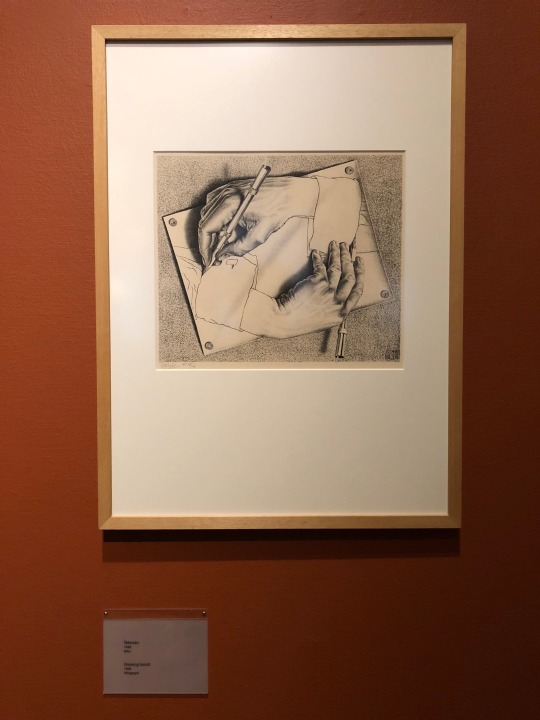
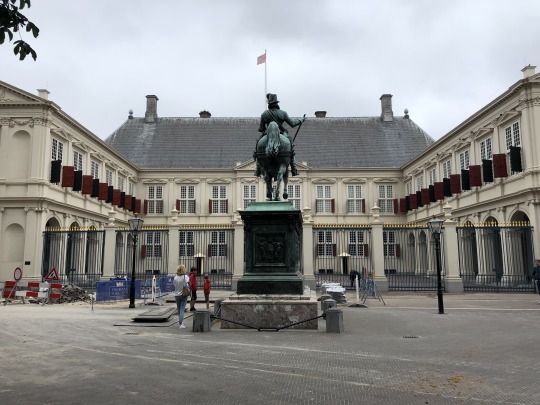
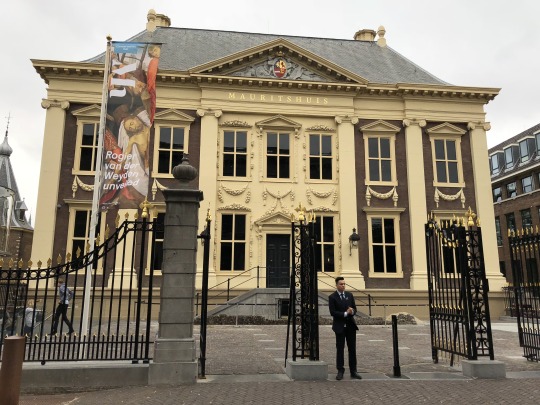
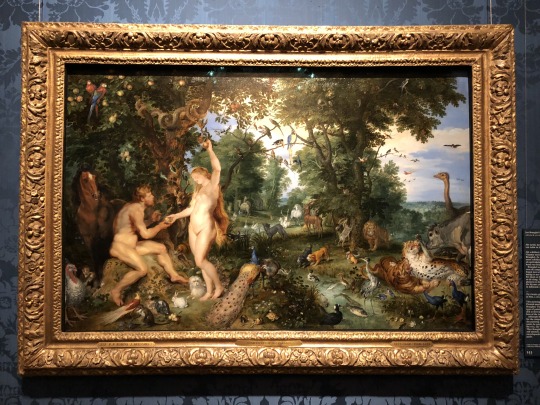
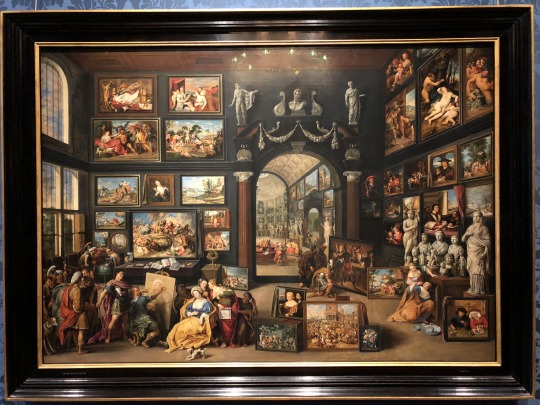
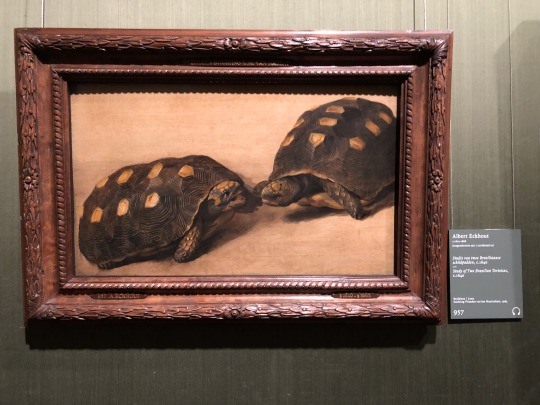
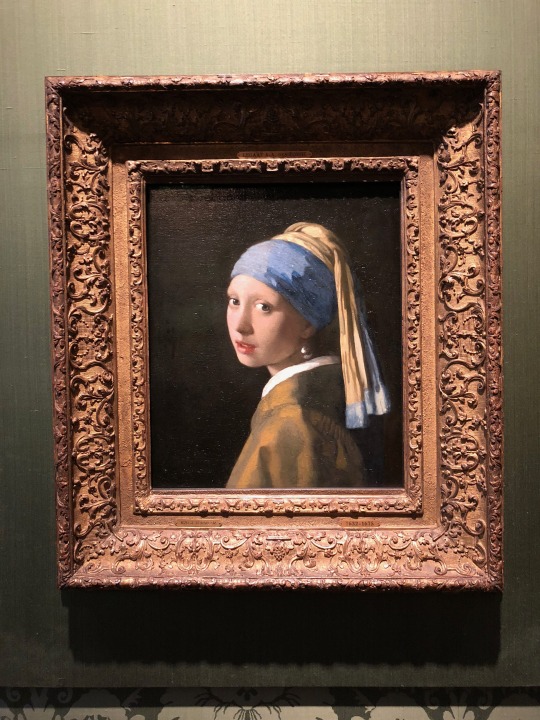
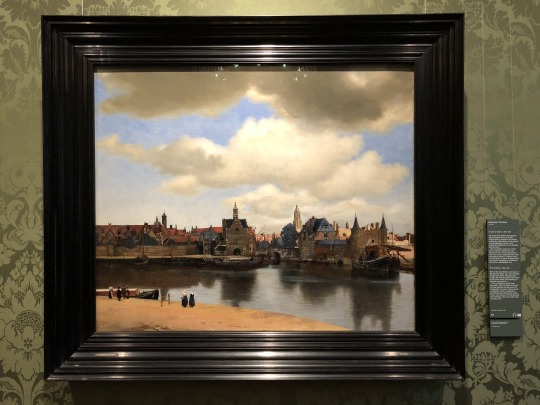
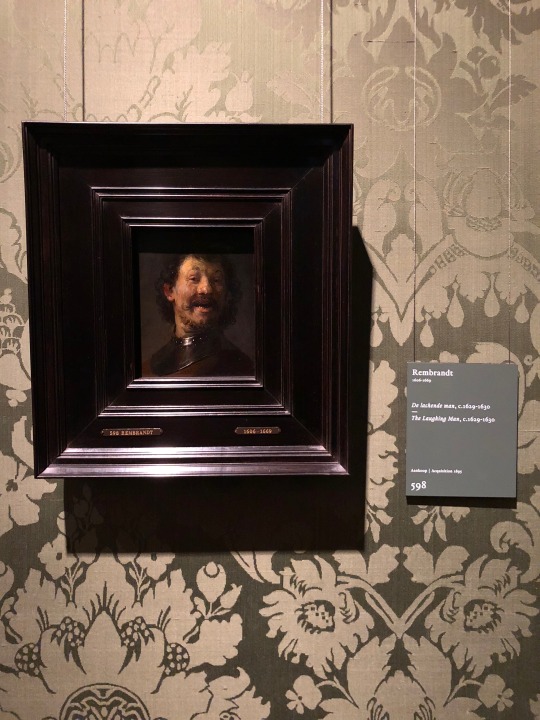
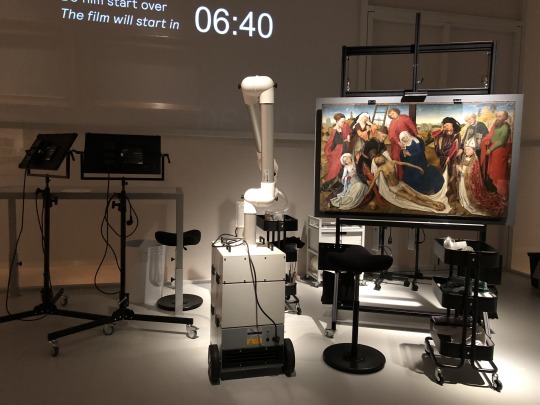
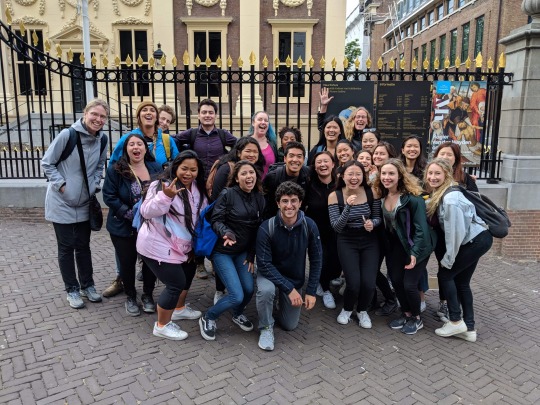
0 notes
Text
Travel Blog Post #6: 09/07/18
Hoi!
An absolutely marvelous and fun-filled weekend followed the end of the informal school week last Friday evening. An exciting night spent with good friends was followed by an equally exhilarating Saturday of activities. One of my fellow traveler friends and I spent the afternoon lounging on and exploring the carefree beach town of Zandvoort aan Zee, dividing our time between exploring the weekend flea market (which included fresh stroopwafels) and riding bikes through Zuid-Kennemerland National Park. In this area, I witnessed the vast sand dune landscape that serves as the primary barrier between the North Sea and the Dutch hinterlands. Sunday was also particularly interesting as a result of my peaceful half-day trip to the cheese town of Gouda, a beautiful and quaint community nestled in the rural Dutch heartland. Upon my return to Amsterdam that afternoon, I thoroughly enjoyed souvenir shopping for family and friends along the stretch of canals between the Bloemenmarkt (Flower Market) and the Rijksmuseum. Discussing my interests in KLM Delft Blue houses and early Dutch cartography with local vendors only added to my incredibly exploratory shopping experience.
The following morning, another activity-packed week of learning began! After a quick breakfast and early departure, the study abroad group and I walked to the nearby library where we have all of our normal lectures concerning the Netherlands. However, today was unique in that the morning began with a brief yet personal tour through the library, headed by one of the chief librarians himself!
Soon, upon our return to the library’s classroom, we began an approximately ninety-minute lecture on Dutch colonialism and maritime expansion beginning from the seventeenth century onwards. I was especially interested to discover the origins behind the present-day diversity of Dutch society. Since the Netherlands gained a reputation as an extremely tolerant nation in the early modern era, flocks of immigrants sought refuge there, oftentimes traveling from faraway lands to reach it. For instance, Portuguese Jews and persecuted Calvinists from around the European continent found in the Netherlands a nation where they could practice freedom of religion openly. This factor in combination with the expansive reach of the Dutch Maritime Empire has certainly contributed to the varied group of people you can find both in the Netherlands and abroad who not only speak Dutch but also hold extensive Dutch ancestry.
Following a short break back at the hostel accompanied by another traditional Dutch bagged lunch consisting largely of bread, the study abroad group and I made our way to the Scheepvaartmusuem, the National Maritime Museum, in order to supplement today’s lecture topic with actual primary and secondary sources. In addition to an expansive and particularly interesting collection of Blaeu maps, we were especially excited to explore both the exterior and interior of the Dutch East India Company (VOC) ship Amsterdam moored in the wharf area behind the main museum building. With separate exhibits spread across approximately three main decks, the replica ship provided us with an interactive and informative journey into the life of Dutch sailors during early modern times. However, upon further inspection of more museum exhibits, one eventually realizes a missing, yet crucial, piece of history in the museum: no true mention regarding Dutch exploitation of the East Indies and participation in the horrors of the West African slave trade. As such, the perspective of the museum appeared partially one-sided in omitting this “black page in Dutch history” (“From Colonial Past to Postcolonial Present,” 2014).
After a satisfying and long-awaited sushi dinner with friends, I settled into a relaxing evening at the hostel and am looking forward to visiting The Hague tomorrow!
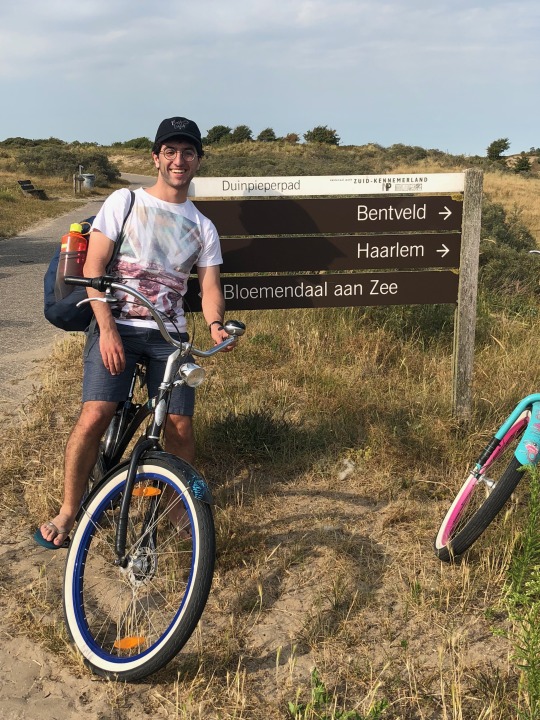
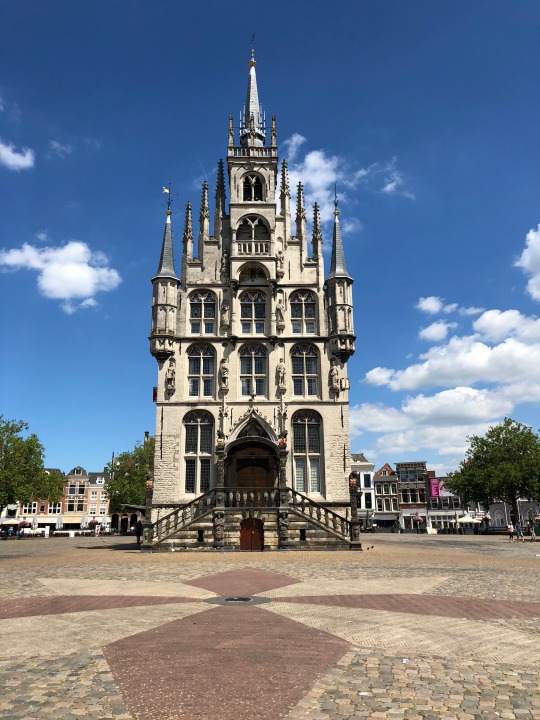
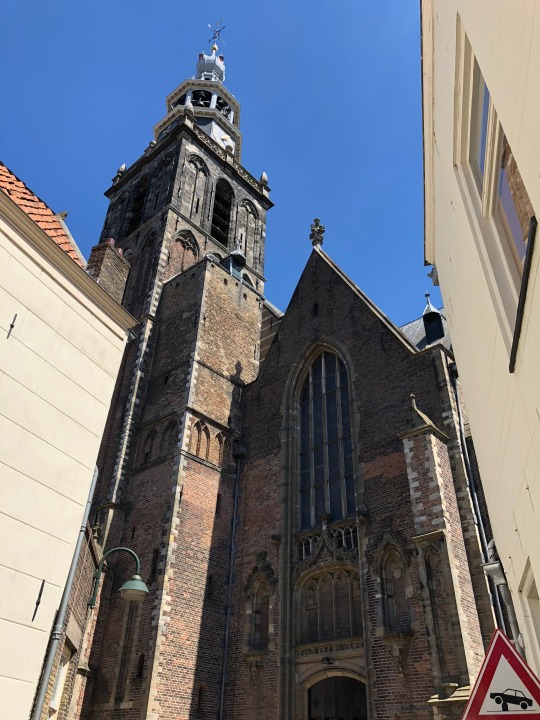
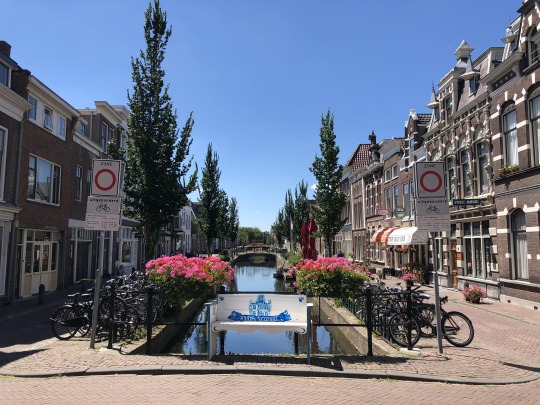
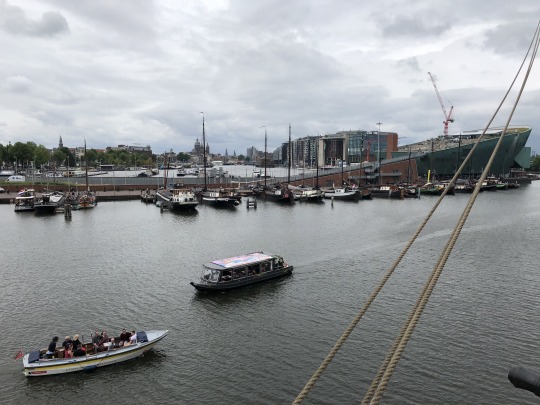
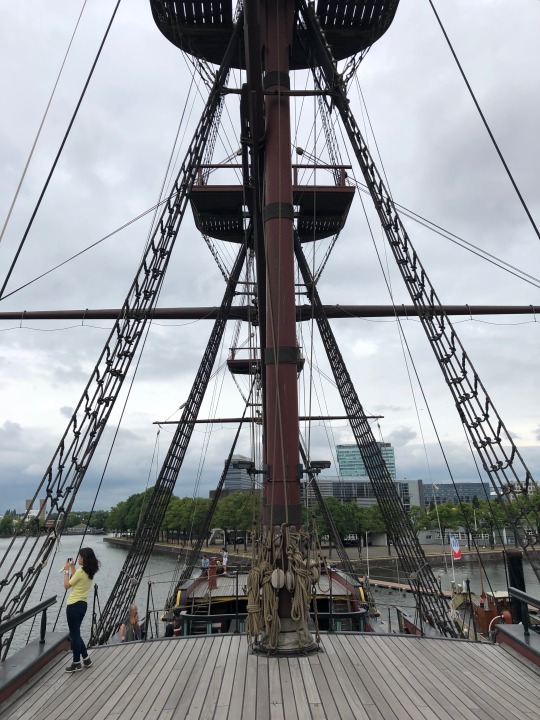
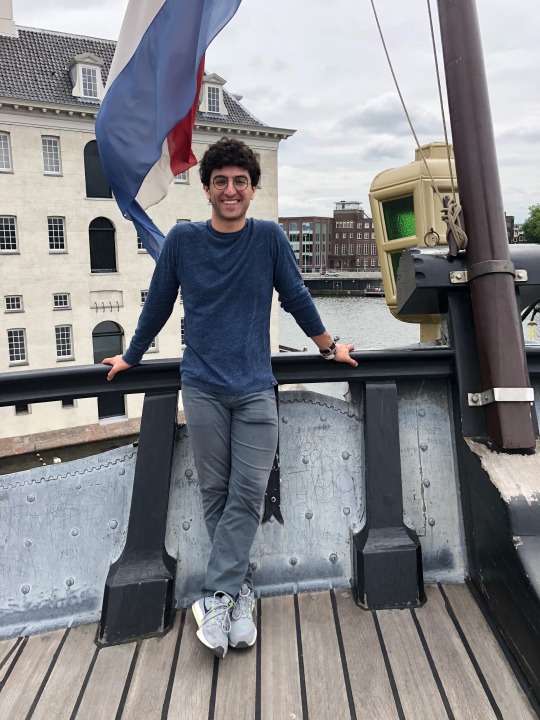
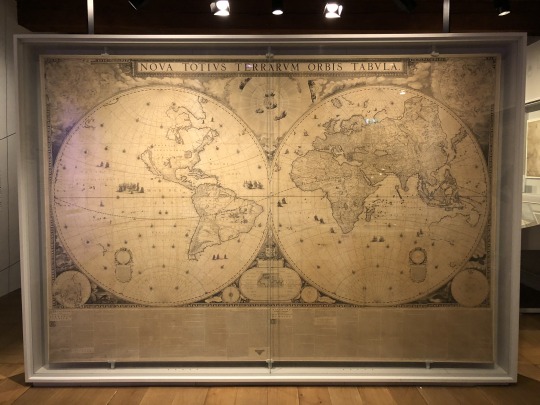
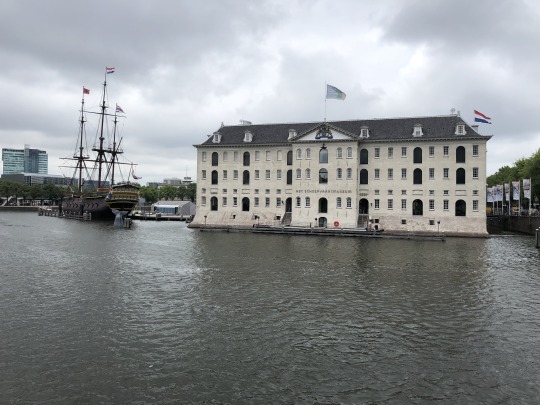
youtube
youtube
0 notes
Text
Travel Blog Post #5: 06/07/18
Hallo!
From today onwards, I plan on utilizing several more Dutch words and phrases in my daily travel blog posts because of the short yet informative beginner Dutch lesson my friends and I received today in lieu of a traditional topic-based lecture. Although I had previously attempted to rapidly pick up a few key Dutch words and phrases necessary for basic conversation, I found today’s small Dutch lecture to be especially helpful because of the clarifications I received concerning particular Dutch pronunciation and spelling. Once again, I was pleasantly surprised to discover how similar Dutch and English are to one another and was even able to see German influences on the Dutch language as well (“What Is Dutch?” 1983). I am certain that the Dutch language basics learned in today’s lesson will prove particularly helpful over the coming three weeks as the study abroad group and I traverse both the Netherlands as well as the Dutch-speaking Flemish region of Belgium: Flanders.
Hungry and in need of a midday rest, a small group of my friends and I returned to the hostel and casually enjoyed the traditional Dutch bagged lunch that we have become thoroughly familiar with over the past week. Although the majority of us have become tired of the lunch’s predictability, we most definitely appreciate the euros saved by not constantly eating out for lunch every day.
With bellies full and bodies at least slightly rested, the entire study abroad group set out for Amsterdam Centraal Station and soon boarded a train for the wonderfully quaint and historically significant city of Delft.
Upon arrival in Delft and within a few short minutes of walking towards the city center, I was immediately struck by the all-encompassing atmosphere of serenity present within this peaceful little Dutch town. Walking through the town’s narrow alleyways and along its lily pad-topped canals, I finally began to understand the Dutch word gezellig, which implies a sense of coziness and comfort. In fact, by my own observations, the local residents of Delft most definitely embodied this particularly Dutch concept. Furthermore, I plan on experiencing more gezellig Dutch scenes as the study abroad experience continues.
Regardless, the primary purpose of our study abroad group’s visit to Delft was to explore the Museum Prinsenhof (the sight of the assassination of William of Orange), the Old Church, and the New Church. After a viewing of the original two bullet holes left over from the historic assassination and a short stop at a nearby nostalgic candy shop, the study abroad group and I visited the Old Church and the New Church to view the tombs of both Johannes Vermeer and William of Orange, respectively. Both churches were incredibly sobering and interesting to me as an amateur architecture appreciator.
Following visits to the aforementioned historical spots, a small group of my friends and I sat down for a picturesque dinner at De Markt, directly in between the New Church and the Delft City Hall. Together, we enjoyed a delicious and reasonably priced three-course meal, complete with Vlaamse Frites (Flemish Fries) and a toothpaste-like tube of complimentary mayonnaise!
With the sun setting behind us, the study abroad group and I soon made our way back to the far busier Dutch capital of Amsterdam to both rest as well as finish our final travel blog post of the week.
This weekend, I plan on visiting the famous town of Gouda and perhaps even other regions of the Netherlands!
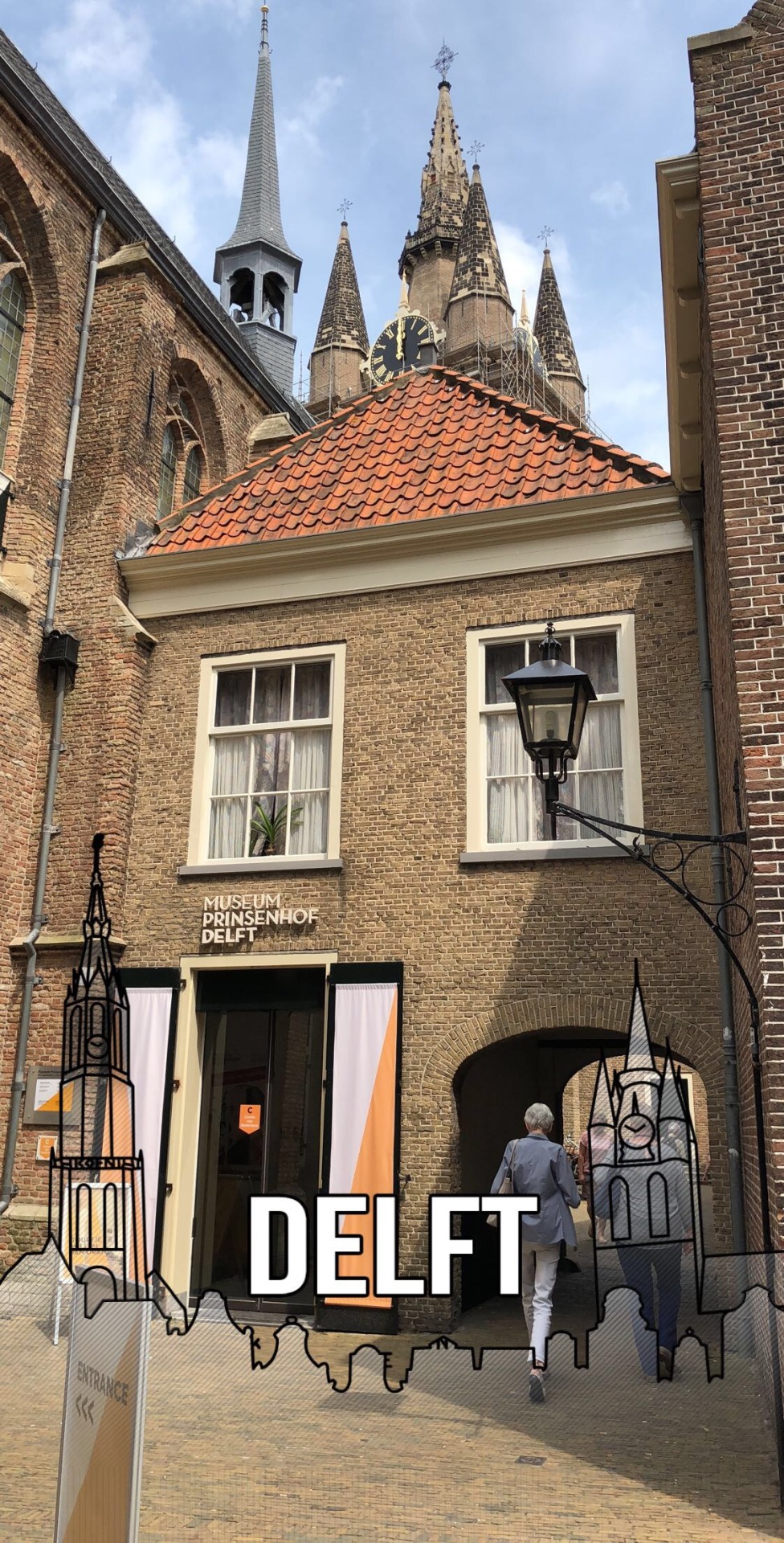
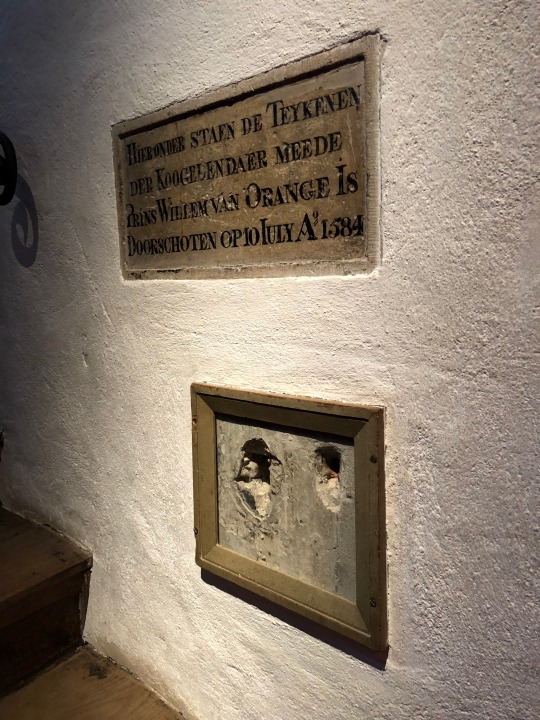
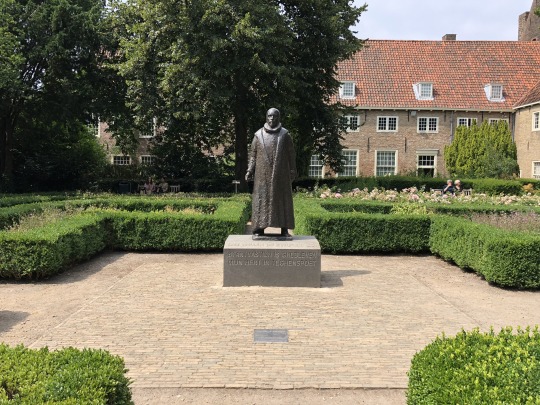
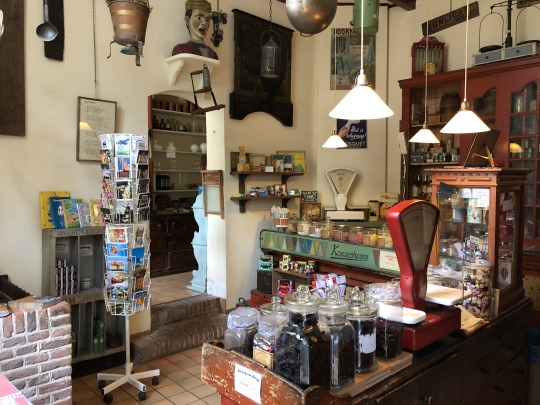
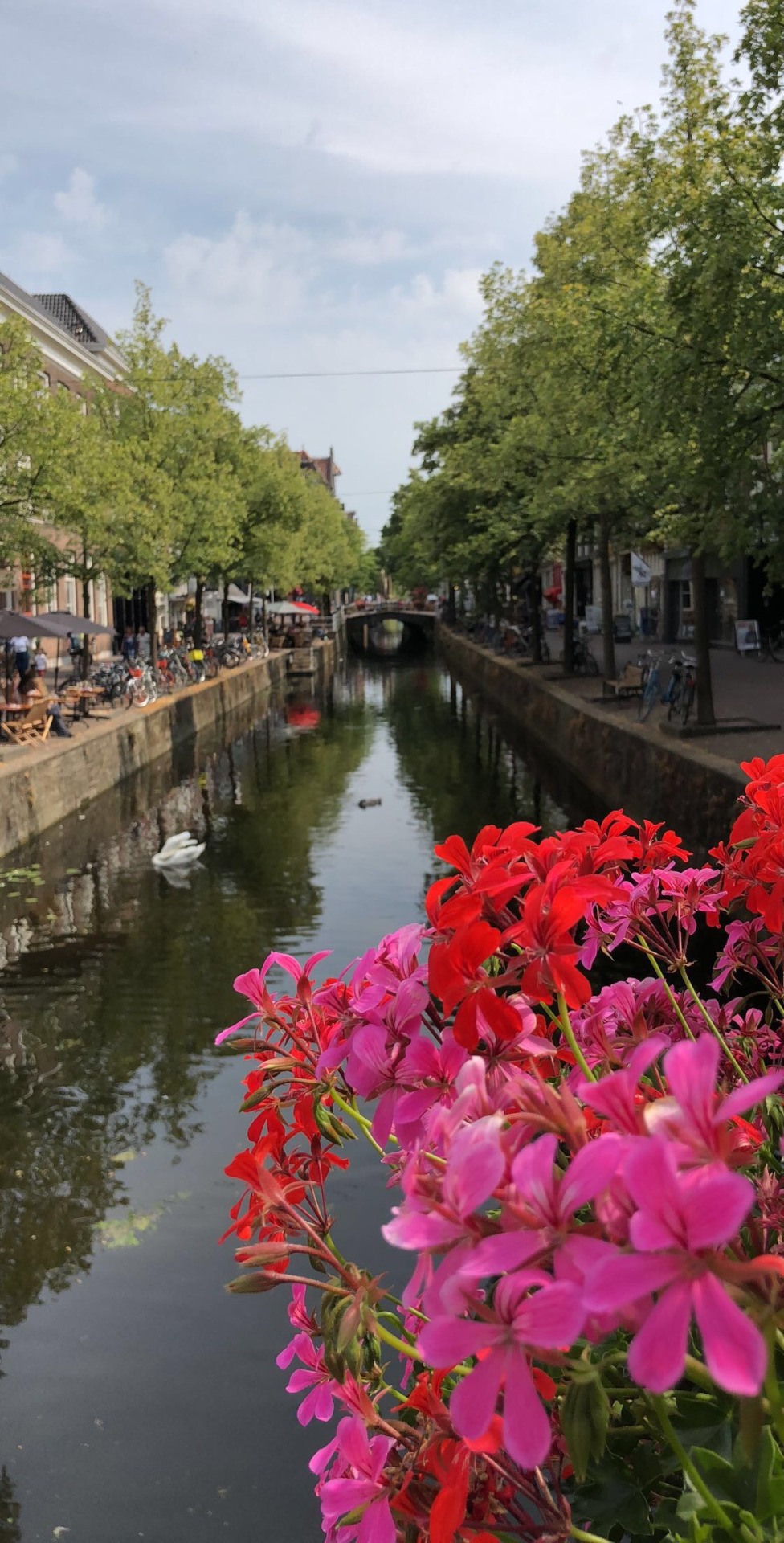
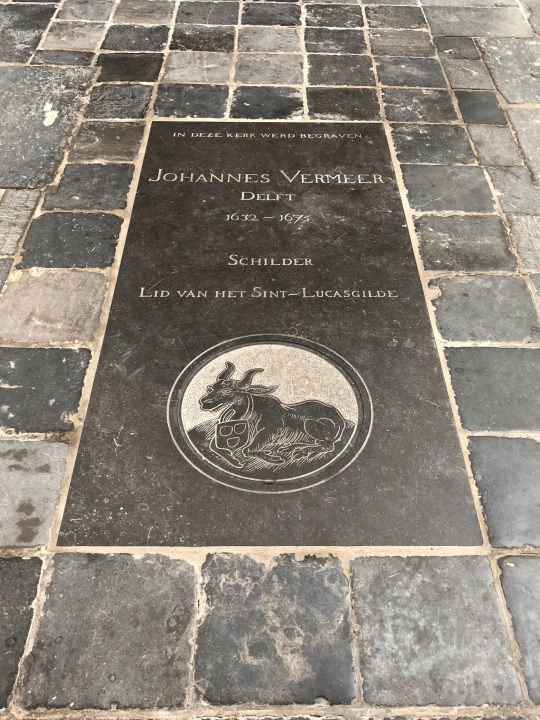
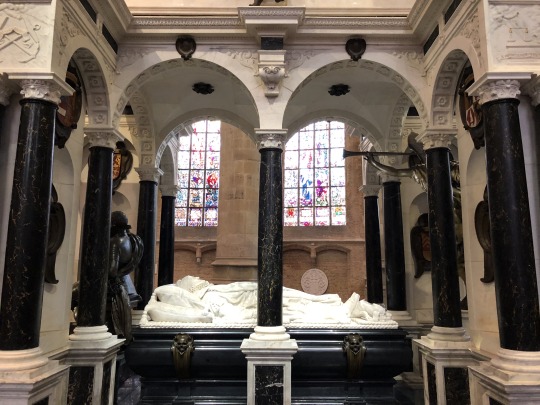
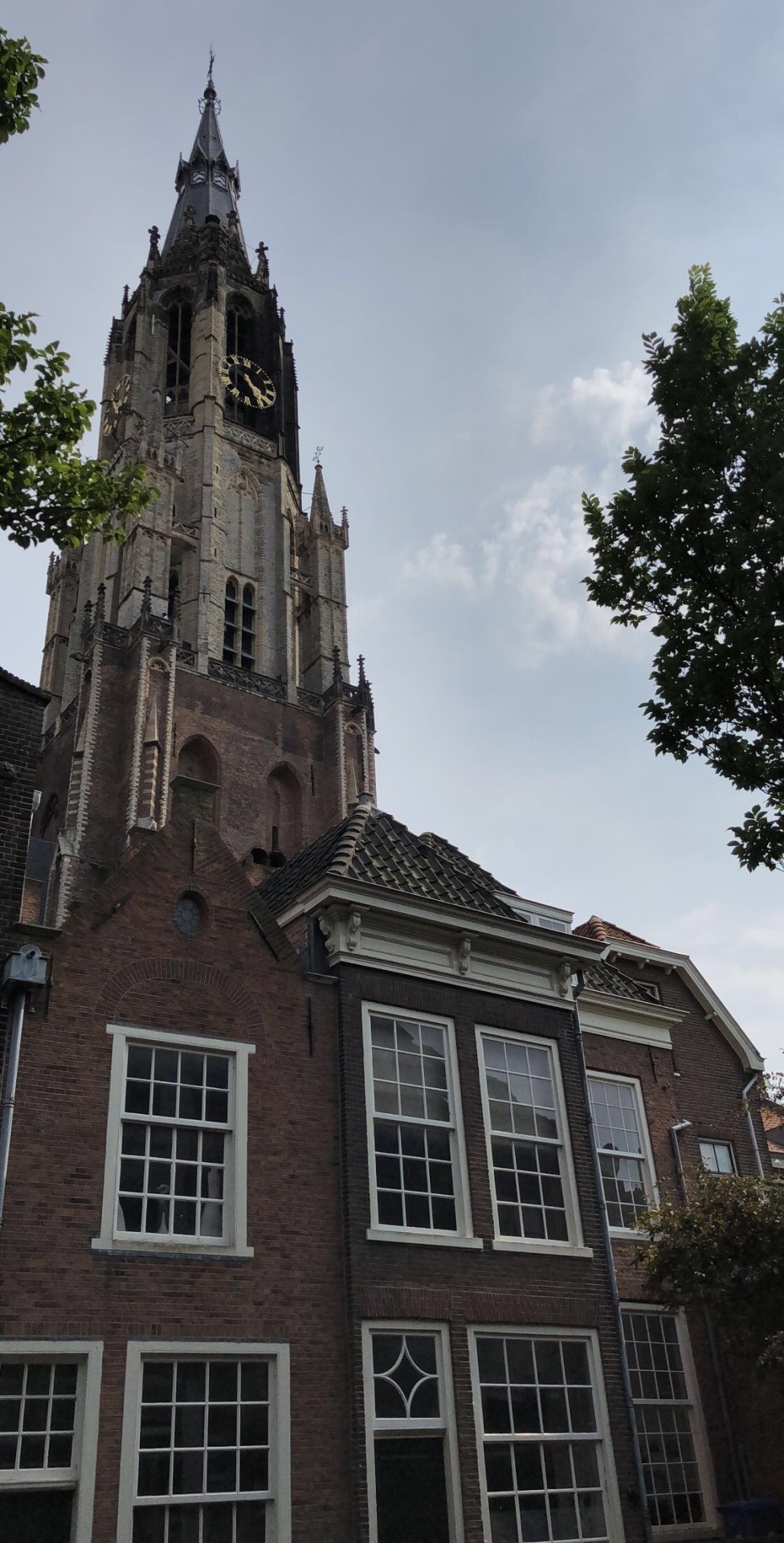
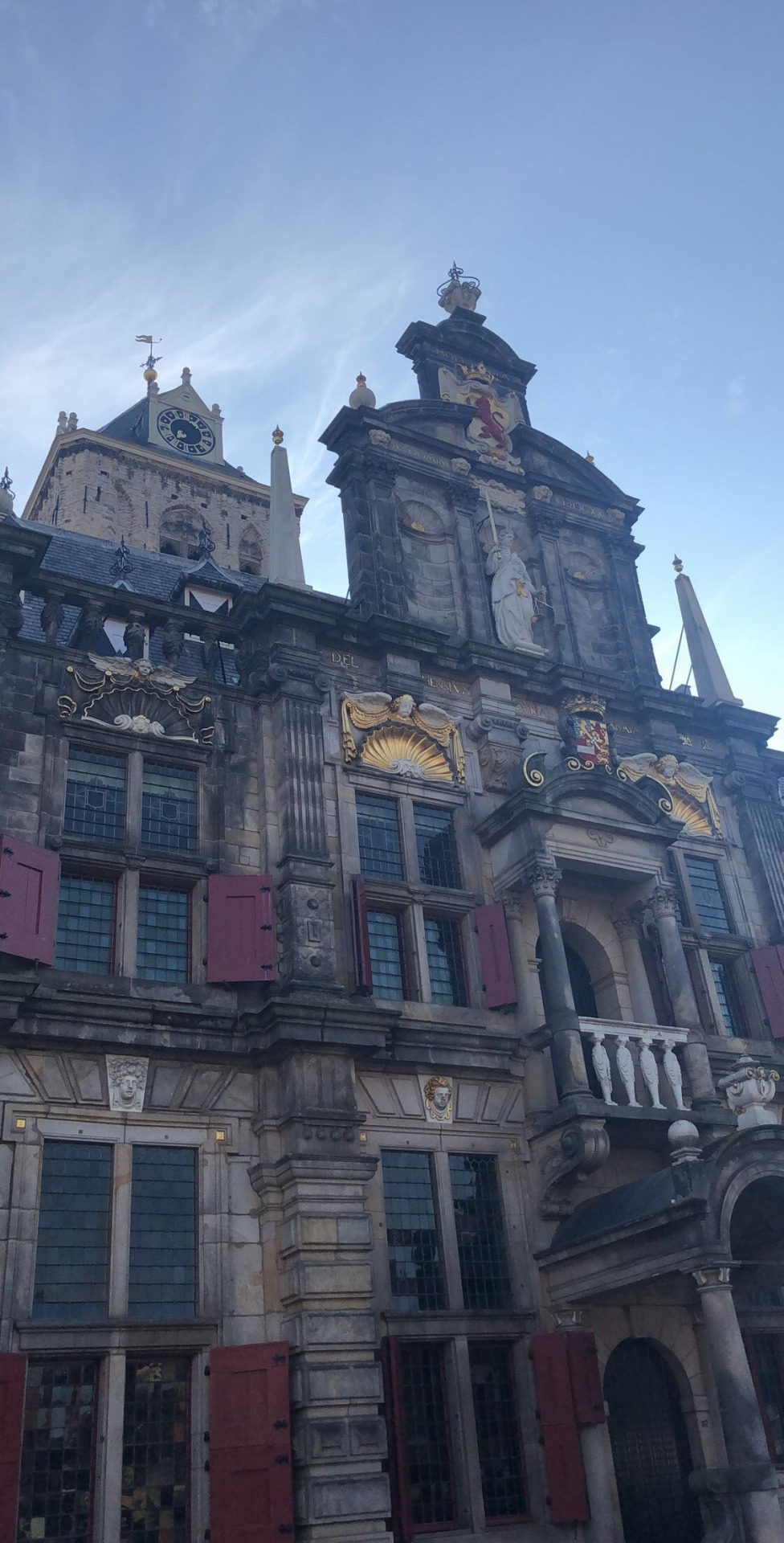
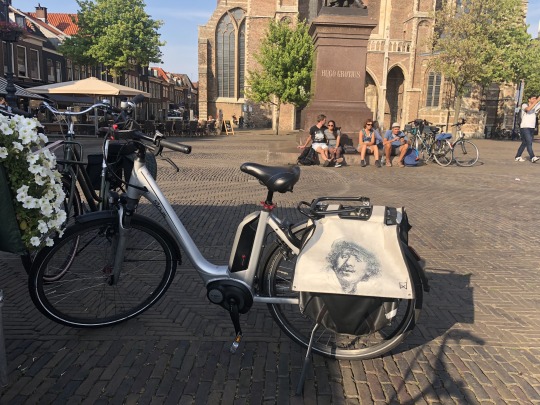
0 notes
Text
Travel Blog Post #4: 05/07/18
Goedenavond!
As is customary for many of the days of our trip to the Low Countries, today began with an educational lecture on a new topic concerning the Netherlands: Dutch art in the seventeenth-century Golden Age.
First and foremost, I found the origins behind the term “Golden Age” to be quite interesting. Although the label applies to the seventeenth-century Dutch era of political, socioeconomic, and cultural excellence, the term itself was not officially coined until the nineteenth century. It primarily arose out of an atmosphere of historical awareness dominating nations around the world at the time. Nation-building efforts and conversations concerning national and ethnic identity among nation-states, primarily in Europe, inspired the Netherlands the reevaluate certain periods of its proud past in order to foster stronger nationalism among the Dutch people. Nonetheless, though born from rather propagandistic purposes, the term “Golden Age” is quite accurate in its description of perhaps the most noteworthy period of Dutch history.
Throughout this roughly century-long period, the Dutch emerged as some of the most skilled sailors and explorers on the planet. Merchants flourished through the shrewd exploitation of international trade routes and overseas Dutch colonies (“The Golden Age,” 2014), while a plethora of Dutch scientists and inventors revolutionized the study of the natural world. In addition, a powerful Dutch navy ensured that no Dutch efforts towards increased prosperity would be thwarted by other competing European powers. In turn, such a prosperous era allowed for an explosion of unique artistic styles to emerge characterized by the work of several Dutch Masters, including Rembrandt and Vermeer. In fact, over the course of the Dutch Golden Age, Dutch artists produced nearly five million works of art!
Following a brief introduction into the history of the Dutch constitutional monarchy, a small group of my friends and I descended upon a nearby Albert Heijn supermarket to find a cheap and quick lunch to enjoy back at our hostel. With meals and drinks in hand, my friends and I departed the supermarket and leisurely made our way to the hostel, pleasantly enjoying the beautiful sunny and temperate day along the way.
After a couple of hours of rest, the study abroad group and I visited the Rijksmuseum with the primary purpose of seeing the original works of Dutch Masters that we had studied earlier in the day. Although it seemed as though every piece of art in the museum that I encountered was more stunning than the next, I was particularly blown away by a specific feature of Rembrandt’s An Old Women Reading, Probably the Prophetess Hannah: the painting’s figure’s hand. I have always been stunned by the mastery and amount of detail exhibited in Rembrandt’s works, but the hands in this particular painting were truly outstanding. The light coming from behind the old woman illuminates the book and her hand so vividly that one feels as though one could simply reach out and touch the exposed and ruffled skin. I find that Rembrandt himself excels particularly well in accentuating such fine details within the human form and simultaneously connects their presence with various symbolic meanings.
Following this extensive museum visit, a small group of friends and I visited a nearby Dutch pancake house for a sweet, savory, and delicious snack! As evening falls, I find myself looking forward to our visit to the iconic city of Delft tomorrow afternoon!
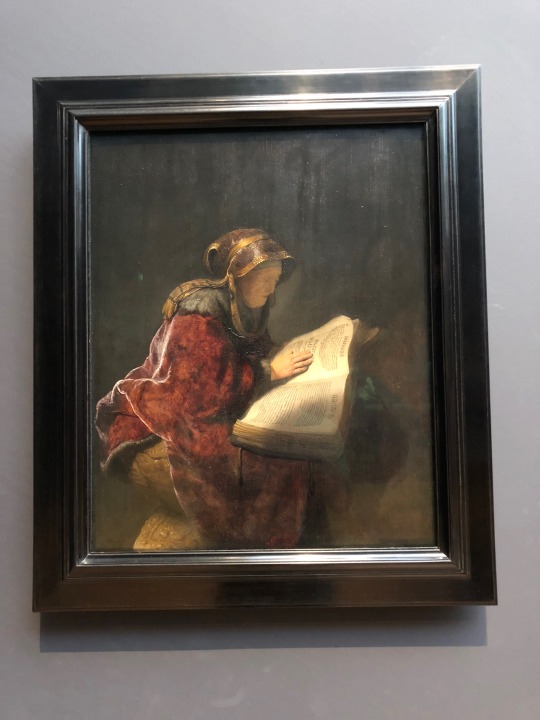
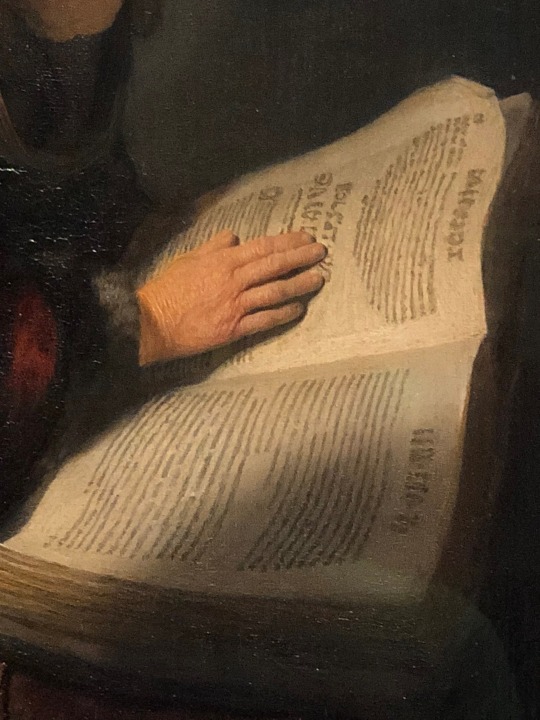
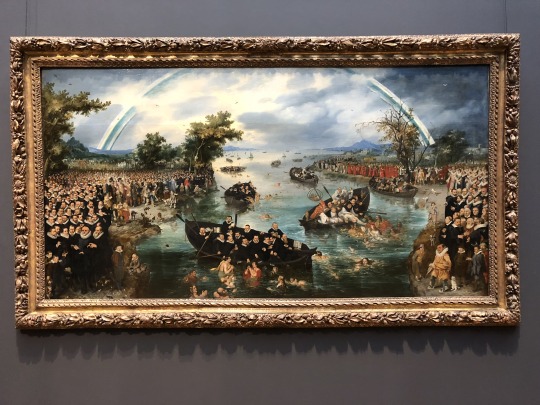
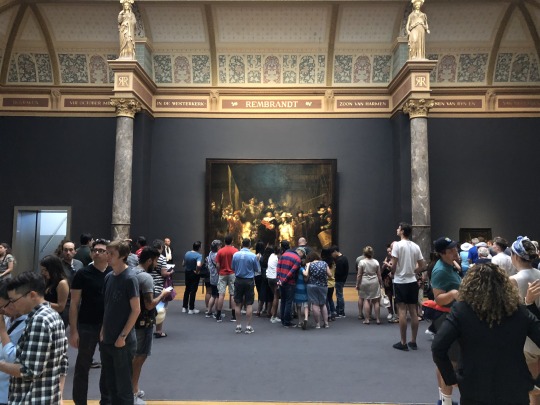
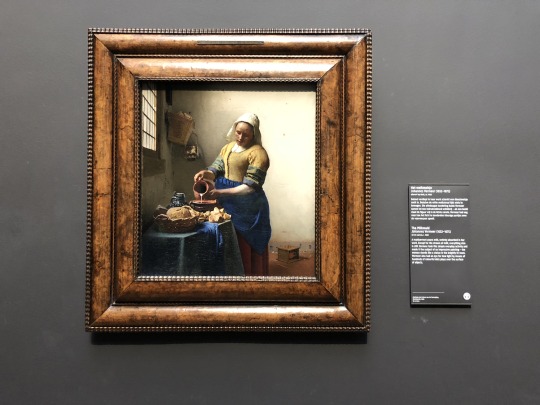
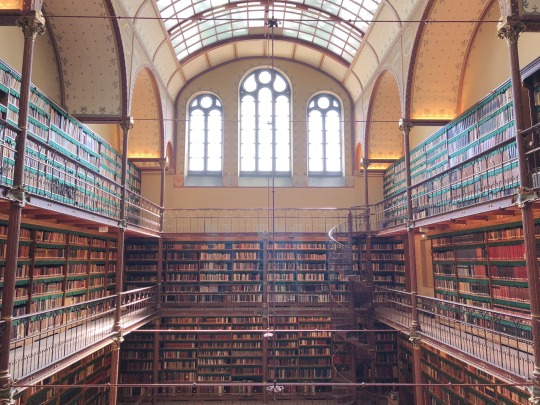
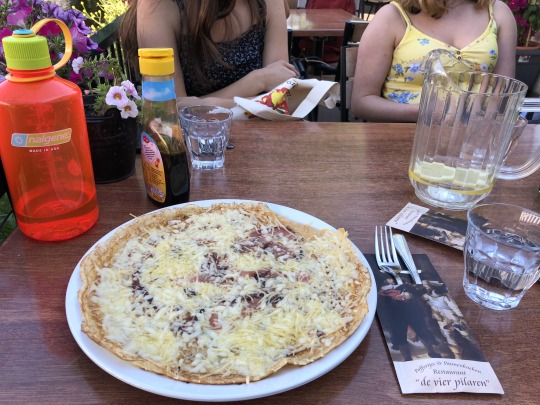
0 notes
Text
Travel Blog Post #3: 04/07/18
Hoi!
Another morning means another bright start to a new day in the Netherlands. However, this morning was especially significant because of it being the Fourth of July, American Independence Day! Interestingly enough, this year marks the second year in a row that I myself have been abroad on the day of my home country’s birth! Nevertheless, I was sure today would be another exciting day in Europe!
Following a short tram ride from Leidseplein to Amsterdam Centraal Station, my study abroad group and I boarded a direct train to the nearby university town of Utrecht. In addition to the normal sights of numerous cyclists and canals, we also observed several flat green plains along the way, each complete with a handful of dairy cows and a lone windmill in the distance. Such sights reflected the traditionally pastoral image of the Netherlands that I had often envisioned prior to visiting the Low Countries.
After walking from Utrecht’s central station to the most picturesque of the University of Utrecht’s three campuses, I and my fellow Berkeley students settled into our lecture seats accompanied by complimentary tea, coffee, and cake. Following a short introduction to the university and city of Utrecht, Jaap Verheul, a professor at the University of Utrecht, delivered an incredibly fascinating lecture on the American perception of the Netherlands over time, beginning with the founding of the United States and stretching into present times. I personally found the early negative opinions regarding the Netherlands expressed by America’s founding fathers to be particularly interesting. Such anti-Dutch sentiment largely stemmed from initial attempts by noteworthy Americans, like John Adams, to garner support for their revolt against the British through both Dutch funding and political expertise. Although the Netherlands eventually provided such support and became the first nation to recognize the United States’ sovereignty following independence, such early periods of friction came to define American perceptions of the Netherlands for nearly three fourths of a century before Romantic era writers like Henry Wadsworth Longfellow and John Lothrop Motley utilized pastoral images of Dutch life as well as the parallels between the American Revolution and the Dutch Revolt, respectively, to reignite the topic of the Netherlands more positively in the American psyche, hence paving the way for “Holland mania” to take hold by the late nineteenth century.
Soon afterwards, following a brief introduction to available Utrecht University degree programs for prospective Americans as well as a short foray into the average Dutch university student experience, my fellow Golden Bears and I set out on a guided walking tour of Utrecht itself. Immediately upon walking the quaint streets and canals of the town, I noticed how remarkably quiet and serene Utrecht was in comparison to the nonstop chaos of Amsterdam. Experiencing such a stark contrast between cities in two relatively close Dutch cities has made me realize how different regions and areas of the Low Countries can be in relation to one another. In addition, the tour guide’s frequent references to the conversion of the city’s originally Catholic churches into Calvinist and Protestant houses of worship reminded me of the historical rift between these two Christian sects that has existed since the Netherlands’ first efforts to break away from the Spanish Empire in the late sixteenth century (“The Dutch Golden Age: The Historical Dimension,” 2002).
Tired and in need of refreshment, a small group of us eventually came upon a beautiful open-air café directly across from the Dom Tower at which we were able to rest and relax for several hours following a lengthy tour of Utrecht.
Up Next: The Rijksmuseum!
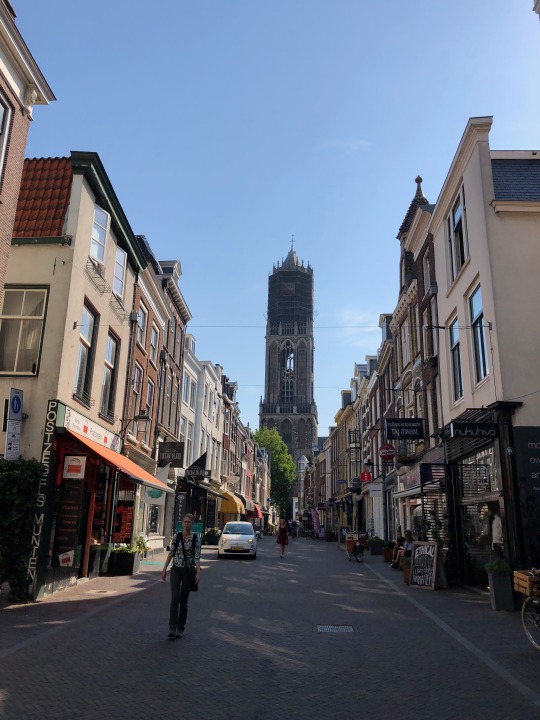
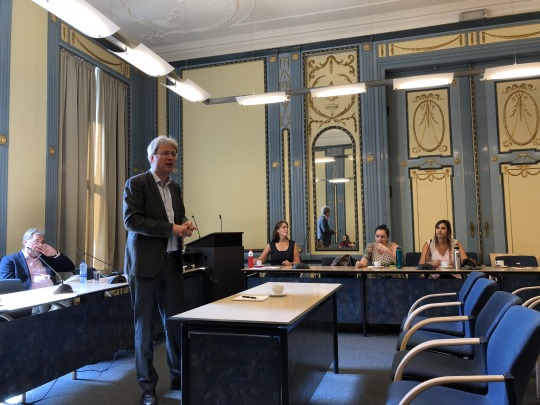
youtube
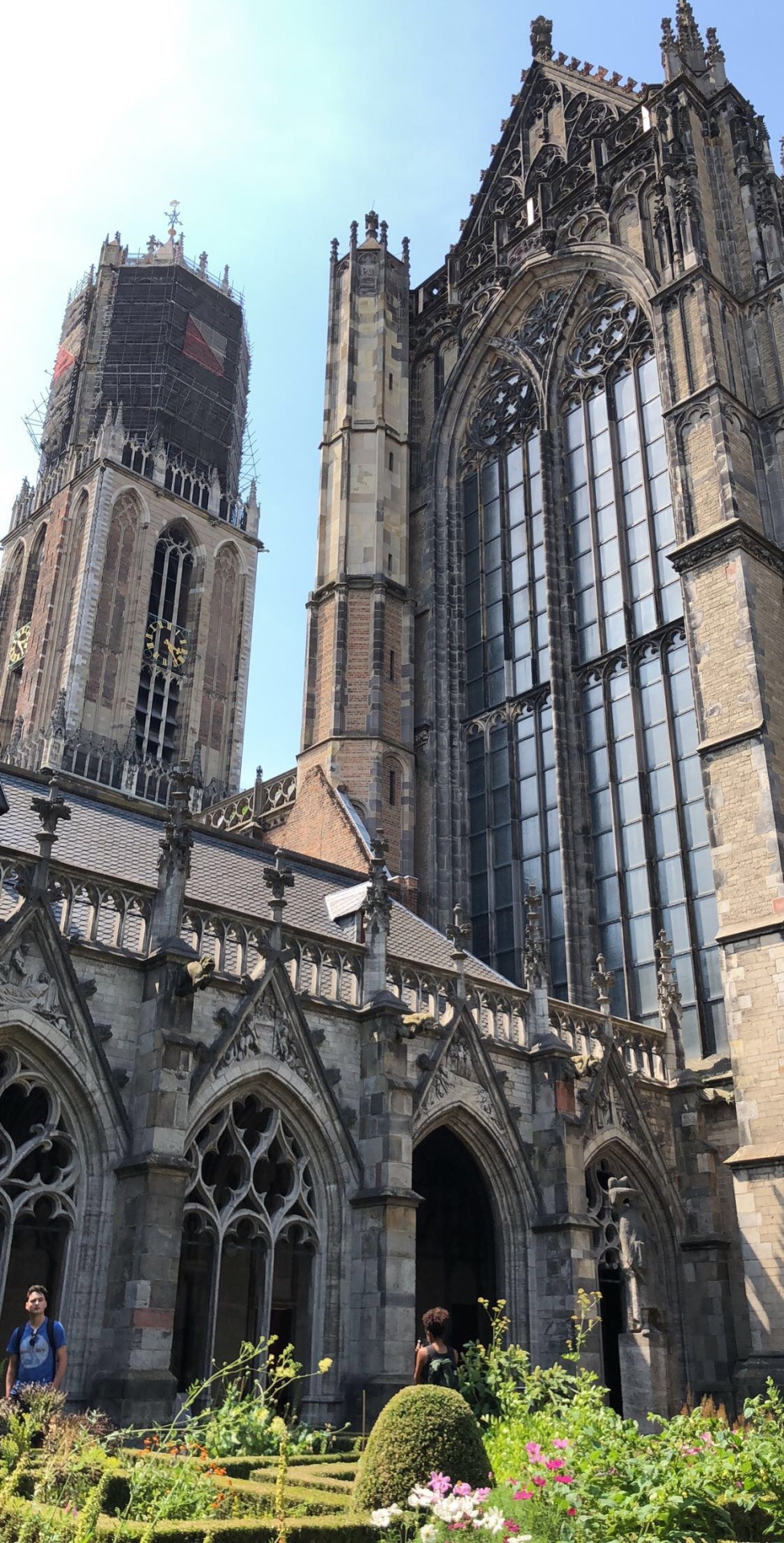
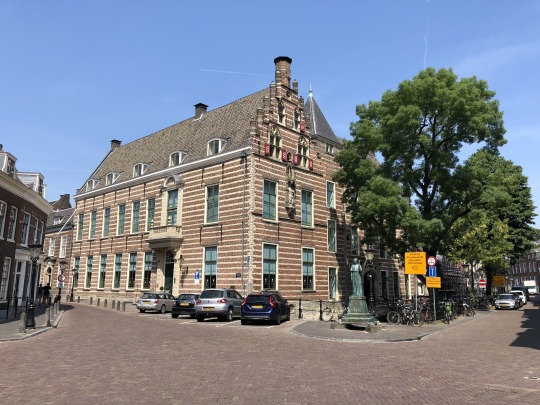
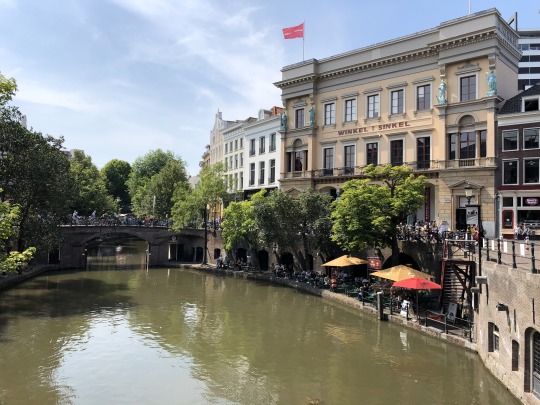
0 notes